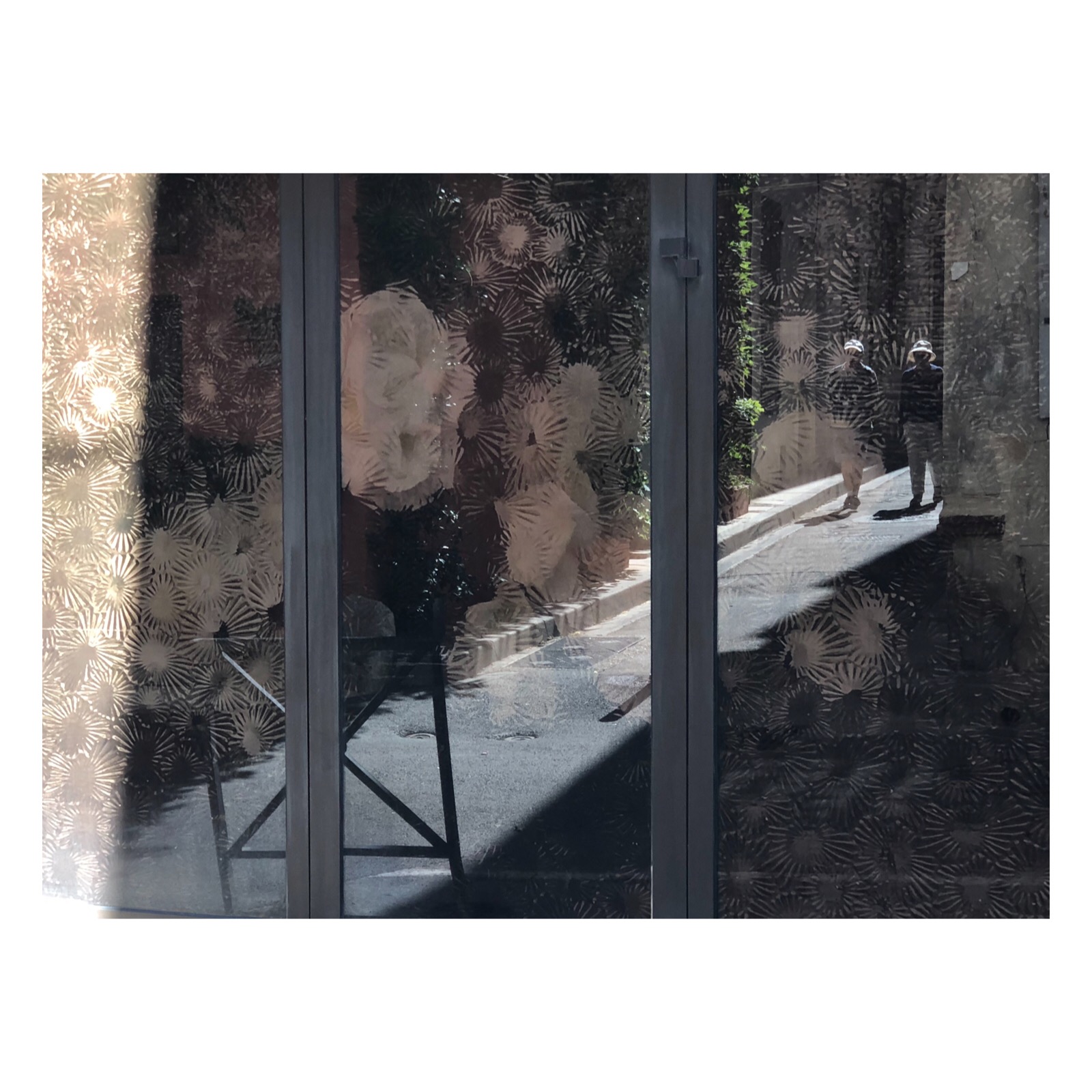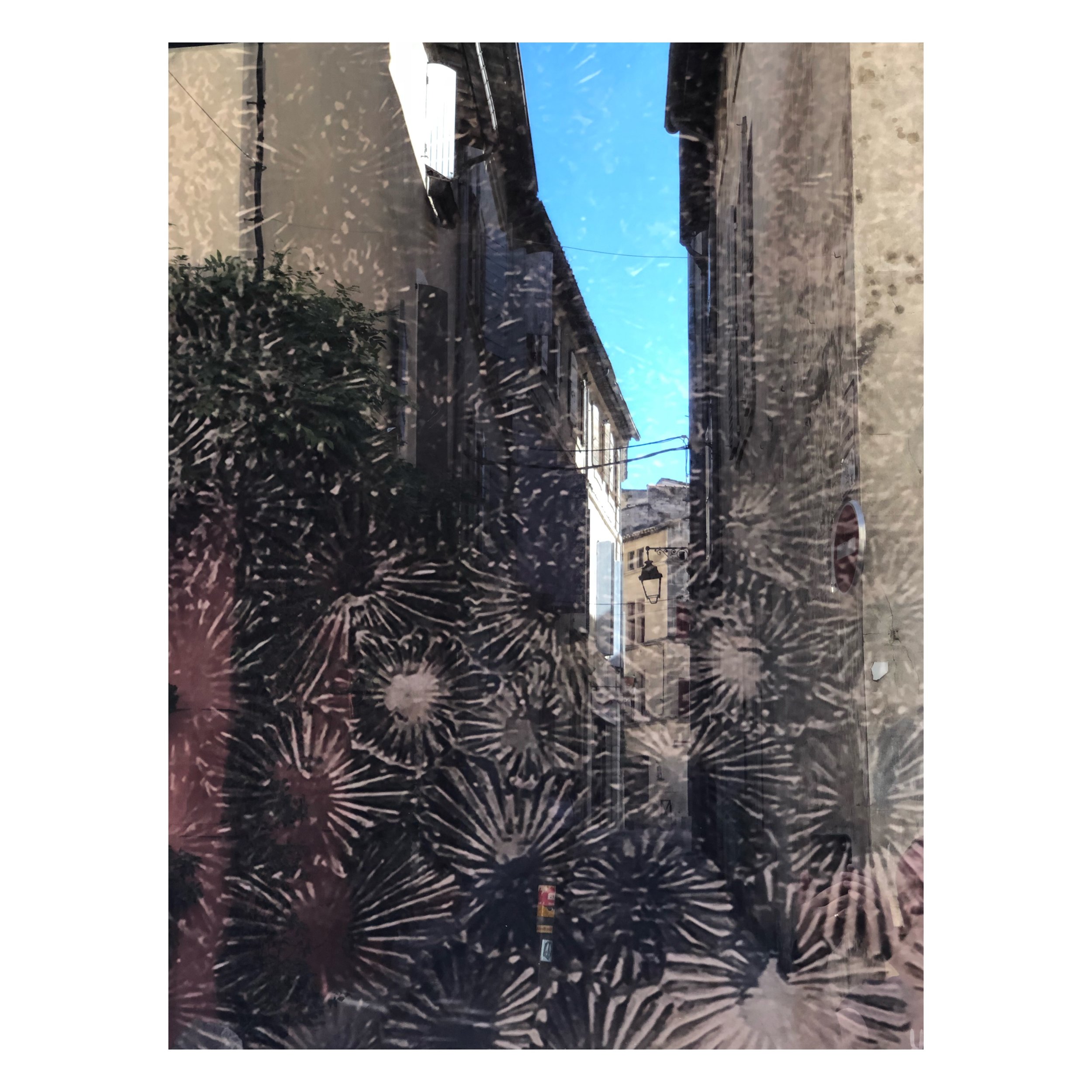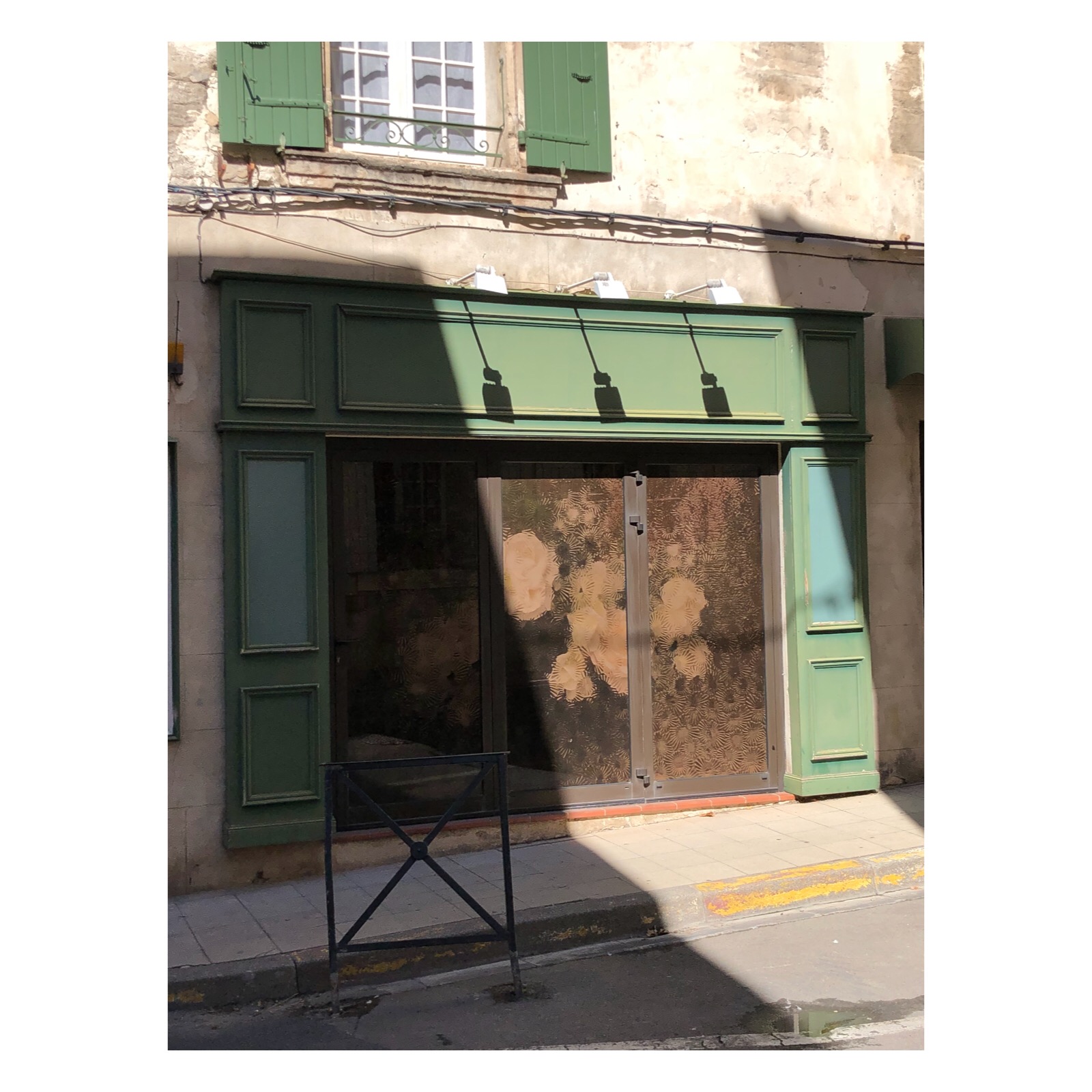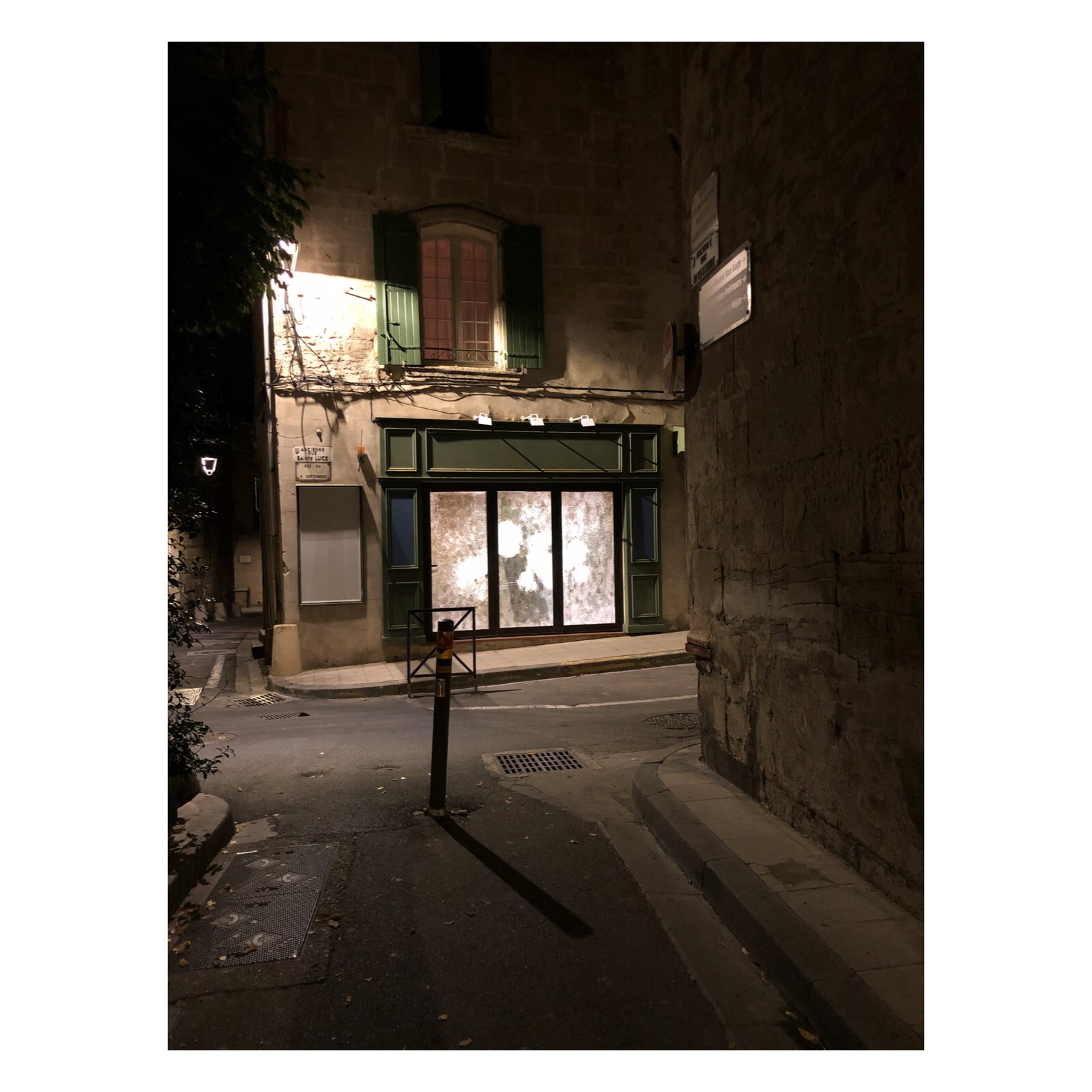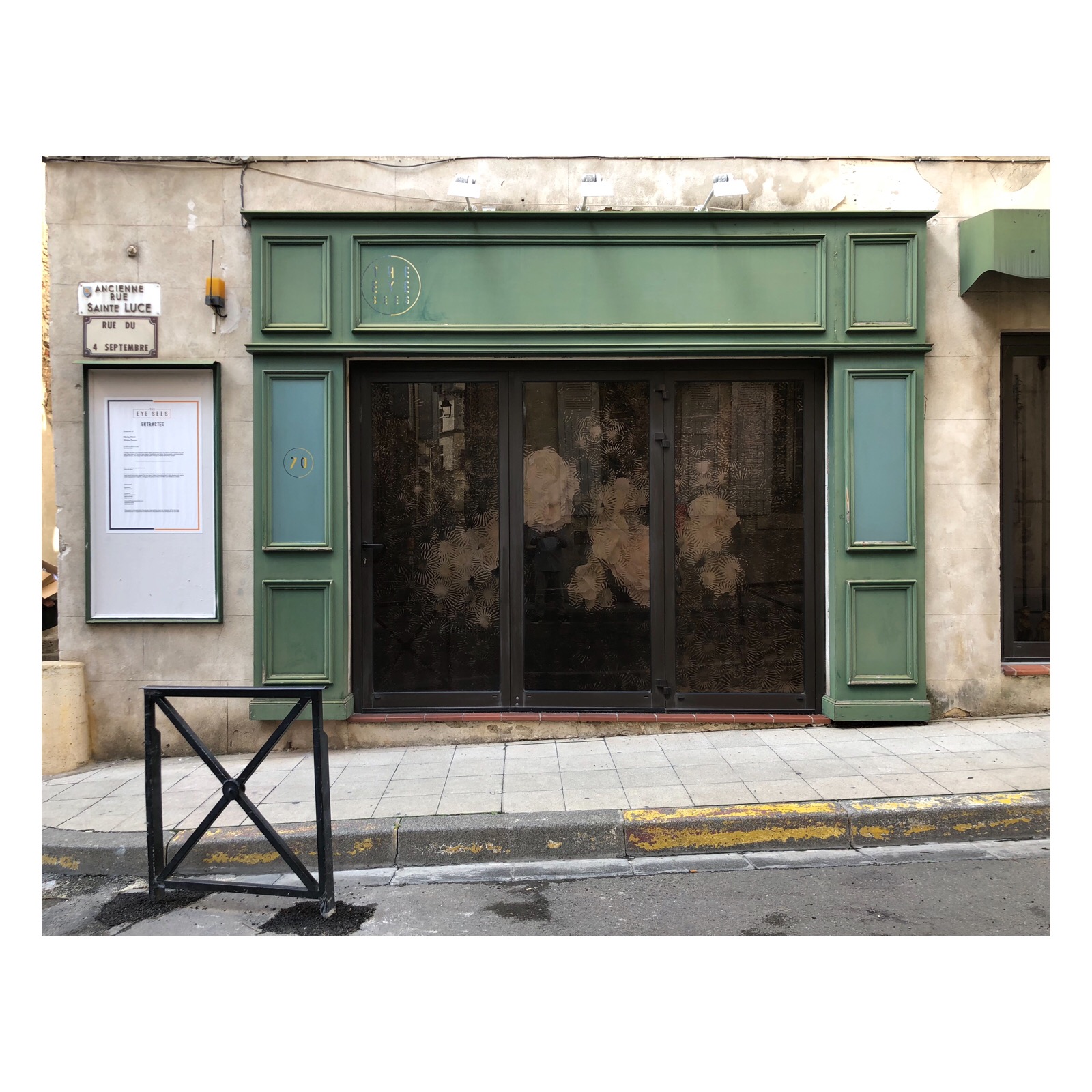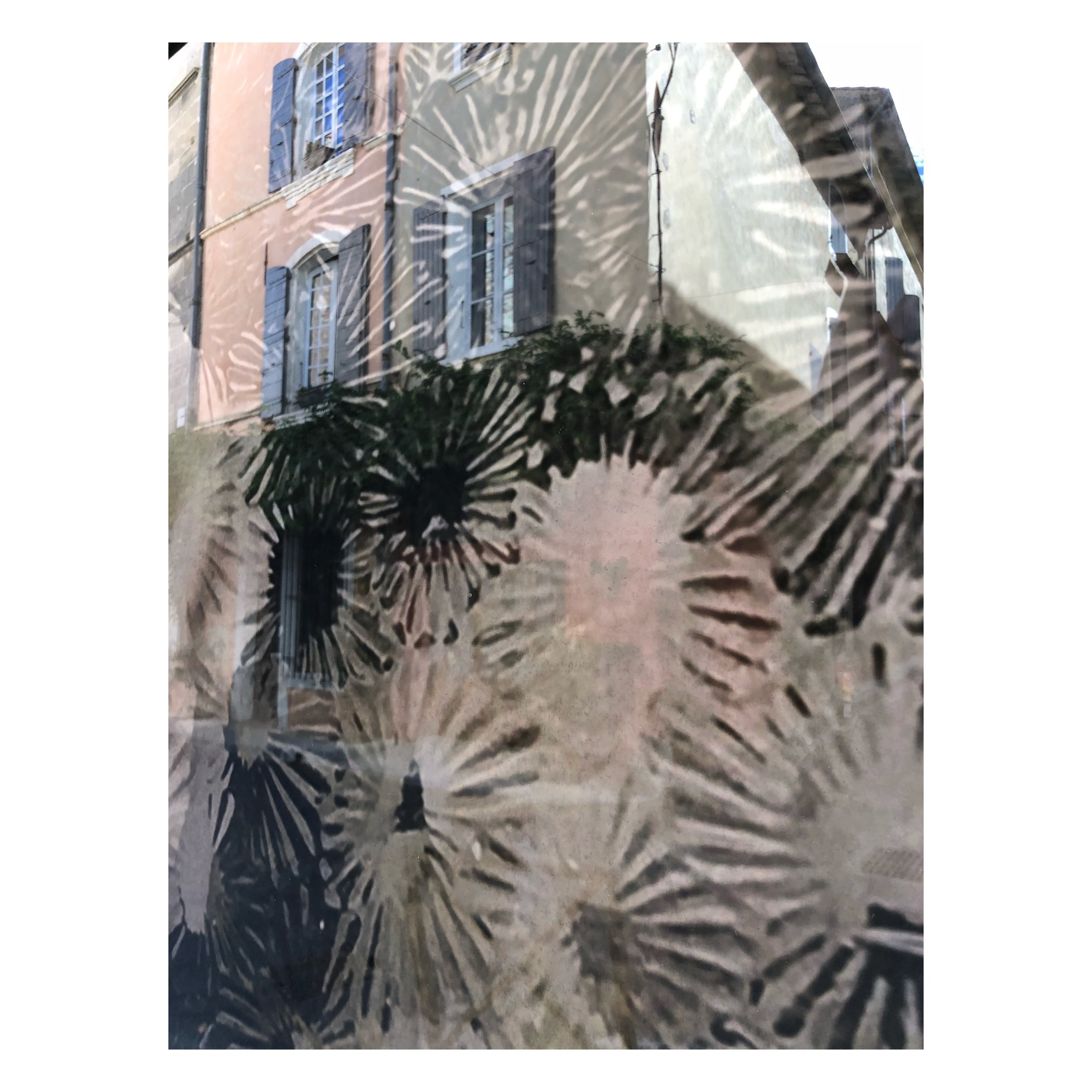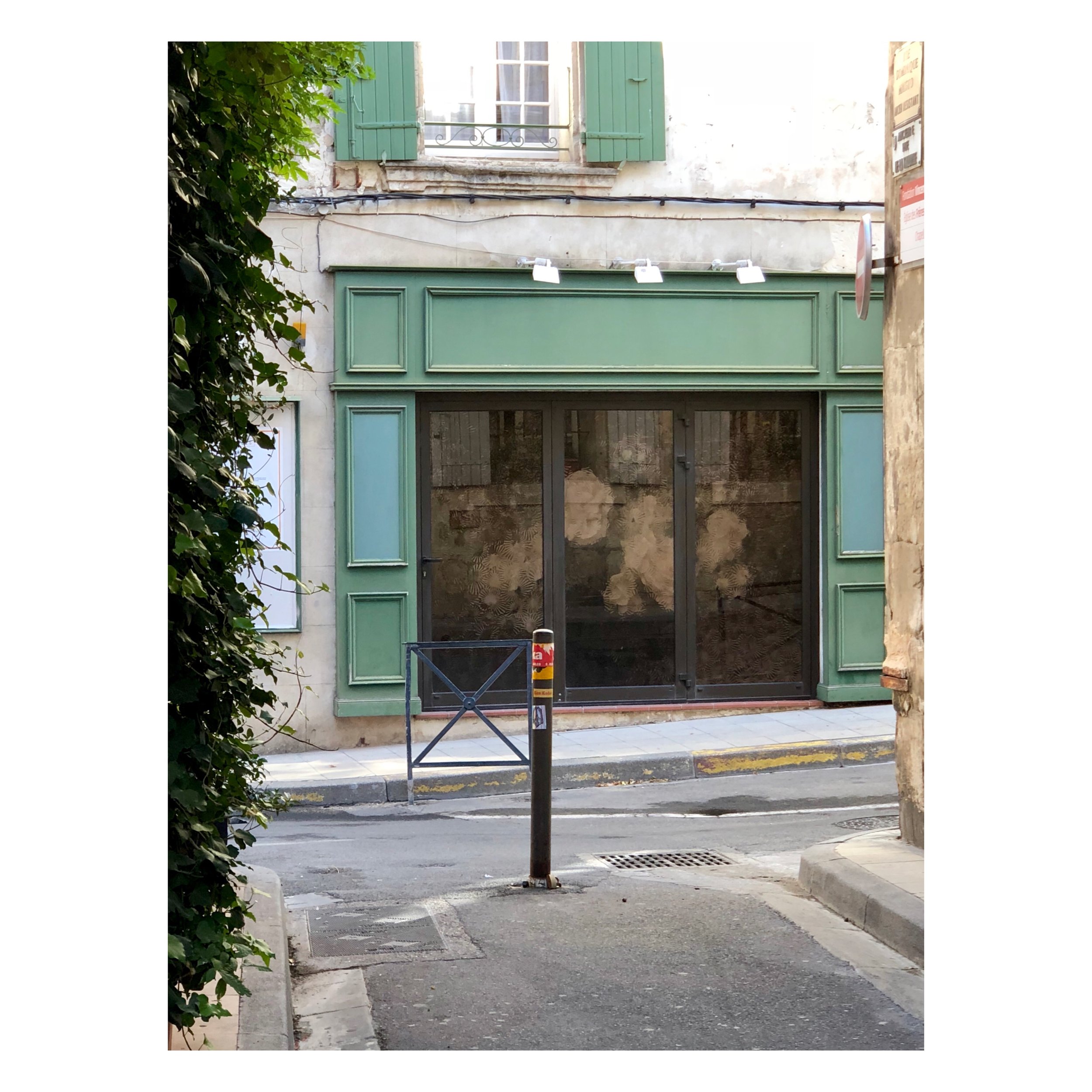Entractes25 - Eva Stenram - Repose - 10.09.22 / 29.10.22
La vitrine divisée en trois sections de The Eye Sees a été la source d’inspiration d'Eva Stenram pour créer sa nouvelle œuvre, Repose (Zig-Zag Girls).
L'illusion Zig-Zag Girl est un tour de magie où le magicien divise le corps d'une femme en trois - un peu comme le célèbre tour "scier une femme en deux alors qu'elle est dans une boîte".
Repose (Zig-Zag Girls) commence avec une photographie de pin-up vintage. Stenram a modifié numériquement cette photographie en effaçant en grande partie les corps des deux modèles et en ne laissant que leurs jambes intactes.
L'idée de «présentation» est au cœur de l'œuvre: la vitrine de magasin; le spectacle du magicien; le rôle de la femme exposée à la fois dans l'imagerie pin-up et en tant qu'assistante pour le spectacle du magicien.
L'image qui en résulte est macabre (les membres coupés ne sont plus séduisants et l'effet érotique original est renversé) et fait écho à la morbidité de la violence sous-jacente dans l'illusion magique.
Face à l’œuvre, on pourra essayer de reconstituer la position d'origine du modèle, ou peut-être accepter ces parties de corps de femmes comme des objets de décoration intérieure absurdes ou des accessoires.
Eva Stenram (née en 1976) a étudié à Londres à la Slade School of Art et au Royal College of Art. Originaire de Suède, elle vit et travaille actuellement à Berlin. Sa pratique artistique tourne autour de la photographie et de la post-production. En traitant les images photographiques comme des données ou des matières premières à creuser et à traiter, elle soumet le matériel d'archives à diverses techniques de reproduction et de montage, réimaginant et reconfigurant ainsi les symboles et les idéologies en jeu dans le matériau source. Les œuvres de Stenram font partie de collections importantes telles que Victoria & Albert Museum (Royaume-Uni), Moderna Museet (SE), LACMA (États-Unis) et Tate Gallery (Royaume-Uni). En 2019, elle a été sélectionnée comme l'une des 100 héroïnes de la photographie mondiale contemporaine par la Royal Photographic Society au Royaume-Uni. Son exposition personnelle Cadastral est actuellement présentée au Fotografisk Center de Copenhague.
~~~~~~~~~~~~~~~~~~~~~~~~~~~~~~~~~~~~~~~~~~~~~~~~~~~~~~~~~~~~~~~~~~~~~~~~~~~~~~~~~~
The way that The Eye Sees window space is divided into three parts became the inspiration for Eva Stenram to create her new work, Repose (Zig-Zag Girls).
The Zig-Zag Girl illusion is a magic trick where the magician divides a woman’s body into thirds — much like the famous ‘sawing a woman in half whilst in a box’ trick.
Repose (Zig-Zag Girls) uses a vintage pin-up photograph as its source material. Stenram has digitally altered the pin-up photograph by obliterating most of the two models and leaving only (parts of) the legs intact.
The idea of ‘display’ is central to the work: the storefront window; the magician’s show; the role of the woman on display in both pin-up imagery and as an assistant for the magician’s show.
The resultant image is macabre (the severed limbs no longer entice and the original erotic effect is turned on its head) and echoes the morbidity of the underlying violence in the magic illusion.
Viewers may try to piece together the original position of the model, or perhaps accept the women’s body parts as either absurd interior decorations or props.
Eva Stenram (b. 1976) studied in London at the Slade School of Art and the Royal College of Art. Originally from Sweden, she currently lives and works in Berlin. Stenram’s art practice revolves around photography and post-production. By treating photographic images as data or raw material to be excavated and processed, she subjects archival material to various reproduction and montage techniques, thus re-imagining and reconfiguring the symbols and ideologies at play in the source material. Stenram’s works are included in prominent collections such as Victoria & Albert Museum (UK), Moderna Museet (SE), LACMA (US) and Tate Gallery (UK). In 2019 she was selected as one of the 100 Heroines of contemporary global photography by The Royal Photographic Society in the UK. Her solo exhibition Cadastral is currently on display at Fotografisk Center in Copenhagen.
www.evastenram.net
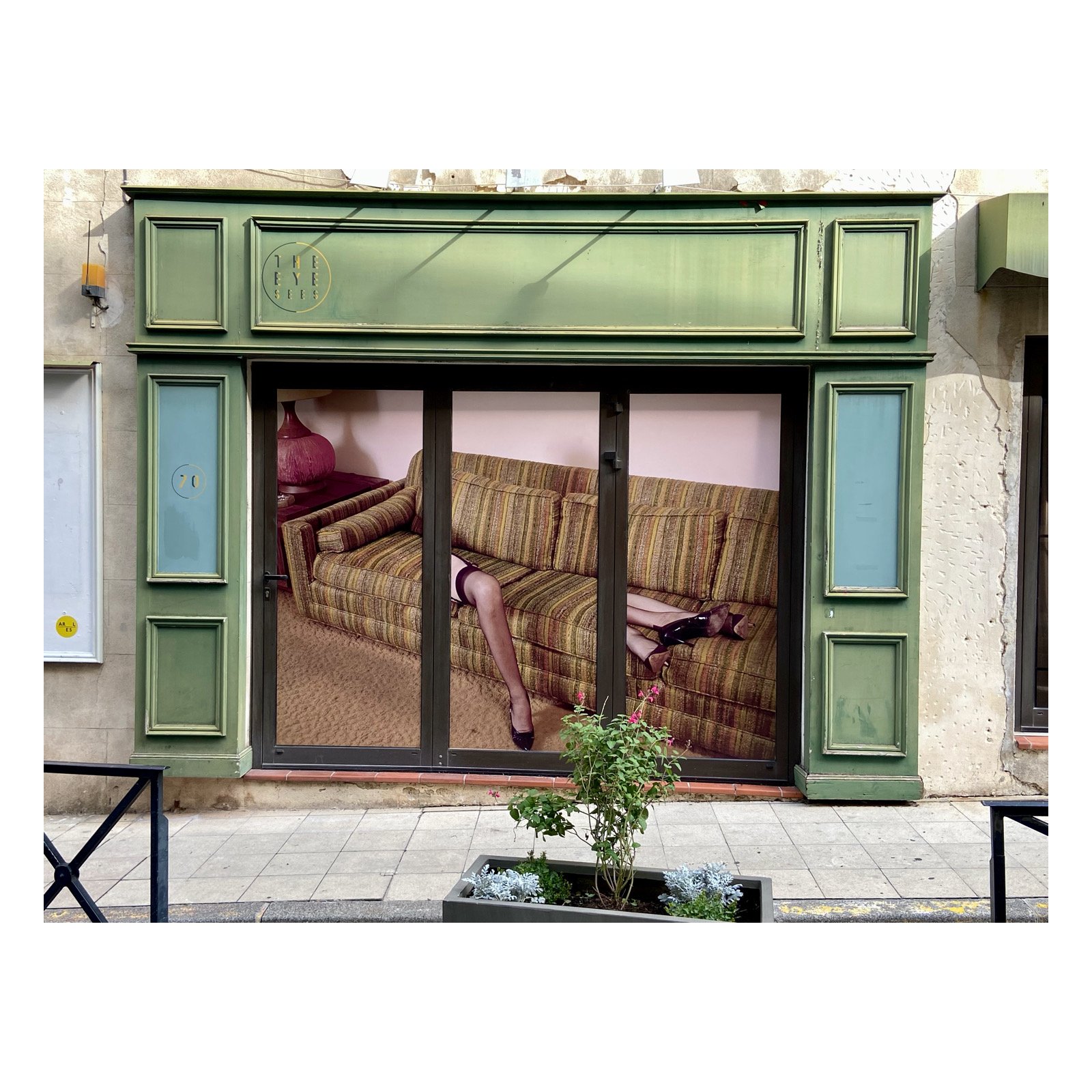








Entractes24 - Erin O’Keefe - Solstice - 12.07.22 / 09/09.22
‘Cette œuvre fait partie d'une série intitulée "Book of Days" que j'ai commencée en réponse au décès de mon colocataire de studio en 2016. Je cherchais un moyen de reprendre le travail en studio après cette perte, et j'ai opté pour un processus itératif à l'aide de morceaux de carton peint. Ainsi, chaque jour, de petits changements venaient modifier les œuvres, les lumières étaient ajustées, la caméra était repositionnée. C'est donc devenu un moyen, à travers ces transformations progressives, de marquer le passage du temps, plutôt que d'inventer quelque chose de nouveau chaque jour - ce qui, à ce moment-là, semblait impossible.
J'ai senti que cette image résonnait avec le projet Entractes car le site lui-même est un lieu de passage quotidien - tissé dans le rythme quotidien de la ville. Mon espoir est que chaque rencontre avec Solstice, chaque passage, révèlera d'autres lectures et marquera la saison par un moment de beauté et d'ouverture à toutes les possibilités.’
Erin O'Keefe est une photographe basée à New York qui utilise la nature morte pour explorer la perception spatiale. Elle a obtenu un ‘bachelor’ en beaux-arts de l'Université Cornell et une maîtrise en architecture de l'Université Columbia.
Ses expositions récentes incluent Measured Perspectives, avec Katja Mater, Riga Photo Biennial (2022); Oeuvres récentes, Galleria Leyendecker, Tenerife (2021); Certain things, Seventeen Gallery, Londres (2021); Sightseeing, avec Matt Kleberg, Albada Jelgersma Gallery, Amsterdam (2021); Voir des choses, Denny Dimin Gallery, NYC (2019).
~~~~~~~~~~~~~~~~~~~~~~~~~~~~~~~~~~~~~~~~~~~~~~~~~~~~~~
‘This piece is from a series called “Book of Days” which I began in response to the death of my studiomate in 2016. I was searching for a way I could get back to work in the studio after this loss, and settled on an iterative process using pieces of painted cardboard. So each day, the pieces went through small changes, the lights adjusted, the camera repositioned. It became a way of marking the passage of time through these incremental transformations, rather than inventing something new each day - which at that point felt impossible.
I felt that this image resonated with the Entractes project, as the site itself is a place of daily passage - woven into the quotidian rhythm of the place. My hope is that each encounter will reveal other readings, and mark the season with a moment of beauty and openness to possibilities.’
Erin O'Keefe is a New York City based photographer using still life to explore spatial perception. She received a Bachelor of Fine Arts from Cornell University and a Master of Architecture from Columbia University.
Recent exhibitions include Measured Perspectives, with Katja Mater, Riga Photo Biennial (2022); Recent Work, Galleria Leyendecker, Tenerife (2021); Certain Things, Seventeen Gallery, London (2021); Sightseeing, with Matt Kleberg, Albada Jelgersma Gallery, Amsterdam(2021); Seeing Things, Denny Dimin Gallery, NYC (2019).









Interlude - Andrew Holligan - Bienvenue!…- 12.06.22 / 02.07.22
Bienvenue! Willkommen! Welcome!
Étranger, Je suis enchanté, Reste!
Fremder, Glücklich zu sehen, Bleibe!
Stranger, Happy to see you, Stay!
Interlude de A. Holligan fait partie d'un projet photographique en cours intitulé ‘Windows’ qu’il a commencé en 1998.
La nature transitoire de ‘la rue’ est un thème récurrent dans l'œuvre de Holligan. ‘Windows’ explore les habitudes changeantes du consumérisme et la disparition du shopping traditionnel dans les centres villes face au commerce en ligne et les géants du web.
Holligan photographie les vitrines blanchies au blanc de Meudon des magasins désaffectés, agrandissant les marquages aléatoires effectués par des travailleurs anonymes et les recadrant comme des gestes créatifs, rappelant l'expressionnisme abstrait ou ‘l’action painting’.
‘Plus je regardais ces surfaces blanchies, plus je les considérais comme des toiles magnifiquement tendues, apprêtées et rigoureusement travaillées par des artistes anonymes’.
Dans sa forme la plus personnelle, ‘Windows’ s'inspire de manière ludique d'une période de la vie de l’artiste lorsqu'il travaillait comme décorateur d'intérieur et que chaque surface nécessitait une longue préparation et une application soignée de peinture - l'antithèse même d'une fenêtre défigurée et blanchie à la chaux.
Holligan réussit à combiner des commentaires personnels avec des commentaires sociopolitiques et une transformation perceptive. Il le fait en repoussant les limites de la photographie, en expérimentant d'autres matériaux et formes de présentation.
Le titre :‘Bienvenue! Willkommen! Welcome!…’ fait référence à la scène d'ouverture de la comédie musicale ‘Cabaret’ de Bob Fosse.
—————————————————————————————————————
Holligan’s Interlude is part of an ongoing photographic project entitled ‘Windows’ that began in 1998.
The transitory nature of ‘the street’ is a theme throughout Holligan’s work. ‘Windows’ explores the shifting habits of consumerism and the demise of traditional street shopping in the face of corporate and online retailing.
Holligan photographs the whitewashed windows of closed-down shops, enlarging the random markings made by anonymous workers and reframing them as creative gestures, reminiscent of Abstract Expressionism or the School of Action Painting.
‘The more I looked at these whitewashed surfaces, the more I thought of them as beautifully stretched canvases, primed and rigorously worked on by anonymous artists’.
At its most personal, ‘Windows’ draws playfully on a period of the artist’s life when he worked as an interior decorator and every surface required lengthy preparation and careful application of paint - the very antithesis of a defaced, whitewashed window.
Holligan manages to combine personal with socio-political comment and perceptual transformation. He does this by pushing the boundaries of photography, experimenting with other materials and forms of presentation.
The title; ‘Bienvenue! Wellkommen! Welcome!...’ refers to the opening scene in Bob Fosse’s musical movie ‘Cabaret’.










Entractes23 - Haroun Hayward - May with its light behaving - 16.04.22 / 10.06.22
Se concentrant sur un détail de 'Craigs Birch, Winter' une peinture de l'artiste britannique d'après-guerre Ben Nicholson, Hayward a créé sa propre version de la quintessence du paysage anglais comme s'il avait été repensé par un membre des Fauves, le groupe d’artistes français du début du XXe siècle.
L’aquarelle doit son titre à un poème du même nom écrit en 1935 par W.H. Auden qui le répertoriait comme une chanson. Ce poème traite du sujet traditionnel du renouveau printanier associé aux motifs freudiens et à la mesquinerie des amours privées dans un monde d'injustice, thème récurrent dans l'œuvre de l'auteur.
Entractes23 illustre le lien avec le paysage et l'environnement, un principe clé de la pratique artistique de Hayward.
Les influences de l'artiste sont extrêmement diverses : la littérature et la peinture de paysage représentées dans "May with its light behaving" mais aussi la scène musicale acid house et techno des années 1990 ou les textiles africains et sud-asiatiques. Tous ces éléments témoignent de la diversité de ses expériences de vie et de son bagage culturel.
Haroun Hayward (né en 1983) vit et travaille à Londres. Il a obtenu son MFA de la Goldsmiths University et son BA (Fine Art, Painting) de l'Université de Brighton, suite à un séjour d'échange à l'Université des Arts de Nagoya au Japon. Hayward est actuellement artiste en résidence pour l'Indian Art Fair 2022, avec d'importants projets à venir à Mumbai et à Londres plus tard cette année. Hayward est actuellement conférencier invité à l'Université de Brighton et mentor à la New Art School.
~~~~~~~~~~~~~~~~~~~~~~~~~~~~~~~~~~~~~~~~~~~~~~~~~~~~~~
Taken from a detail of ‘Craigs Birch, Winter’ a painting by the Post War British artist Ben Nicholson, Hayward has created his own version of the quintessential English landscape as if reimagined by a member of the Fauves, the group of early 20th-century modern French artists.
The watercolour’s title is a reference to a poem of the same name written in 1935 by W.H. Auden who classified it as a song. It treats the traditional subject of springtime renewal combined with Freudian motifs and the pettiness of private loves in a world of injustice, a recurrent theme in the author’s oeuvre.
Entractes23 exemplifies the connection to landscape and environment, a key tenet of Hayward’s practice.
The artist’s influences are extremely diverse: literature and landscape paintings as represented in ‘May with its light behaving’ but also 1990’s acid house and techno music scene or African and South Asian textiles. All of these are a testament to his diverse life experiences and cultural background.
Haroun Hayward ( b. 1983) lives and works in London. He received his MFA from Goldsmiths University and BA (Fine Art, Painting) from Brighton University, following an exchange stay at the Nagoya University of Arts in Japan. Hayward is currently an artist in residence for the Indian Art Fair 2022, with major upcoming projects in Mumbai and London 2022. Hayward is currently a Visiting Lecturer at Brighton University and a mentor at The New Art School.
@harounhayward
#entractes23 #maywithitslightbehaving









Entractes22 - Nick Scammell - Species of spaces / Espèces d’espaces 2015-2020 - 26.02.22 / 15.04.22
‘Dans ma pratique artistique la photographie et la littérature sont complices: l’image rencontre le mot, la matière rencontre le numérique. Tout cela me fascine et c’est pourquoi j'explore à l'aide de scanners les performances de la surface et la transformation du tangible en rumeur numérique.
Le scan est une performance. Un équilibre singulier fait de vitesse, de pression, de traînée et de direction. Je ne peux répéter deux fois la même.
Le scanner est un pont entre le tangible et le numérique. Conçu pour numériser des pages imprimées, c'est à bien des égards un choix naturel pour les créatures littéraires.
Je suis profondément intéressé par l'idée que l'image révèle d'autres possibilités pour elle-même, évocatrice d'une immensité intérieure. Je veux le moment durable, ou le moment mis sous une sorte de pression – un écho qui se confronte au temps.
La disparition de la présence physique des médias représente clairement une rupture profonde avec notre passé. J'ai cherché à explorer ce déclin en présentant le medium sans le message, en considérant les médias comme une entité physique et un résidu culturel. Plus particulièrement, dans un ensemble d'œuvres intitulé Exit Ghost, dont fait partie l’œuvre actuellement présentée à The Eye Sees.
Entractes22, Species of Spaces/Espèces d'espaces, a été créé par le mouvement physique de deux livres lors du scan. Ces livres sont Espèces d'espaces de Georges Perec, et sa traduction anglaise: Species of spaces. À travers la confusion causée par le mouvement, le scanner à plat réinterprète ces volumes, laissant une image qui est le vestige de l'incompréhension bientôt obsolète du scanner.’
~~~~~~~~~~~~~~~~~~~~~~~~~~~~~~~~~~~~~~~~~~~~~~~~~~~~~~
‘I maintain a practice where photography and literature collude. Fascinated by where the image meets the word and where the material meets the digital, I use scanners to explore the performance of surface and the transformation of the tangible into digital rumour.
The scan is a performance. A singular combination of speed, pressure, drag & direction. I cannot step into the same one twice.
The scanner is a bridge between the tangible and the digital. Designed to scan printed pages, in many ways it’s a natural choice for literary creatures.
I am deeply taken by the idea of the image revealing other possibilities for itself, suggestive of an interior immensity. I want the enduring moment, or the moment put under some kind of pressure – an echo braving time.
The fading physical presence of media clearly represents a profound break with our past. I have sought to explore this decline by presenting medium minus message, considering media as a physical entity and a cultural residue. Most especially, in a body of work entitled Exit Ghost, of which the work now on view at The Eye Sees is a part.
Entractes22, Species of Spaces/Espèces d'espaces, was created by the physical movement of two books during scanning. Those books were Georges Perec’s Espèces d'espaces, and its English translation: Species of Spaces. Through the confusion caused by movement, the flatbed scanner re-performs these volumes, leaving an image that is the remains of the soon-to-be-obsolete scanner’s incomprehension.’
Nick Scammell completed his MA Photography at LCC in 2014. He was short-listed for the Photoworks OPEN14, and invited to exhibit in This New Feeling at Central Saint Martins in 2015. NYZ, a collaboration with Michael Rogers, was profiled in the Photoworks Annual 21. Nick was a co-founder of the curatorial project AFTER, which showcased early-career artists through exhibitions and digital residencies, and a co-director of Offshoot Gallery in London. He is an artist and educator who lives and works in London.









Entractes21 - Tom Lovelace - a Japanese dream - 01.01.22 / 25.02.22
Inspirée du séjour de van Gogh à Arles de 1888 à 1889, Entractes21 est une réponse de l’artiste aux études du peintre sur le paysage, les plantes et, en particulier, la vie des iris. Le 12 mai 1888, van Gogh écrit à son frère Théo et décrit un de ses récents tableaux : « Une prairie pleine de boutons d’or très jaunes, un fossé avec des iris, des feuilles vertes, des fleurs violettes, la ville en arrière-plan, des saules gris, et une bande de ciel bleu... Une petite ville entourée de champs entièrement couverts de fleurs jaunes et violettes ; tu sais ce serait comme un rêve japonais."
La pratique artistique récente de Lovelace depuis 2017 s’intéresse à la création d'expositions fluides, faisant converger les disciplines de la photographie et de la performance. Ces œuvres, intitulées Living Pictures, tentent de créer des espaces où les images et les corps s'entremêlent, facilitant de nouvelles relations avec la photographie. Pour la première fois dans le cadre de la série Entractes, un élément supplémentaire viendra donc s'ajouter à l'impact de l'œuvre exposée sur la vitrine. Tom Lovelace, avec un petit groupe d'artistes, proposera une performance en réponse à Entractes21. Initialement programmée pour la mi janvier à Arles, mais suite aux règles de voyage actuelles entre le Royaume Uni et la France rendant les déplacements impossibles, cette performance aura lieu à Londres samedi 26 février à Van Gogh london . Elle sera aussi visible en ligne.
Tom Lovelace est un artiste installé à Londres qui évolue entre la photographie, la performance et la sculpture. Les thèmes centraux de ses recherches englobent l’historique de collaborations de la photographie et du théâtre et le rôle du minimalisme dans la culture contemporaine. Lovelace enseigne au Royal College of Art et à University for the Creative Arts.
Les résidences incluent la London South Bank University (2019-2020), Yorkshire Sculpture Park (2017), Allegra Projects, Suisse (2017), Lendi Projects, Suisse (2015), European Capital of Culture, Aarhus, Danemark (2013) et Anna Mahler Fondation internationale, Italie (2012).
Ses expositions récentes incluent Bathers, Sid Motion Gallery (Londres 2021), Chapter Two, avec Eva Stenram, Alma Zevi Gallery (Londres 2021), The Dancer and the Shadow, Maison Européenne de la Photographie (Paris 2020), On Photographic Beings, The National Museum of Art, (Riga, Lettonie 2020), Mirror Mirror, Atelier NŌUA (Norvège 2020), The State of Things, Landskrona Foto (Suède 2020), The Truth in Disguise, GESTE (Paris 2019), Present Tense, Materia Gallery (Rome 2019), Interval, Flowers Gallery (Londres 2019) et Dazzle Site, Yorkshire Sculpture Park (2017-2019).
~~~~~~~~~~~~~~~~~~~~~~~~~~~~~~~~~~~~~~~~~~~~~~~~~~~~~~~~~~~~~~~~~~~~~~~~~~~
Inspired by van Gogh's stay in Arles from 1888 - 1889, Lovelace has responded to the painter's studies of landscape, plants and, in particular, the life of Irises. On 12th May 1888, van Gogh wrote to his brother Theo, describing one of his recent paintings: "A meadow full of very yellow buttercups, a ditch with irises, green leaves, purple flowers, the town in the background, some grey willows, and a strip of blue sky ... A little town surrounded by fields all covered with yellow and purple flowers; - exactly, can't you see it? - like a Japanese dream."
Lovelace's recent practice (2017 - present), has been concerned with creating fluid exhibition displays, converging the disciplines of photography and performance. These works, titled Living Pictures, attempt to create spaces where images and bodies become entangled, facilitating new relationships with photography. For the first time as part of the Entractes series, an additional element will thus add to the impact of the work on the window. Lovelace, supported by a small group of performers, will stage a live performance in response to this Entractes display. Initially programmed for Arles in mid January, but, due to recent travel restrictions between the UK and France, the performance will now be staged in London on Saturday 26th February at Van Gogh London. It will be live-streamed.
Tom Lovelace is a London based artist, working within spaces that lie between photography, performance and sculpture. Central themes to his research encompass the collaborative histories of photography, theatre and the role of Minimalism within contemporary culture. Lovelace is a Tutor at the Royal College of Art and University for the Creative Arts.
Residencies include London South Bank University (2019-2020), Yorkshire Sculpture Park (2017), Allegra Projects, Switzerland (2017), Lendi Projects, Switzerland (2015), European Capital of Culture, Aarhus, Denmark (2013) and the Anna Mahler International Foundation, Italy (2012).
Recent exhibitions and displays include Bathers, Sid Motion Gallery (London 2021), Chapter Two, with Eva Stenram, Alma Zevi Gallery (London 2021), The Dancer and the Shadow, Maison Européenne de la Photographie (Paris 2020), On Photographic Beings, The National Museum of Art, (Riga, Latvia 2020), Mirror Mirror, Atelier NŌUA (Norway 2020), The State of Things, Landskrona Foto (Sweden 2020), The Truth in Disguise, GESTE (Paris 2019), Present Tense, Materia Gallery (Rome 2019), Interval, Flowers Gallery (London 2019) and Dazzle Site, Yorkshire Sculpture Park (2017-2019),
@tomlovelacestudio









Entractes20 - Alexandra Lethbridge - Bust - 06.11.21 / 31.12.21
Bust est une nouvelle œuvre créée spécifiquement pour Entractes, elle fait partie d'une large série intitulée The Archive of Gesture (2020), composée d'images trouvées, de photographies de natures mortes et d'interventions numériques. Les œuvres utilisent le collage et la sculpture pour examiner le rôle des mains dans la communication.
Les formes de communication tacites telles que les gestes jouent un grand rôle dans notre vie quotidienne. Les gestes peuvent être manipulateurs et les informations délivrées de cette manière peuvent être mal communiquées et trompeuses. Mais que se passe-t-il en l'absence de geste ? Comment créons-nous un sens ?
En utilisant des statues grecques comme référence, les œuvres incluses dans The Archive of Gesture sont conçues en pensant à l'équilibre entre l'absence et la présence, la transparence et l'obstruction, la vérité et le mensonge. Dans de nombreux cas, les membres ou les bras des statues grecques sont manquants, cassés ou amputés au fil du temps. On a longtemps débattu sur la célèbre statue Vénus de Milo à propos de ce qu'elle faisait avec ses bras. Les spéculations incluent qu'elle frôlait l'épaule d'un guerrier, se regardait dans un miroir et même parfois qu’elle représentait une mère tenant un enfant. Les reconstitutions des formes de Vénus de Milo sont infinies. Les informations cachées nous laissent libres de créer un sens - à tort ou à raison.
Avec Entractes20, cela va encore plus loin, l’œuvre naît d’imagés de statues grecs. Ce faisant, en retirant entièrement les bras, le torse et les jambes et en ne révélant que le buste, toutes les informations ou presque sont supprimées. Cette nouvelle œuvre tient compte des parallèles entre cette absence et la disponibilité de l'information dans notre vie quotidienne.
Alexandra Lethbridge (née en 1987) est une artiste conceptuelle qui travaille avec la photographie et l'installation. Sa pratique comprend l'utilisation d'images trouvées et appropriées, la sculptures et les images en mouvement. Les thèmes récurrents dans son travail sont la tromperie, la diversion, la désinformation, la vérité visuelle et le traitement cognitif et la consommation d'informations. Son travail a été exposé dans le monde entier et a remporté de nombreux prix. Son travail se trouve dans la collection ING à Amsterdam ainsi que dans la collection de livres du MoMa à New York. Ses expositions les plus récentes incluent une exposition personnelle de The Archive of Gesture présentée à Other Size Gallery, Milan, et l'inclusion de la même série au Belfast Photo Festival 2021, où elle a également été sélectionnée comme lauréate du Spotlight Award.
~~~~~~~~~~~~~~~~~~~~~~~~~~~~~~~~~~~~~~~~~~~~~~~~~~~~~~
Bust is a new work created specifically for Entractes. The piece forms part of a larger series called The Archive of Gesture (2020), made up of found images, still life photography and digital interventions. The works use collage and sculpture to look at the role of hands in communication.
Unspoken forms of communication such as gesture play a large role in our everyday lives. Gesture can be manipulative, and information delivered in this way can be miscommunicated and misleading. But what happens in the absence of gesture? How do we create meaning?
Using Greek statues as a reference, the works included in The Archive of Gesture are made thinking about the balance between absence and presence, transparency and obstruction, truth and lies. In many instances the limbs or arms of Greek statues are missing, broken off or amputated over time. The famous statue Venus de Milo has been long debated as to what she was doing with her arms. Speculation includes that she was grazing the shoulder of a warrior, gazing into a mirror and even sometimes as a mother holding a child. The reconstructions of Venus de Milo’s forms are endless. The withheld information means we are free to create meaning - rightly or wrongly so.
With Entractes20, this is taken one step further and Greek statues are used as the source image. In doing so, by removing the arms, torso and legs entirely and revealing only the bust, nearly all the information is removed. This new piece is made considering the parallels between this absence and the availability of information within our everyday lives.
Alexandra Lethbridge (b.1987) is a conceptual artist working with photography and installation. Her practice includes the use of found and appropriated imagery, sculpture and moving image. Recurring themes in her work are deception, misdirection, misinformation, visual truth and the cognitive processing and consumption of information. Her work has been exhibited worldwide and has won many awards. Her work sits in the ING Collection, Amsterdam as well as the book collection at the MoMa, New York. Her most recent exhibitions include a solo show of The Archive of Gesture shown at Other Size Gallery, Milan, and inclusion of the same series at the Belfast Photo Festival 2021, where she was also selected as the Spotlight Award Winner.
www.alexandralethbridge.com









Entractes19 - Laurie Dall’Ava - Symbiosis. Documentation Anesthésie. 2009-2021







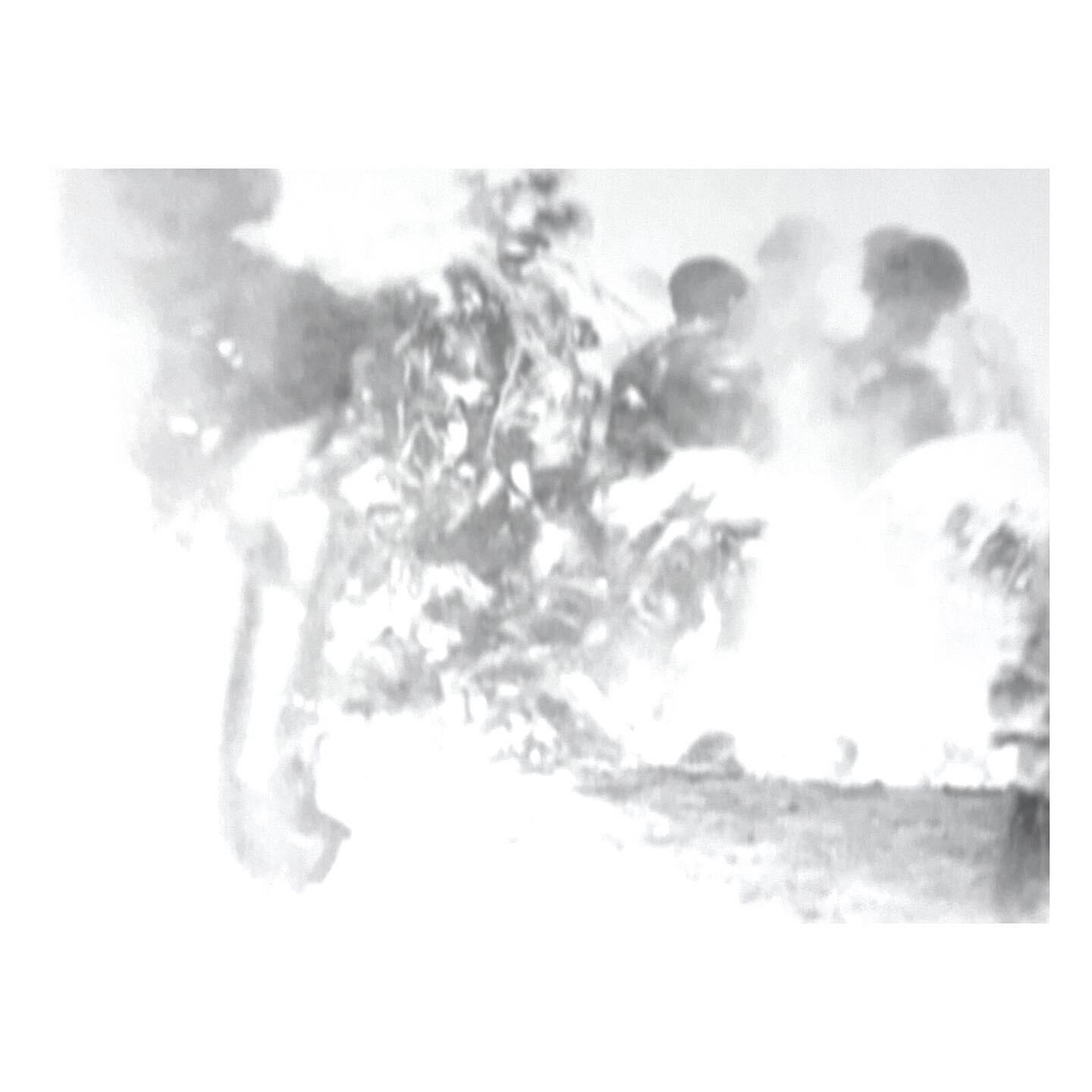
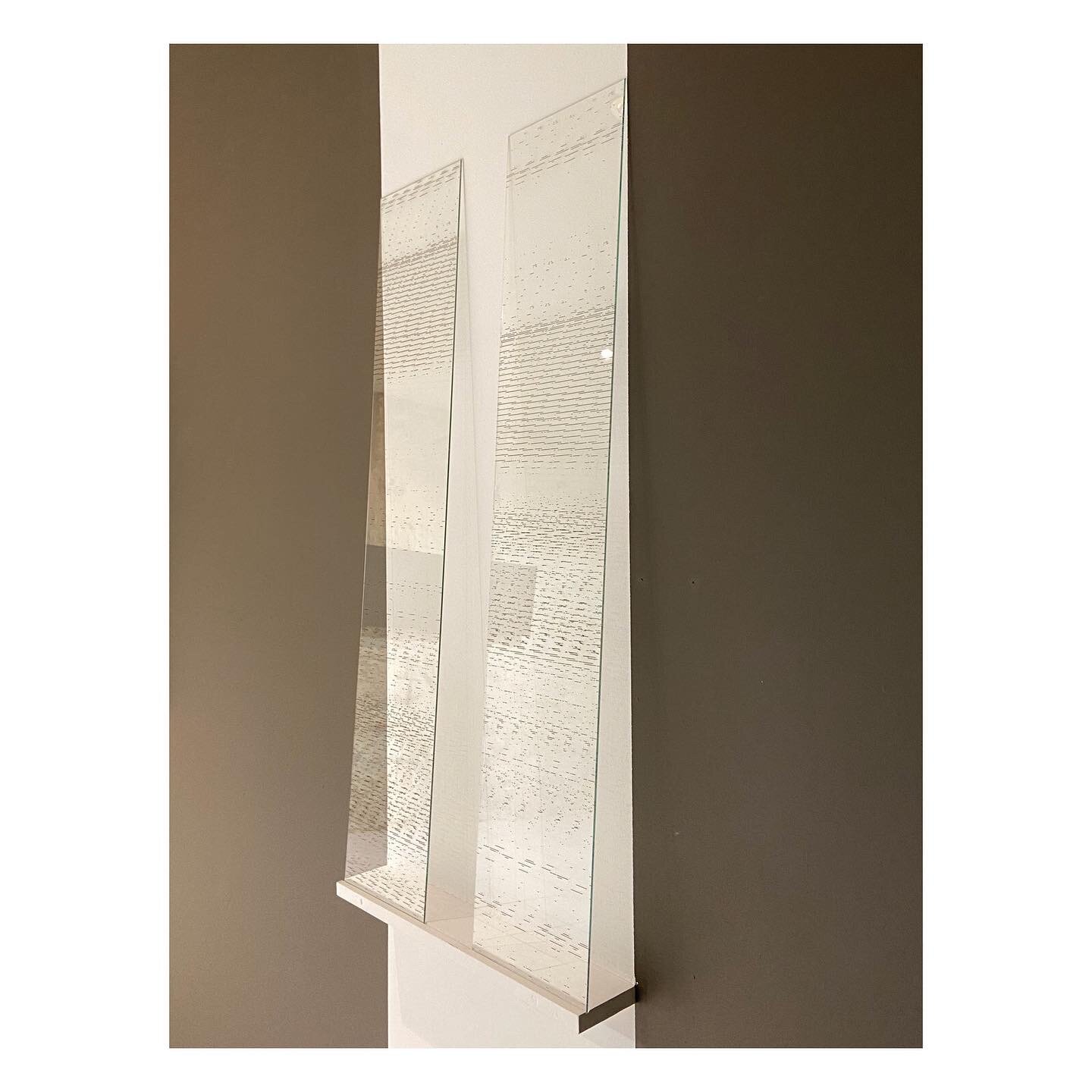
Entractes18 - Carolle Bénitah - A la plage - 17.07.21 / 04.09.21
“J’ai réalisé, en travaillant sur mes archives personnelles, qu’il existait très peu d’images de mes parents avant leur mariage, un désert iconographique expliqué par le fait qu’ils sont nés dans les années 1930 dans un Maroc encore sans eau courante ni électricité. Les rares photographies détenues par ma grand-mère étaient verrouillées à double tour pour ne pas évoquer un drame familial. Je me suis retrouvée orpheline d’images du passé.
Je collectionne les photographies anonymes que j’achète dans les brocantes. Je suis aimantée par ce bonheur qui s’affiche au garde-à-vous sur ces photos, par ces gens que je ne connais pas et qui ont existé, aimé et disparu. Ils sont des fantômes qui me suivent sans bruit et je me les approprie pour construire un album de famille imaginaire afin de réparer l’oubli.
Je reconstruis la mémoire de ma famille qui m’a manqué, je m’en invente une autre sur mesure.
Lorsque je masque une partie de l’image, et plus spécifiquement les visages de ces fantômes, je décuple les projections possibles. C’est à la fois une oblitération et la possibilité de voir s’y réfléchir nos propres visages.
Je choisis des photographies qui évoquent quelque chose de déjà-vu, une pose familière, des moments heureux qui illustrent toutes ces fables racontées sur les ancêtres. Ce bonheur ritualisé au fil des évènements renvoie aux mensonges sur le mythe familial. Il évacue la matière noire liée à la famille, justement absente de ces photographies-là.
Utiliser ces images est une façon de vivre par procuration et de reconstituer une vie rêvée. Néanmoins, mon intervention crée des trous de mémoire et impose une distance, ce qui fait que je ne suis pas dupe du mensonge qu’elles affichent.
Travailler sur ces photographies permet de faire le deuil de cette vie de famille idéale. Reprendre un à un tous les anciens fantasmes concernant ces projections et les démonter rend cette mort symbolique supportable.”
~~~~~~~~~~~~~~~~~~~~~~~~~~~~~~~~~~~~~~~~~~~~~~~~~~~~~~
“Whilst working on my personal archives, I realised that there were very few images of my parents before their marriage: an iconographic desert explained by the fact that they were born in the 1930s in Morocco, before running water or electricity. The few photographs kept by my grandmother were securely locked away so as not to touch upon a family tragedy. I found myself orphaned by images from the past.
I collect vernacular photographs that I buy in flea markets. I am magnetised by the happiness so clearly displayed in these photos, by these people I don't know but who existed, loved, and disappeared. They are ghosts who silently follow me, and I make them mine to build an imaginary family album in order to replace oblivion.
I am rebuilding the memory of the family I never had, inventing another of my own making.
By masking part of the image and, more specifically, the faces of these ghosts, I multiply the possible life stories tenfold. It is an obliteration that, simultaneously, offers the chance to see our own faces in their place.
I choose photographs that evoke something déjà-vu, a familiar pose, joyful moments that illustrate all those stories told about ancestors. This happiness becomes an accepted aspect of the ritualised events portrayed. It removes the dark matter related to the family, always absent from these photographs.
Using these images is a way of living by proxy and restoring a dream life. Nevertheless, what I add to these images still creates gaps in memory and imposes a sense of distance. And thus the lies they display do not fool me.
Working on these photographs allows us to mourn the ideal family life. Taking back one by one all the old fantasies about these idealisations, and dismantling them, makes this symbolic death bearable.”
www.carolle-benitah.com









Entractes17 - Gil Bourget - Cola Lagoon - 22.05.21 / 02.07.21
“Cola Lagoon est une œuvre à l’encre sur papier créée spécialement pour Entractes.
L’image, photographiée et agrandie, représente un paysage du sud de l’Inde. La manière dont j’utilise l’encre corrompt l’image qui par endroits est effacée et semble ‘altérée’. Cette altération est à mettre en regard avec l’idée du paysage vierge, non corrompu, rassurant et salvateur.
Le concept selon lequel il existe un lieu (le paradis perdu) où nous pouvons nous réfugier est indispensable. Ce paysage vierge de l’empreinte de l’homme fait office de refuge. Ce lieu, même si nous n’aurons jamais besoin d’y aller est rassurant car nous avons besoin de nous échapper aussi sûrement que nous avons besoin d’espoir.
La crise écologique, la disparition des écosystèmes, la pression démographique sur l’environnement ravivent et rendent nécessaire la notion de ‘combe sacrée’, ce lieu vierge et inviolé, cher à John Fowles (et à Restif de la Bretonne avant lui). L’idée que cet endroit existe et la possibilité de s’y réfugier est pour moi salutaire et est l’antidote nécessaire à l’inquiétude née de la dégradation de la nature et des incertitudes générées quant au futur de notre planète bleue.
La présence de l’eau est à prendre dans le sens du ressourcement, au-delà du retour aux sources et des valeurs fondamentales. Gaston Bachelard ne dit-il pas que le rêve a besoin d’eau…?
Que ce soit l’acrylique que j’utilise sur toile ou l’encre sur papier, le medium est invariablement très dilué. J’attends de cette fluidité et de la difficulté à maitriser les liquides la part de hasard qui me permet d’obtenir des altérations. J’utilise également du fluide de masquage qui révèle des traces ou autres imperfections assimilables à des empreintes en donnant à la composition un aspect parfois spectral. En ce sens, je tente de situer mon travail à la croisée de la figuration et de quelque chose de moins lisible qui s’exprime souvent dans l’élément liquide dans lequel je trouve un espace de liberté.”
~~~~~~~~~~~~~~~~~~~~~~~~~~~~~~~~~~~~~~~~~~~~~~~~~~~~~~~~~~~~~~~~~~~~~~~~~~~~~~~~~~
“Cola Lagoon is an ink on paper work created especially for Entractes.
The image, photographed and enlarged, depicts a landscape in southern India. The way I use ink corrupts the image which, in places, is erased and looks "altered". This contrasts with the idea of the virgin, uncorrupted, reassuring and redeeming landscape.
The concept that there is a place (paradise lost) where we can take refuge is essential. This landscape free from the imprint of man acts as a refuge. This place, although we never need go, comforts because we need escape as surely as we need hope.
The ecological crisis, the disappearance of ecosystems, demographic pressure on the environment revive the essential notion of "sacred combe”, this virgin and untouched place, dear to John Fowles (and Restif de la Bretonne before him). The idea that this place exists and the possibility of taking refuge there is, for me, profoundly helpful, a necessary antidote to the concern arising from the degradation of nature and the uncertainties generated about the future of our blue planet.
The presence of water signifies a sense of healing, not just one of the fundamentals of life. Didn't Gaston Bachelard say that dreams need water ...?
Whether it is acrylic I use on canvas or ink on paper, the medium is always very diluted. This fluidity and the difficulty in mastering liquids delivers a degree of chance. I also use masking fluid to reveal other imperfections, similar to marks, giving the composition a sometimes ghostly appearance. In this sense, I try to place my work at the crossroads of figuration and something less readable, often expressed by the liquid element in which I find a sense of freedom."
@gilbourget









Entractes16 - Shane Lavalette - New Monuments - 28.03.21 / 15.05.21
“L'image choisie pour Entractes16 provient de mon projet, New Monuments. Pour moi, l'installation de cette photographie résonne de diverses manières en ce moment si particulier. Plus spécifiquement, peut-être, elle évoque à la fois une connexion et une distance avec le passé. L'image représente un archiviste examinant une diapositive photographique - dans ce contexte, une fenêtre dans une autre fenêtre, et un regard sur un autre lieu et une autre époque. J'ai l'impression que notre relation au futur a beaucoup à voir avec le passé, notre mémoire du passé et le lien que nous avons tissé avec lui. J'espère que cette installation incitera les spectateurs à réfléchir à leur expérience du temps et du lieu à cette époque si inhabituelle pour tous, où l’on a souvent l'impression que le temps est à la fois plus lent ou qu’il s'effondre sur lui-même.”
Le sujet principal de New Monuments est l’idée de la conservation et le désir humain de préserver. Le projet a été rendu possible grâce à l'American Academy de Rome qui a accueilli Lavalette en tant qu'artiste invité en 2015. Rome était le lieu idéal pour explorer ce concept car il a pu le photographier au sens littéral à travers l'observation de la restauration d’œuvres d'art et de bâtiments, la documentation de l'architecture et de l'art, et en passant du temps dans des collections historiques à étudier des diapositives et des objets photographiques. Pure coïncidence, des monuments célèbres de la ville étaient en pleine restauration au moment de sa visite. Lavalette a aussi envisagé la notion de préservation de manière plus abstraite, tournant son objectif sur la population de la ville et sa nature, à la recherche de «monuments» plus petits sous forme de détails quotidiens et de natures mortes qui, contrairement aux études cliniques, sont ancrés dans l'émotion.
Shane Lavalette est photographe et cofondateur d'Assembly, une plateforme mondiale soutenant une liste diversifiée d'artistes travaillant dans la photographie, les techniques mixtes, la vidéo et le son. Auparavant, Lavalette a travaillé comme directeur de Light Work (2011-2021), une organisation de photographie à but non lucratif à Syracuse, New York. Il est titulaire d'un BFA de l'Université Tufts en partenariat avec l’Ecole du Museum of Fine Arts de Boston. Les photographies de Lavalette ont été largement diffusées, notamment à travers des expositions au High Museum of Art, au Centre d'études documentaires de l'Université Duke, à la Fondation Aperture, au Montserrat College of Art, au Carpenter Center for Visual Arts de l'Université Harvard, au Centre de photographie de Woodstock, à Kaunas Gallery, au Château d'Eau, Fotostiftung Schweiz, Musée de l'Elysée et Robert Morat Galerie, en plus d'être entrées dans des collections privées et publiques. Lavalette est l'auteur de quatre monographies primées: One Sun, One Shadow (Lavalette, 2016), Still (Noon) (Edition Patrick Frey, 2018), LOST, Syracuse (Kris Graves Projects, 2019) et New Monuments (Libraryman , 2019). Le travail de Lavalette a été présenté par le New York Times, TIME, NPR, CNN, The Telegraph, Aperture, Foam Magazine, Hotshoe, entre autres, et son travail éditorial a accompagné des articles dans diverses publications, y compris le New York Times Magazine, T: The New York Times Style Magazine, The New Yorker, The Wall Street Journal, Financial Times, Esquire, Bloomberg Businessweek, Curbed, Vice Magazine, The Wire, Fond d'écran, Monocle, The Guardian et ZEITmagazin. Lavalette est représentée par la Robert Morat Galerie à Berlin et l'agence We Folk à Londres / New York. Il est actuellement basé à New York.
~~~~~~~~~~~~~~~~~~~~~~~~~~~~~~~~~~~~~~~~~~~~~~~~~~~~~~
"The image installed for Entractes16 comes from my project, New Monuments. For me, the installation of this photograph resonates in various ways at this particular moment in time. Most notably, perhaps, it evokes both a connection to and distance from the past. The image presents an archivist examining a photographic slide—in this context, a window within a window, and a look into another place and time. I feel as though our relationship to the future has much to do with our connection to and memory of the past. It's my hope that this installation prompts viewers to consider their experience of time and place at this unusual moment in the world, in which time often feels as though it's simultaneously elongated and collapsing on itself."
Shane Lavalette’s New Monuments takes the idea of conservation—and the human desire to preserve—as its main subject. The project was made possible thanks to The American Academy in Rome, who hosted Lavalette as a visiting artist in 2015. Rome was the perfect place to explore this idea, as he was able to photograph this in a literal sense through the observation of restoration of artwork and buildings, the documentation of architecture and art, and by spending time in historical collections studying slides and photographic objects. Various significant landmarks were serendipitously undergoing restoration at the time of his visit. While working in this way, Lavalette simultaneously considered the notion of preservation more abstractly, turning his camera lens on people of the city and its nature, looking for smaller "monuments" in the form of everyday details and still lifes that, in contrast to the clinical studies, are rooted in emotion.
Shane Lavalette is a photographer and Co-founder of Assembly, a global platform supporting a diverse roster of artists working in photography, mixed-media, video, and sound. Previously, Lavalette worked as the Director of Light Work (2011-2021), a non-profit photography organization in Syracuse, New York. He holds a BFA from Tufts University in partnership with The School of the Museum of Fine Arts, Boston. Lavalette’s photographs have been shown widely, including exhibitions at the High Museum of Art, Center for Documentary Studies at Duke University, Aperture Foundation, Montserrat College of Art, The Carpenter Center for Visual Arts at Harvard University, The Center for Photography at Woodstock, Kaunas Gallery, Le Château d’Eau, Fotostiftung Schweiz, Musée de l’Elysée, and Robert Morat Galerie, in addition to being held in private and public collections. Lavalette is the author of four award-winning monographs: One Sun, One Shadow (Lavalette, 2016), Still (Noon) (Edition Patrick Frey, 2018), LOST, Syracuse (Kris Graves Projects, 2019), and New Monuments (Libraryman, 2019). Lavalette’s work has been featured by The New York Times, TIME, NPR, CNN, The Telegraph, Aperture, Foam Magazine, Hotshoe, among others, and his editorial work has accompanied stories in various publications, including The New York Times Magazine, T: The New York Times Style Magazine, The New Yorker, The Wall Street Journal, Financial Times, Esquire, Bloomberg Businessweek, Curbed, Vice Magazine, The Wire, Wallpaper, Monocle, The Guardian, and ZEITmagazin. Lavalette is represented by Robert Morat Gallery in Berlin and We Folk agency in London/New York. He is currently based in Upstate New York.
@shanelavalette
www.shanelavalette.com









Entractes15 - Hannah Hughes - Mirror Image #57 (Hinge) - 06.02.21 / 27.03.21
L'entrée ou le seuil est un lieu lié aux mythes et à la superstition. C'est un passage, marquant la transition entre un endroit et un autre, ou un nouveau départ.
Hinge, œuvre créée spécifiquement pour Entractes, utilise le seuil de l’immeuble comme cadre pour examiner la nature des limites spatiales, des bordures et des contours. Opérant dans ses limites architecturales, Hinge développe un échange avec la façade environnante, positionnant l'entrée vitrée à la fois comme un cadre pour suspendre l'espace et comme une barrière séparant l'intérieur et l'extérieur.
La série Mirror Image prend son point de départ dans les espaces négatifs trouvés dans les images photographiques. De formes retirées des zones vides entourant personnages, silhouettes ou objets naissent de nouvelles photographies qui sont découpées et réassemblées sous forme de collages. Ces fragments amorphes sont transformés par plusieurs processus d'inversion, de dissimulation et de reproduction en de nouvelles formes hypothétiques.
Suite à des pliages et repliages, pressions, rotations et recherches d’équilibre, Hinge présente une séquence d'interactions reliant l'image à l'espace du cadre. Franchissant les frontières d'une forme à l'autre à travers ses ouvertures et ses points de contact, Hinge reflète une envie de voyager à travers l'image photographique, d’en étudier les contours et de passer de l'autre côté.
Hannah Hughes (née en 1975) travaille le collage, la sculpture et la photographie. Diplômée de l’Université de Brighton en1997, elle a depuis exposé en GB et internationalement. Quelques expositions collectives récentes: 'These Fingers Read Sideways', Fettes College, Edimbourg, (2018); ‘Concealer’, Peckham 24, Londres, (2018); ‘A Romance of Many Dimensions’, Sid Motion Gallery, Londres, (2018); ‘The Office of Revised Futures’, Format Festival, Derby, (2019); ‘The Truth in Disguise', Geste, Paris, (2019); ‘New Formations’, Catherine Edelman Gallery, Chicago, (2020); ‘Super Flatland’, White Conduit Projects, Londres, (2020); and 'Gleaners: Olivia Bax & Hannah Hughes', Sid Motion Gallery, Londres, (2020). Son travail a aussi été vu dans ‘The State of Things’, publié pour le Festival Landskrona en Suède (2020); et dans la publication expérimentale 'Material Immaterial’ de Rodrigo Orrantia (2018-2020).
~~~~~~~~~~~~~~~~~~~~~~~~~~~~~~~~~~~~~~~~~~~~~~~~~~~~~~~~~~
The entranceway or threshold is a site bound in myth and superstition. It is a point of crossing, marking the transition between one place and another, or a new beginning.
Hinge is a new work created specifically for Entractes, using the threshold of the building as a framework to consider the nature of spatial boundaries, borders and edges. Operating within its architectural limits, Hinge develops an exchange with the surrounding facade, positioning the glass entrance as both a frame to suspend space, and a barrier separating inside and outside.
The Mirror Image series takes its starting point from negative spaces found in photographic images, using shapes removed from the empty areas surrounding figures and objects to make new photographs, which are cut and reassembled as collages. These amorphous fragments are transformed through layered processes of inversion, concealment and reproduction into hypothetical new forms.
Folding and tucking, pressing, pivoting and supporting, Hinge presents a sequence of interactions connecting the image with the space of the frame. Crossing the boundaries from one form to another through its openings and seams, Hinge reflects a desire to travel through the photographic image, see around its corners and get to the other side.
Hannah Hughes (b. 1975) is an artist working with collage, sculpture and photography. She graduated from the University of Brighton in 1997 and has since exhibited in the UK and internationally. Recent group exhibitions include: 'These Fingers Read Sideways', Fettes College, Edinburgh, (2018); ‘Concealer’, Peckham 24, London, (2018); ‘A Romance of Many Dimensions’, Sid Motion Gallery, London, (2018); ‘The Office of Revised Futures’, Format Festival, Derby, (2019); ‘The Truth in Disguise', Geste, Paris, (2019); ‘New Formations’, Catherine Edelman Gallery, Chicago, (2020); ‘Super Flatland’, White Conduit Projects, London, (2020); and 'Gleaners: Olivia Bax & Hannah Hughes', Sid Motion Gallery, London, (2020). Her work has also been included in ‘The State of Things’, published as part of Landskrona Festival, Sweden, (2020); and an experimental publication 'Material Immaterial’ by Rodrigo Orrantia (2018-2020).
@_h _annah_hughes
www.hannah-hughes.com









Entractes14 - Alexander Mourant - When the image returns to glass - 05.12.20 / 30.01.21
Avec cette œuvre, je voulais réfléchir à la façon dont les choses sont portées, avec et à travers les matériaux; le lieu même de l’installation m’a poussé à revoir des œuvres réalisées précédemment et à comprendre comment, peut-être, des idées, ou plus précisément des matériaux, peuvent s’emparer de l’esprit de l’artiste. C'est à travers cette réflexion et la considération d’un retour cyclique et perpétuel que j'ai compris le rapport intime entre mon travail et le verre.
L'image provient d'un corpus intitulé Aomori. Dans ce projet, des photographies synthétisent le potentiel philosophique de la couleur bleu avec des idées fortes sur le temps et le ‘Lichtung’ (un lieu où tout est possible) cher à Martin Heidegger; la forêt y crée un environnement chargé psychologiquement. Avec des bleus profonds et viscéraux, des forêts denses, des vues panoramiques et l’eau qui coule, Aomori interroge la nature du lieu, de l'espace, de la mémoire et de la réalité photographique. Mon intention était d'appréhender la nature de la distance dans la photographie et à travers cette distanciation, comment paradoxalement en résulte intimité et union.
A titre expérimental, j'ai obtenu du verre bleu d'un vitrail d'église qui a été découpé à la taille du porte-filtre de mon appareil photo. Je souhaitais introduire cette couleur dans mon processus artistique en exposant directement mon film au monde bleu. Ici, le verre, normalement un matériau de séparation, est directement employé pour unir à la fois médium et idée: de la fusion de l’acte photographique avec le verre et peu à peu avec la distance nait l'intimité. Entractes14 créé à travers le verre et fruit de sa lumière, revient se reposer sur sa surface: la lumière, le verre et la profondeur deviennent image; et l'image, un jour, devient elle même surface, sur le verre.
Alexander Mourant réside à Londres et est diplômé de Falmouth University (BA Photography) et du réputé Royal College of Art (MA Photography). Son travail est apparu dans le FT Weekend Magazine, le British Journal ofPhotography, Unseen magazine and The Greatest Magazine. Il a déjà eu plusieurs expositions personnelles dont Aomori à The Old Truman Brewery et Unseen Amsterdam et a participé à des expositions collectives à Edel Assanti, la Saatchi Gallery et à Peckham 24. Alexander a reçu des bourses de ArtHouse Jersey, Jersey Bursary et Arts Council England, a remporté le prix Free Range Award et a été nominé au Foam Paul Huf Award. En 2020, il a rejoint Revolv Collectiv, un collectif de 7 artistes.
~~~~~~~~~~~~~~~~~~~~~~~~~~~~~~~~~~~~~~~~~~~~~~~~~~~~~~
With this work, I was interested in musing on the nature of how things are borne, with and through materials. The site itself of the installation triggered a return to works I’ve previously made, and how, perhaps, ideas, or more precisely, materials, can come to linger and occupy the mind of the artist. It was through this thinking, of contemplating a kind of cyclical, perpetual return, that I recognised the intimate relationship between my work and glass.
The source image originates from a body of work titled Aomori. In this project, photographs synthesise the philosophical potential of the colour blue, with potent ideas concerning time and Lichtung (a space in which anything can appear), which draws on the writing of Martin Heidegger and is conveyed through the subject of the forest as a psychologically charged environment. Through deep, visceral blues, dense forests, sweeping vistas and flowing water, Aomori questions place, space, memory and photographic reality. My intention was to grasp the nature of distance within the photographic and paradoxically, through distancing, becoming at once intimate and intertwined.
Experimentally, I sourced blue glass from a church window then cut it to fit the filter holder of my camera. I wished to truly introduce this colour into my process by exposing my film directly to the blue world. Here, glass, normally a material of separation, is employed directly to unite both medium and idea: photography and glass as distance become amalgamated, to bear intimacy. Entractes14, borne through glass and brought to life by its light, returns to rest upon its surface: light, glass and depth become image; and image, one day, finds itself becoming surface, upon glass.
Alexander Mourant is an artist based in London. His work has been included in publications such as FT Weekend Magazine, British Journal of Photography, Photograph, Unseen Magazine and The Greatest Magazine. Solo shows include Aomori at The Old Truman Brewery and Unseen Amsterdam, alongside group shows at Edel Assanti, Saatchi Gallery and Peckham 24. Mourant is a recipient of grants from ArtHouse Jersey, Jersey Bursary and Arts Council England. He has won the Free Range Award and was nominated for Foam Paul Huf Award. In 2020, Mourant became a member of Revolv Collective. He achieved BA Photography at Falmouth University, and MA Photography at Royal College of Art, London.
@alexandermourant









Entractes13 - Darren Harvey-Regan - What matters is immaterial - 09.10.20 / 27.11.20
CE QUI COMPTE EST IMMATÉRIEL / CE QUI COMPTE EST DANS LA MATIÈRE / CE QUE LA MATIÈRE EST EST IMMATÉRIEL
“Le tissu et la draperie sont un trope artistique très commun, une référence créative récurrente utilisée tout au long de l'histoire de l'art pour tester le talent d'un artisan et sa capacité à transmettre, à travers les plis du tissu, la forme corporelle et le mouvement, puis le geste et le récit. Ces tissus font deviner les intentions du corps et peuvent donc aussi incarner la quête de l'art occidental vers un plus grand réalisme dans sa servitude primaire à l'Église et à la communication de sa foi.
Je me suis accroché à cette foi pendant la plus grande partie de ma vie. Enfant, elle m’a façonné; adulte, cela a été mon tour de la façonner. Peu à peu, je m’en suis défait.
Je considère que le tissu et les drapés représentés dans cette œuvre se sont libérés de leur service. Ils ne sont plus liés aux formes qu'ils doivent révéler ni aux récits qu'ils sont sensés préserver.
L'image appartient à un ensemble d'œuvres intitulé “Eikõn & Klan”, un travail en cours qui est une tentative de créer une iconographie de l'incrédulité. Plus précisément ma propre incrédulité même si je suis conscient d’être un produit de ma culture. Ma foi abandonnée remue en moi comme le font ailleurs les croyances, icônes et idées déchues. Pourquoi devrais-je me soucier encore de ce en quoi je croyais auparavant? Comment doit-on pleurer, regretter ou remodeler le passé? Comment doit-on y penser, en parler, s’en souvenir? Au centre de l'image, un espace vide là où une statue est absente: y a-t-il un moyen significatif de préserver quelque chose dont on ne détient plus la valeur ou est-ce que certaines choses méritent juste d'être brisées ...”
Darren Harvey-Regan est un artiste britannique qui est tout autant sculpteur que photographe. Son travail travail explore l’image (l’immatérialité) et son sujet (la réalité), comment la première influence la seconde ou vice-versa. Il joue aussi avec les attentes que tous deux portent en eux comme bagages.
Diplômé du Royal Collège of Art, Darren Harvey-Regan (né en 1974) est représenté par Copperfield Gallery à Londres avec qui il a eu plusieurs expositions personnelles depuis 2016. Il a aussi exposé à Amsterdam avec la galerie Ravestijn (2013) et à Pise avec Arte Contemporanea (2015). Il a participé à de nombreuses expositions collectives dans le monde entier et plus récemment à Kunsthalle Mannheim en Allemagne avec Walker Evans Revisited (2020) organisée par David Campany. Sa monographie ‘The erratics’ publiée par RVB books (2017) à été sélectionnée pour le Aperture / Paris Photo first book award.
~~~~~~~~~~~~~~~~~~~~~~~~~~~~~~~~~~~~~~~~~~~~~~~~~~~~
WHAT MATTERS IS IMMATERIAL / WHAT MATTERS IS IN MATERIAL / WHAT MATTER IS IS IMMATERIAL
“Fabric and drapery are a staple artistic trope, a recurring creative marker used throughout the history of art to test an artisan’s skill and their ability to convey, through the material's folds, bodily form and movement, subsequently gesture and narrative. These materials mediated the intentions of the body and can therefore embody Western Art's striving towards greater realism in its primary servitude to the church and to the communication of its faith.
I held tight to that faith for the largest part of my life, shaped by it as a child and shaping it as an adult. Gradually I wore it away.
I think of this image's fabric as folds set free from service, no longer bound to forms they need reveal or to narratives they're shaped to preserve.
The image belongs to a body of work titled Eikõn & Klan, an ongoing attempt to create an iconography for unbelief. Specifically my unbelief, but then, I am an echo of my culture, my abandoned faith rattles around inside me as fallen beliefs, icons, and ideas do elsewhere. Why should I care any longer what I previously believed? How do we think about, speak about, remember, mourn, regret, or reform the past? There's the space of a statue absent in the image's centre: is there a meaningful way to preserve something that's value you no longer hold or do some things just deserve to be broken...”
Darren Harvey-Regan is a British artist. His work finds itself on the boundary of sculpture and photography and explores the immaterial image and its real world subject, shaping one towards the other and playing with the expectations that precede either.
Darren Harvey-Regan (born in 1974) is a graduate of the Royal College of Art. He is represented by Copperfield Gallery in London with whom he’s had several solo shows since 2016. He has also shown at Ravestijn Gallery in Amsterdam (2013) and at Arte Contemporanea in Pisa (2015). He has been included in many group shows around the world and more recently in ‘Walker Evans Revisted’ curated by David Campany in Kunsthalle Mannheim in Germany (2020). His monograph ‘The erratics’, published in 2017 by RVB books, was shortlisted for the Aperture / Paris Photo first book award that same year.









Entractes12 - Pacifico Silano - Time to come - 03.07.20/28.08.20
Tirant son titre d'un poème de Walt Whitman du même nom, cette œuvre est une exploration de la mélancolie, du désir et du deuil queer.
Jouant avec les représentations de la masculinité dans l'érotisme gay vintage, l’artiste fragmente, révèle et masque des pages trouvées dans de vieilles revues pour créer des photographies grand format qui explorent les multiples vies d'une image imprimée. La nature est particulièrement présente dans cette installation, agissant comme un témoin silencieux des corps qui occupaient autrefois les pages centrales de ces magazines.
Pendant son enfance, les parents de Pacifico dirigeaient un sex-shop dont ils étaient propriétaires. Bien qu’ils travaillaient dans le commerce du désir et du sexe, sa famille ne parlait que rarement de son oncle, un homme gay décédé des complications du VIH. Cet effacement, cet environnement unique dans lequel il a grandi et une fascination pour l'imagerie de masse ont été le catalyseur de sa pratique artistique.
Time to come nous encourage à méditer sur notre relation en continuelle évolution avec l'histoire. Les magazines qui forment la base de son travail ont été publiés entre les émeutes de Stonewall de 1969 et le pic de la crise du sida dans les années 1980. En engageant le spectateur dans l'acte de regarder - un peu comme les consommateurs originaux de ces publications - ces images prennent un nouveau sens et nous sommes invités à changer notre point de vue. Cela devient un acte réparateur où le désir et la perte sont inextricables.
~~~~~~~~~~~~~~~~~~~~~~~~~~~~~~~~~~~~~~~~~~~~~~~~~~~~~~
Taking its title from a Walt Whitman poem of the same name, this work is an exploration into queer melancholy, desire and loss.
Playing with representations of masculinity in vintage gay erotica, the artist fragments, reveals and conceals pages found in old periodicals to create large-scale photographs that explore the multiple lives of a printed image. Nature features heavily in this piece, acting as a silent witness to the bodies that once occupied each magazine centrefold.
Growing up, Pacifico’s parents owned and operated an adult novelty store. Despite being in the business that sold desire and sex, his family rarely spoke of his uncle, a gay man who passed away from complications of HIV. This erasure, his unique upbringing and a fascination with mass imagery has been the catalyst for his art practice.
Time to come encourages quiet meditations on our evolving relationship to history. The magazines the artist pinpoints were published between the Stonewall riots of 1969 and the peak of the AIDS crisis in the 1980s. By engaging the viewer in the act of looking - not unlike the publications’ original consumers - this imagery takes on new meaning as we are invited to shift our point of view. It becomes a reparative act where desire and loss are inextricable.
@pacifico_photo
#entractes12
#timetocome
www.pacificosilano.com










Entractes11 - Rowena Hughes - Sunlight Still Loops - 01.05.20/26.06.20
Trois photographies d'un élastique se tordant en boucle sur lui-même et orienté afin de créer des ombres différentes, prises dans une lumière de fin d'après-midi. Lumière qui a en partie incité l’artiste à déménager à Athènes et qui a souvent attiré vers le sud des artistes à la recherche de quelque chose de plus chaud et plus significatif.
L'installation Sunlight Still Loops découle d'une série d'œuvres en verre aux dimensions de tailles standards d'écran Mac où des bandes élastiques ont été utilisées sous trois formes: aplaties entre le verre comme des images, représentées sur des photographies et tenant fonctionnellement ensemble les panneaux de verre. Les ombres de photographies d'ombres devenant alors partie intégrante de l'œuvre, un jeu littéral sur l'idée de boucles autoréférentielles.
Photographié, agrandi et répété, l'objet du quotidien perd son identité utilitaire et devient dessin au trait courbe évoquant formes corporelles ou pures abstractions géométriques. L'artiste invite le spectateur à réfléchir à la façon dont l'acte de regarder le renvoie à lui-même, illustrant notre façon actuelle de vivre une vie atomisée dans des cercles auto-référents sur des écrans de verre - plutôt que de nous prélasser sous un soleil aux longues ombres.
~~~~~~~~~~~~~~~~~~~~~~~~~~~~~~~~~~~~~~~~~~~~~~~~~~~~~~
Three photographs of a loop twisting back onto itself and rotated to create differing shadows, taken in the late afternoon light, which partly prompted the artist’s move to Athens and which has often lured other artists southwards in search of something warmer and more meaningful.
The installation Sunlight Still Loops follows from a series of works on glass - the dimensions of which derived from standard Mac screen sizes - where elastic bands were used in three forms: flattened between glass as images; represented in photographs; and functionally holding the glass panes together. The shadows of photographs of shadows then became part of the work, a literal play on the idea of self-referential loops.
Photographed, enlarged and repeated, the everyday object loses its utilitarian identity and becomes a curved line drawing evoking bodily forms or pure abstract mathematical shapes. Rowena Hughes invites the viewer to think about how the act of looking loops back on itself, reflecting how we currently experience life atomised in self-referring circles through glass screens - instead of basking in sunlight with long shadows.
Info / Contact :
Rowena Hughes est une artiste londonienne qui habite entre Londres et Athènes. Elle a étudié à Goldsmith College et à la Slade School of Art. Ses expositions récentes incluent “Freshly broken surfaces” à la Galerie Pcp à Paris, “Liquid Library” au Athens University Museum organisée par Locus Athens et “In quotes” à East Gallery NUA/Gerald Moore Gallery à Londres.
Rowena Hughes is an artist from London who lives between London and Athens. She studied at Goldsmiths College & the Slade School of Art. Recent exhibitions include “Freshly Broken Surfaces” at Galerie Pcp in Paris, “Liquid Library” at Athens University Museum curated by Locus Athens and “In Quotes” at East Gallery NUA/Gerald Moore Gallery London.
@rowena_hughes
@martello_street
@daedalus.street
www.rowenahughes.com









Entractes10 - Melvin Galapon - Chroma/Luma - 19.03.20/26.04.20
L’humble écran de télévision/ordinateur CRT (à tube cathodique) est, depuis plusieurs années déjà, ‘LA’ source d’inspiration pour de nombreux travaux de Melvin. Enfant des années 80, c'est cette technologie qui lui a fait une impression durable depuis qu'il est tout petit, soit assis par terre à regarder sa première cassette VHS sur la télé Sony Trinitron de ses parents, soit à jouer au dernier jeu vidéo. Ce n’était pas seulement le contenu à l’écran qui attirait son imagination, mais aussi les pixels et les motifs déformés hypnotisants créés chaque fois qu’un signal perdu se produisait ou lorsque la technologie échouait.
Le titre Chroma/Luma provient de «Chroma» (abréviation de Chrominance), le signal utilisé dans les systèmes vidéo pour transmettre les informations en couleur d'une image et «Luma», la partie achromatique en noir et blanc d'une image. Dans Entractes10, nous voyons l’interprétation graphique de Melvin de ces moments indésirables où la technologie échoue et produit d’heureux hasards. A travers une composition géométrique simple et vibrante, les couleurs se croisent créant des formes déformées et des lignes monochromes en passant d’un panneau à l’autre de son installation.
Melvin est graphiste. Il est originaire d'une petite ville du nord-ouest de l'Angleterre et est diplômé de Central St. Martin’s. Basé actuellement à Londres, il a travaillé avec Nike, Nokia, Wallpaper *et autres. Son travail a été exposé dans le monde entier, à Londres, Singapour, Tokyo, Bangkok, L.A., en Suède et pour la première fois maintenant en France. Il est également directeur créatif du label de vêtements A-Ok, où il supervise tous les aspects de la marque.
~~~~~~~~~~~~~~~~~~~~~~~~~~~~~~~~~~~~~~~~~~~~~~~~~~~~~~
The humble CRT (Cathode Ray Tube) television / computer screen has long been the centre of inspiration for a lot of Melvin’s work. Being a child of the 80s it has been this technology that has made a lasting impression on him since he was a kid, either sitting on the floor watching his first VHS on his parents’ Sony Trinitron or playing the latest video game. It wasn’t so much the content on screen that caught his imagination but the pixels and mesmerizing distorted patterns created whenever a lost signal occurred or when the technology just failed.
The title Chroma/Luma comes from ‘Chroma’ (short for Chrominance), the signal used in video systems to convey the colour information of a picture, and ‘Luma’, the black and white achromatic portion of an image. In Entractes10, we see Melvin’s graphic exploration of those unwanted moments when technology fails, creating happy accidents. Through a simple and vibrant geometric composition, the colours intersect to create distorted shapes and monochrome lines across the 3 windows of the installation.
Melvin is a Graphic Artist hailing from a small town in the Northwest of England. A graduate from Central St. Martin’s, he has worked with the likes of Nike, Nokia, Wallpaper*. He is currently based in London and his work has been exhibited worldwide, in London, Singapore, Tokyo, Bangkok, L.A., Sweden and for the first time now in France. He is also Creative Director of clothing label A-Ok where he oversees all aspects of the brand.
@mynameismelvin
www.mynameismelvin.co.uk









Entractes9 - Kasper Pincis - Reflets de Provence - 01.02.20 / 15.03.20
Si le temps peut être accéléré ou ralenti, il semble cependant toujours avancer dans la même direction, il n’y a donc pas de véritable opposition. Pourtant, un dérapage sur la vitre d’une photocopieuse a fait que cette carte postale maintenant se reflète. Soudain, le théâtre antique est à moitié submergé, différentes ères sont entrées en collision et le niveau de la mer continue de monter. Combien de temps a-t-il fallu pour construire un empire et combien de temps pour qu’il s’effondre?
Pendant ce temps, au dos de la carte postale (en 1989), Peter, Mary et John profitent du beau temps et seront de retour lundi.
Il est temps de réfléchir.
Kasper Pincis (né à Londres en1982) a étudié les beaux-arts et l'histoire de l'art à Goldsmiths College à Londres avant de rejoindre les écoles de la Royal Academy. Il travaille principalement sur papier avec des machines à écrire et des photocopieurs, et aime jouer avec les contradictions inhérentes à la production de pièces originales sur du matériel de copie, habitant un espace quelque part entre l'héroïque et le banal. Dans deux oeuvres récentes il a par exemple tapé la lettre «o» sur une machine à écrire près de deux millions de fois et a photocopié une encyclopédie dans son intégralité sur une seule feuille de papier.
~~~~~~~~~~~~~~~~~~~~~~~~~~~~~~~~~~~~~~~~~~~~~~~~~~~~~~
Fast and slow time don’t seem like true opposites as they appear to move in the same direction, but a moment of slippage on the glass of the photocopier has caused this postcard to reflect itself. Suddenly, the antique theatre is half-submerged, and archaeological time has come up against geological time and rising sea levels. How long did it take to build an empire, and how long for it to crumble?
Meanwhile, on the back (some time in 1989), Peter, Mary and John are enjoying the lovely weather and will be back on Monday.
Time to reflect.
Kasper Pincis (b. London, 1982) studied Fine Art and Art History at Goldsmiths before attending the Royal Academy Schools. He works predominantly on paper with typewriters and photocopiers, and enjoys playing with the contradictions inherent in trying to produce original pieces of work on copying equipment, inhabiting a space somewhere between the heroic and the mundane. Recent pieces have involved typing the letter ‘o’ on a typewriter almost two million times, and photocopying the whole encyclopaedia onto one sheet of paper.
@kasper_pincis
www.kasperpincis.com









Entractes8 - Philip Cole - La débâcle - 30.11.19/30.01.20
‘Afin de préparer Entractes8, j’ai lu le bref essai de W.H. Auden (poète anglais 1907-1973) sur les lettres de Vincent Van Gogh. Comme Auden, j’ai été attiré par la dernière lettre de Vincent à Théo, une lettre jamais envoyée et découverte sur son corps mourant après sa dernière et tragique tentative de suicide.
Durant son séjour à Arles et alors qu’il résidait dans la maison jaune, Vincent a peint certaines de ses œuvres les plus mémorables et les plus reconnaissables. Il venait de recevoir la visite de Gauguin et, bien que leur temps passé ensemble ait bien commencé, il a été rapidement remplacé par des disputes et des tensions. Suite à la tourmente, il écrivit plus tard les lignes désormais célèbres de la dernière lettre à Theo au sujet de ses peintures, dans lesquelles il déclarait:
"Je te le redis encore que je considérerai toujours que tu es autre chose qu'un simple marchand de Corot, que par mon intermédiaire, tu as ta part à la production même de certaines toiles, qui même dans la débâcle gardent leur calme." Auvers-sur-Oise, 23 juillet 1890
Mon collage, intitulé ‘La débâcle’ fait allusion à ce "moment". Son point de départ est un motif irrégulier qui crée une dynamique de type constructiviste. Il s’organise autour d’un arrangement quadrillé de triangles rectangles peints et collés directement sur la vitrine de The Eye Sees. Il fait référence de façon oblique à la lutte tumultueuse de Van Gogh avec la peinture et ses relations personnelles pendant son séjour à Arles.
‘La débâcle’, dos à la galerie et face à la rue, nous interroge: est-ce qu’en période de crise internationale et environnementale, un projet artistique pourrait peut-être fournir un moment similaire de lucidité, de clarté relative et de calme?’
~~~~~~~~~~~~~~~~~~~~~~~~~~~~~~~~~~~~~~~~~~~~~~~~~~~~~~~~~~~~~~~~~~~~~~~~~
‘In order to prepare for Entractes8, I read W.H. Auden’s brief essay on Vincent Van Gogh’s letters. Like Auden, I was drawn to Vincent’s final letter to Theo, penned but never sent and discovered on his dying body after the tragic final suicide attempt.
During his time in Arles and whilst a resident of the yellow house, Vincent painted some of his most memorable and recognisable works. He had recently been visited by Gauguin and although their time spent together started well initially, it soon dissolved into argument and acrimony. Following the turmoil, he later wrote the now famous lines in the final letter to Theo about his paintings in which he stated:
'I tell you again that I’ll always consider that you’re something other than a simple dealer in Corots, that through my intermediacy you have your part in the very production of certain canvases, which will retain their calm even in the catastrophe.' Auvers-sur-Oise. 23 July, 1890
My débâcle collage alludes to this ‘moment’ and at its basis is the use of disrupted pattern to organise a constructivist-type dynamic. The collage presents a gridded arrangement of painted right-angled triangles posted directly onto the windows of The Eye Sees. It offers a slantwise focus on Van Gogh’s tumultuous struggle with painting and personal relationships during his time in Arles.
With its back to the gallery and facing outwards to the street, ‘La débâcle’ asks if at a time of international and environmental crisis, it might be possible for an artistic endeavour to provide a similar moment of lucidity, of relative clarity and of calm?’
@colecorner
www.colecorner.com
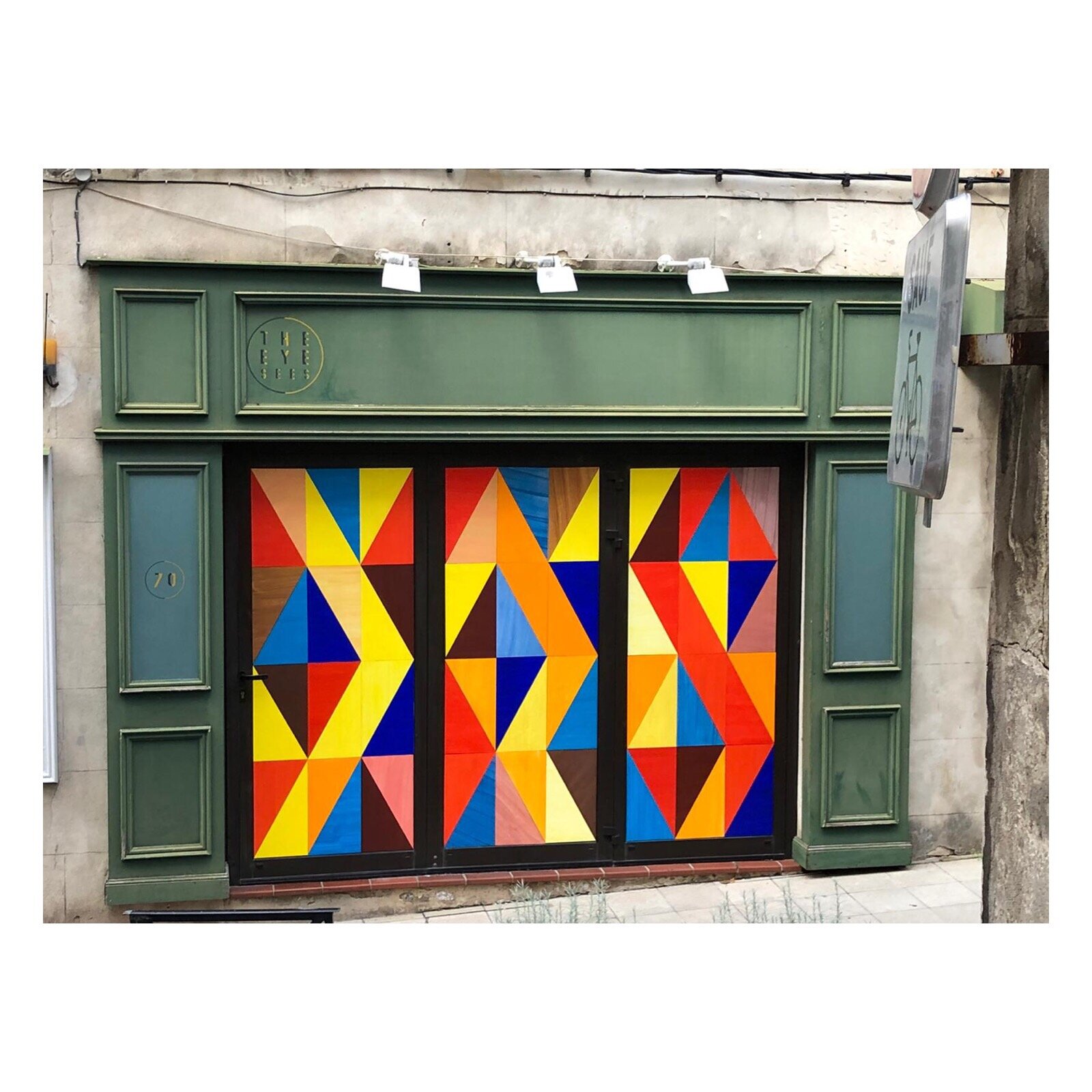
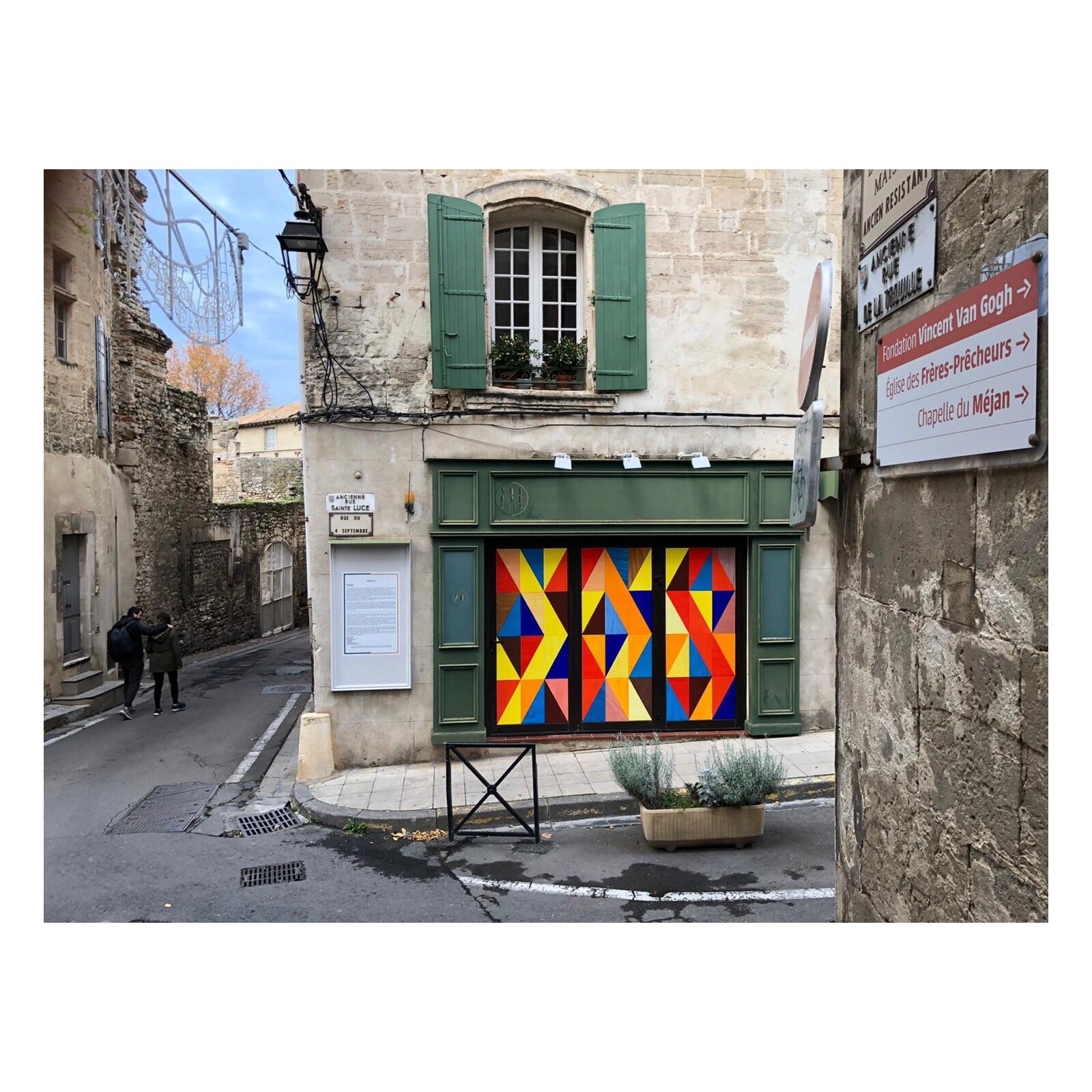
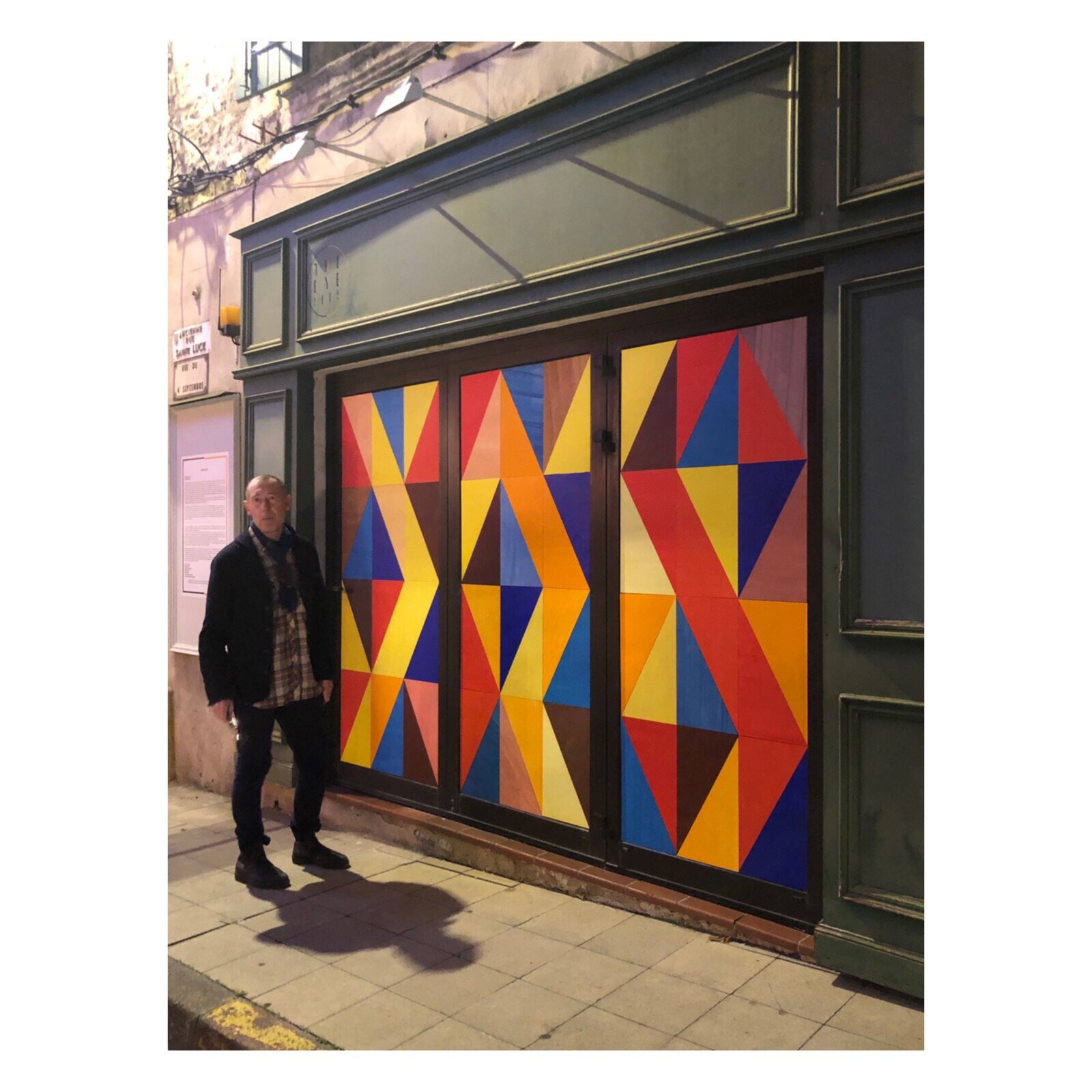






Entractes7 - Gary Colclough - Still light - 11.10.19/28.11.19
“Un voyage régulier en train dans le sud de l’Angleterre me fait traverser la ville de Woking (à 37 km au sud de Londres) où H.G Wells a vécu et écrit La Guerre des Mondes. La ville et ses environs figurent en bonne place dans la première partie du livre et, à mesure que le train me mène plus loin dans la campagne du Surrey, j’essaie de l’imaginer comme toile de fond pour une invasion et autres scénarios catastrophiques.
Récemment, à plusieurs reprises, je suis descendu à Woking et j’y ai exploré les endroits décrits par Wells dans son roman. J’ai cherché des lieux empreints d’une certaine banalité, d’un degré de vide dans lequel je peux me projeter. Je ne peux m’empêcher d’imaginer leur tranquillité comme remplie d’un potentiel d’une découverte imminente ou d’une calamité.
L’image utilisée pour Still light/Entractes7 provient d’une photographie prise à Horsell Common, site de la première rencontre extraterrestre dans le roman. Elle a été manipulée numériquement, mêlant réalité et fiction. La photographie originale a aussi été découpée et reconstruite et de la couleur à été ajoutée en couches transparentes pour imiter l’effet de glacis en peinture, créant ainsi un voile artificiel de couleur qui enveloppe la scène.”
~~~~~~~~~~~~~~~~~~~~~~~~~~~~~~~~~~~~~~~~~~~~~~~~~~~~~~~~~~~~~~~~~~~~~~~~~~~~~~~~
‘A regular train journey I take in the south of England takes me through the town of Woking, where H.G. Wells lived and wrote War of the Worlds. The town and surrounding area feature prominently in the first part of the book and as the train carries me further into the Surrey countryside I try to imagine it as a backdrop for an invasion and other doomsday scenarios.
Recently I’ve been getting off the train at Woking and seeking out locations described in Wells’s novel. I go looking for scenes that have a certain ordinariness, a degree of blankness onto which I can project. I can’t help myself but imagine their stillness as loaded with the potential of imminent discovery or catastrophe.
The image in Still light/Entractes7 comes from a photograph taken in Horsell Common, the site of the first alien encounter in the novel. The photograph has been manipulated digitally, intertwining reality and fiction. The original photograph has been sliced up and reconstructed, and colour has been added in transparent layers to mimic the effect of glazing in painting, creating an artificial coloured haze that shrouds the scene.’
@gary_colclough
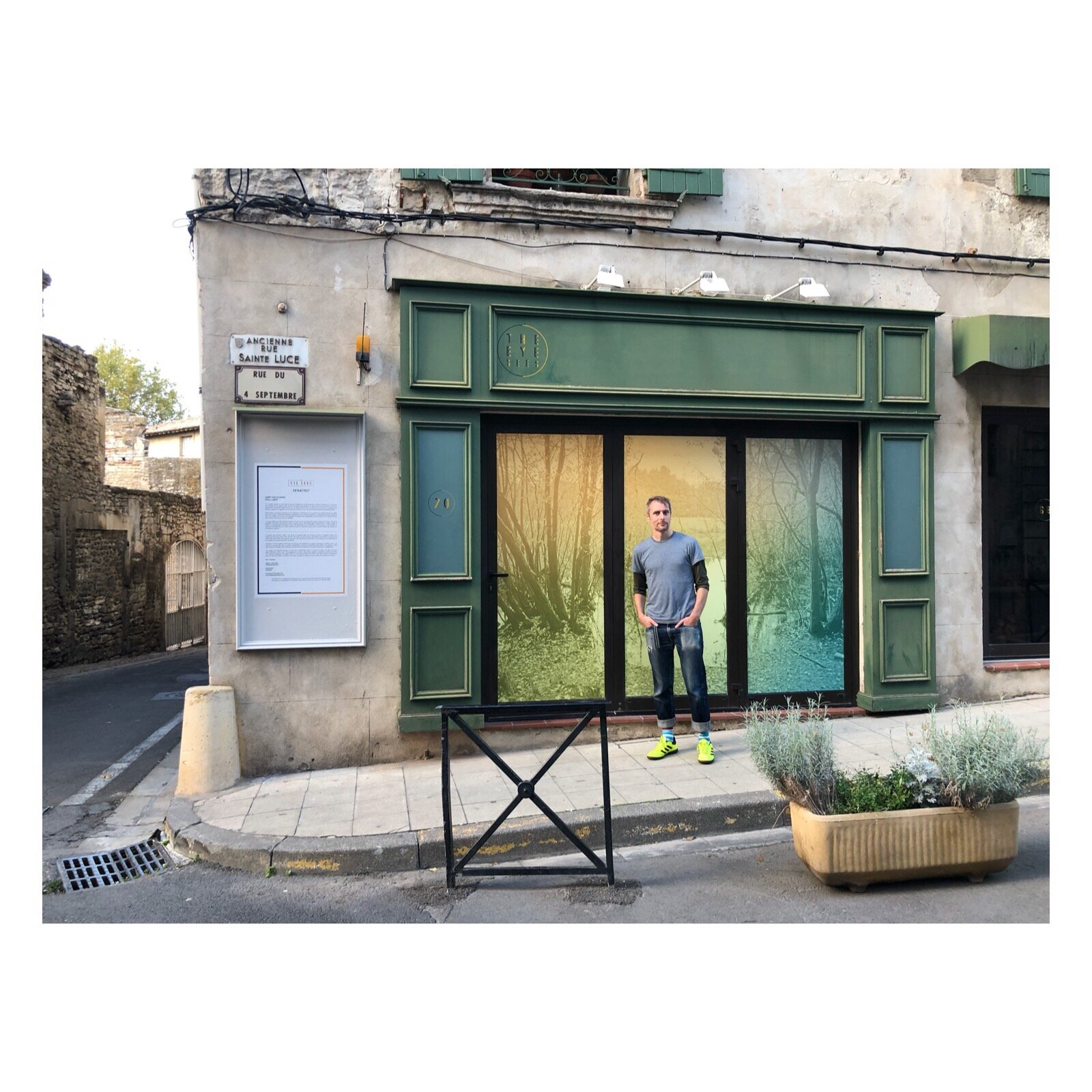
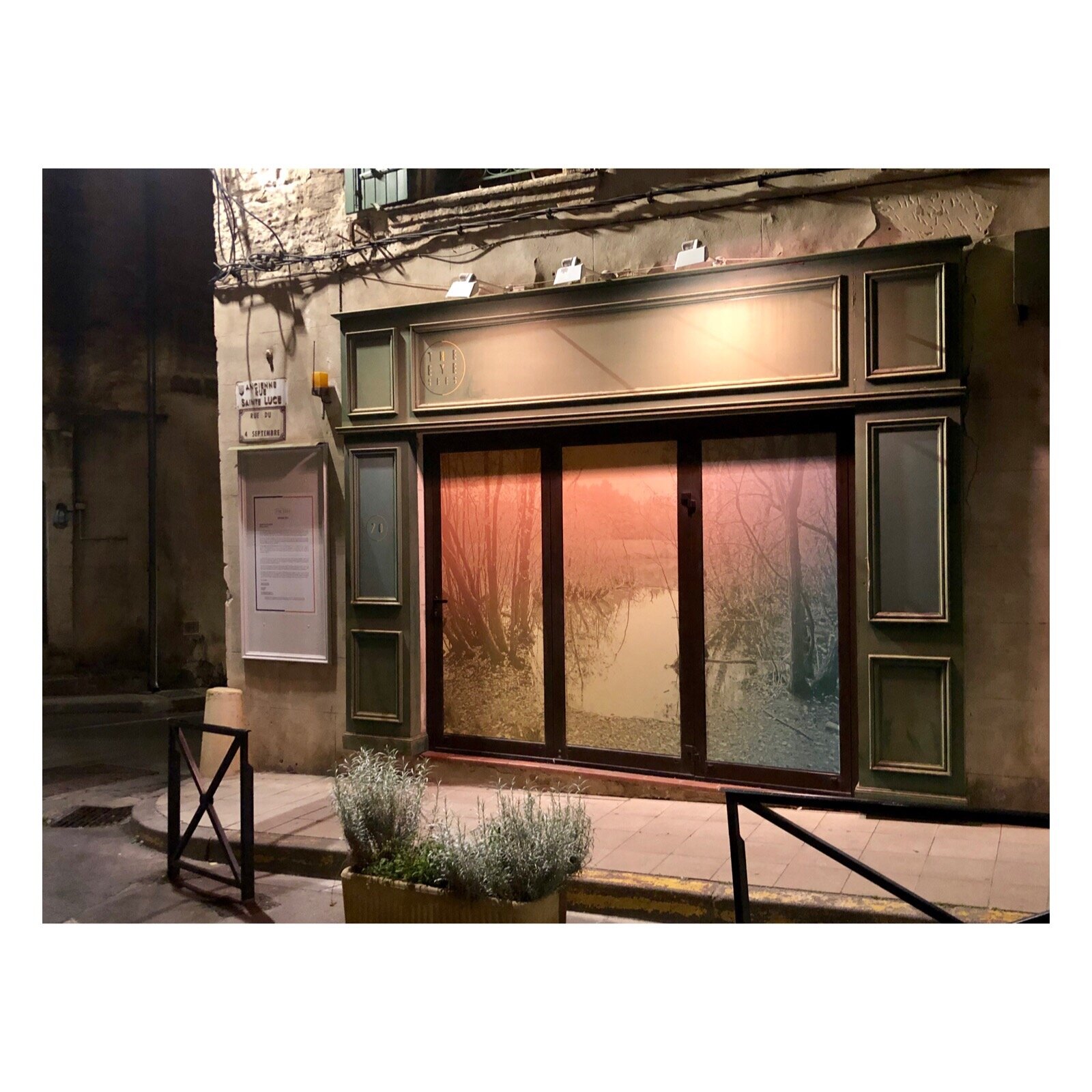
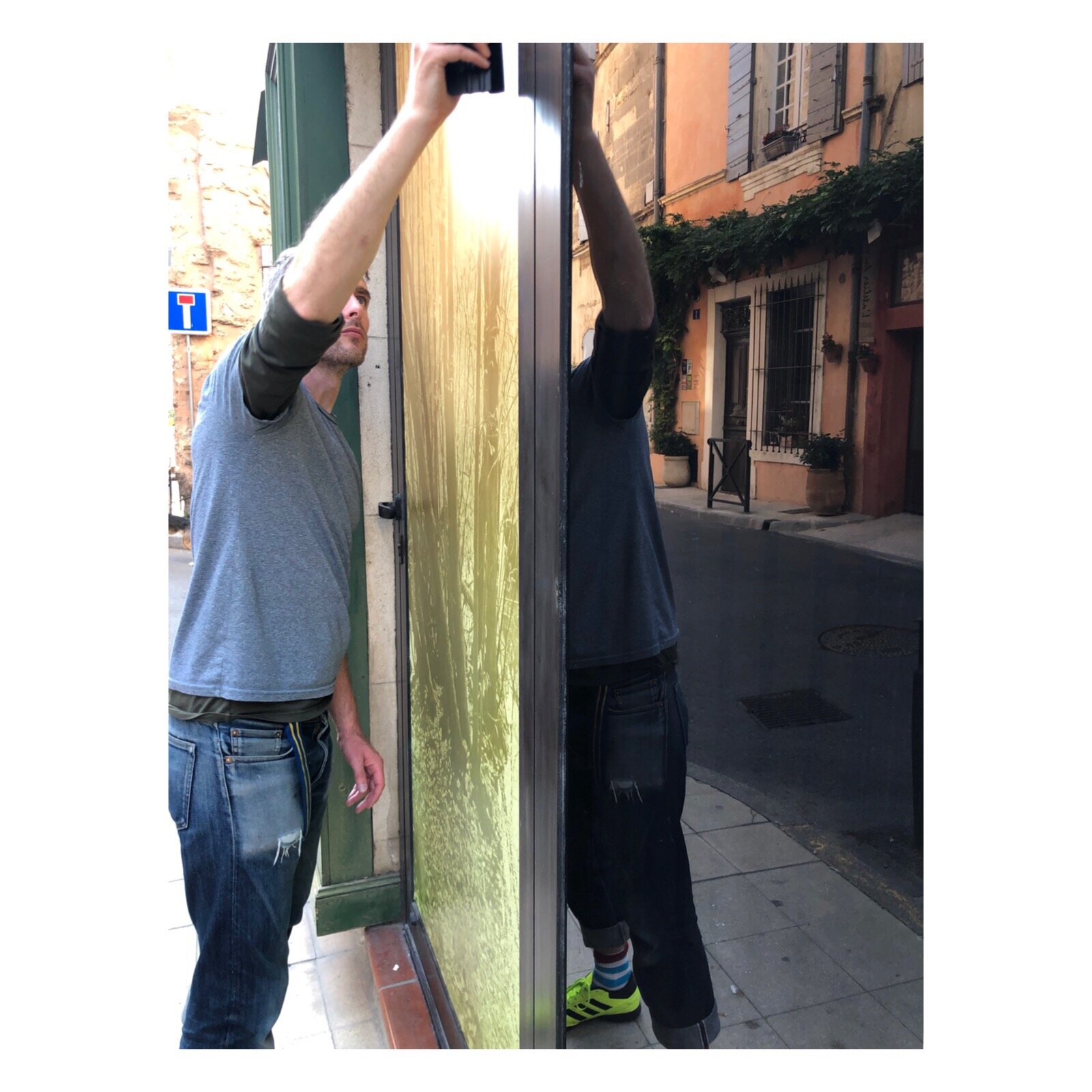
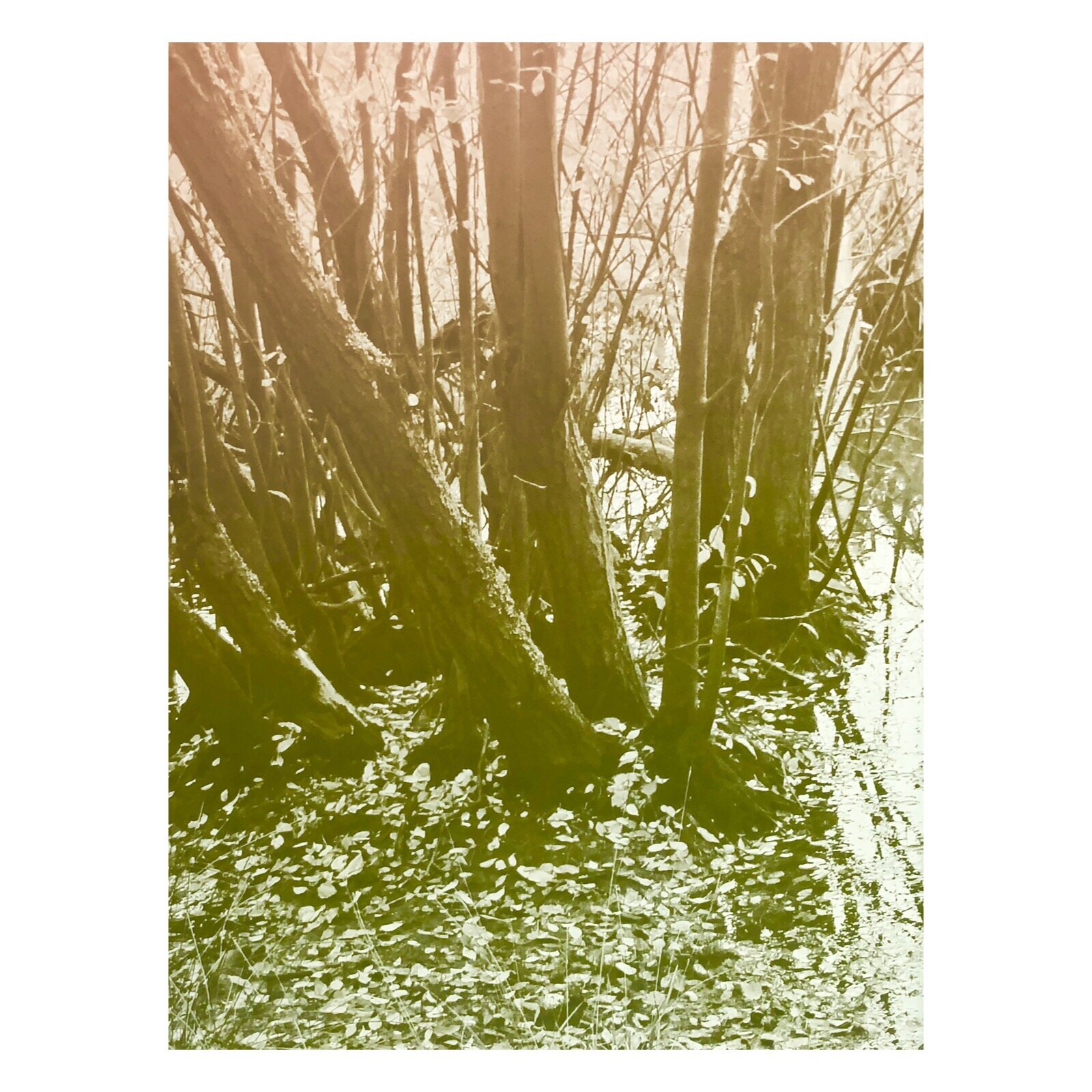
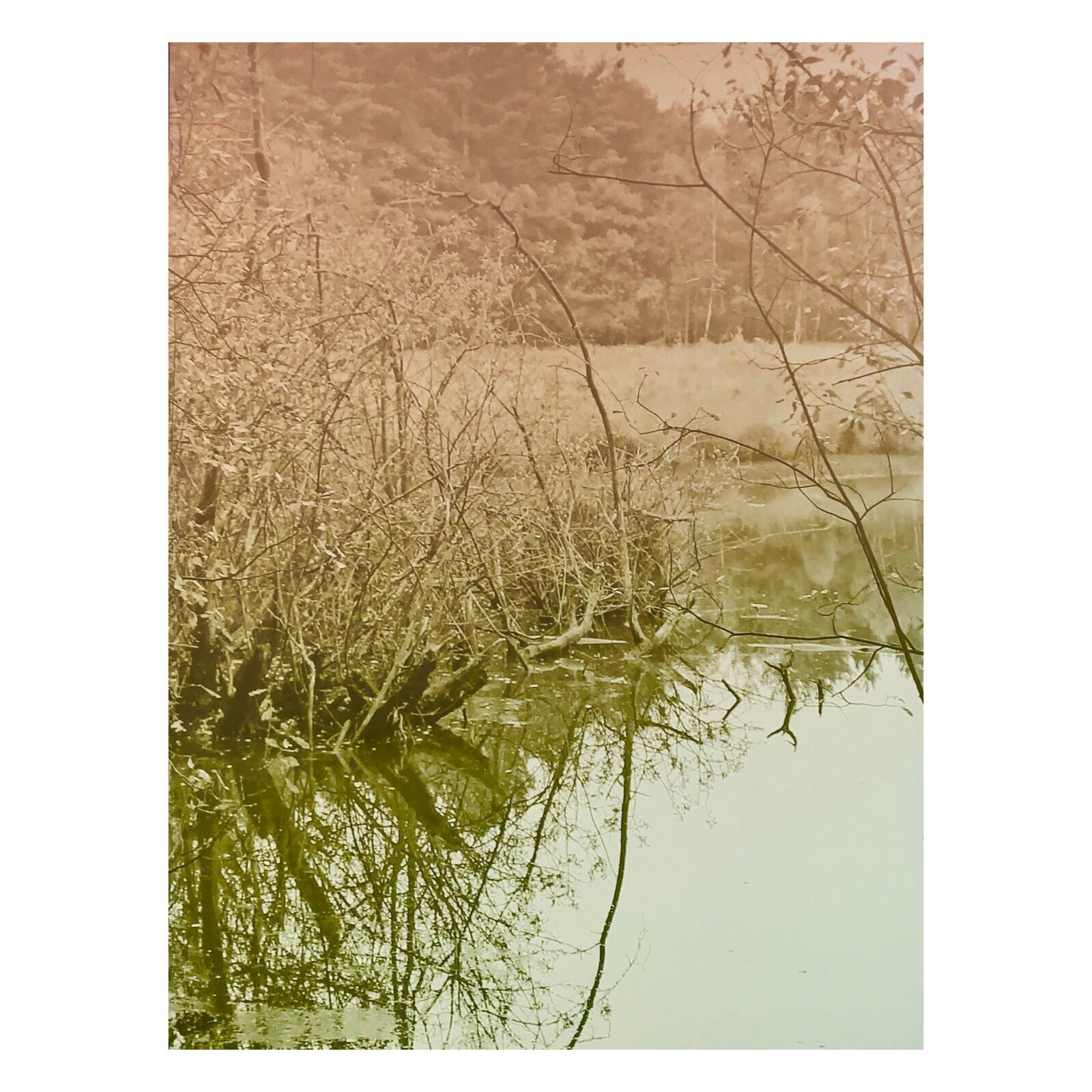

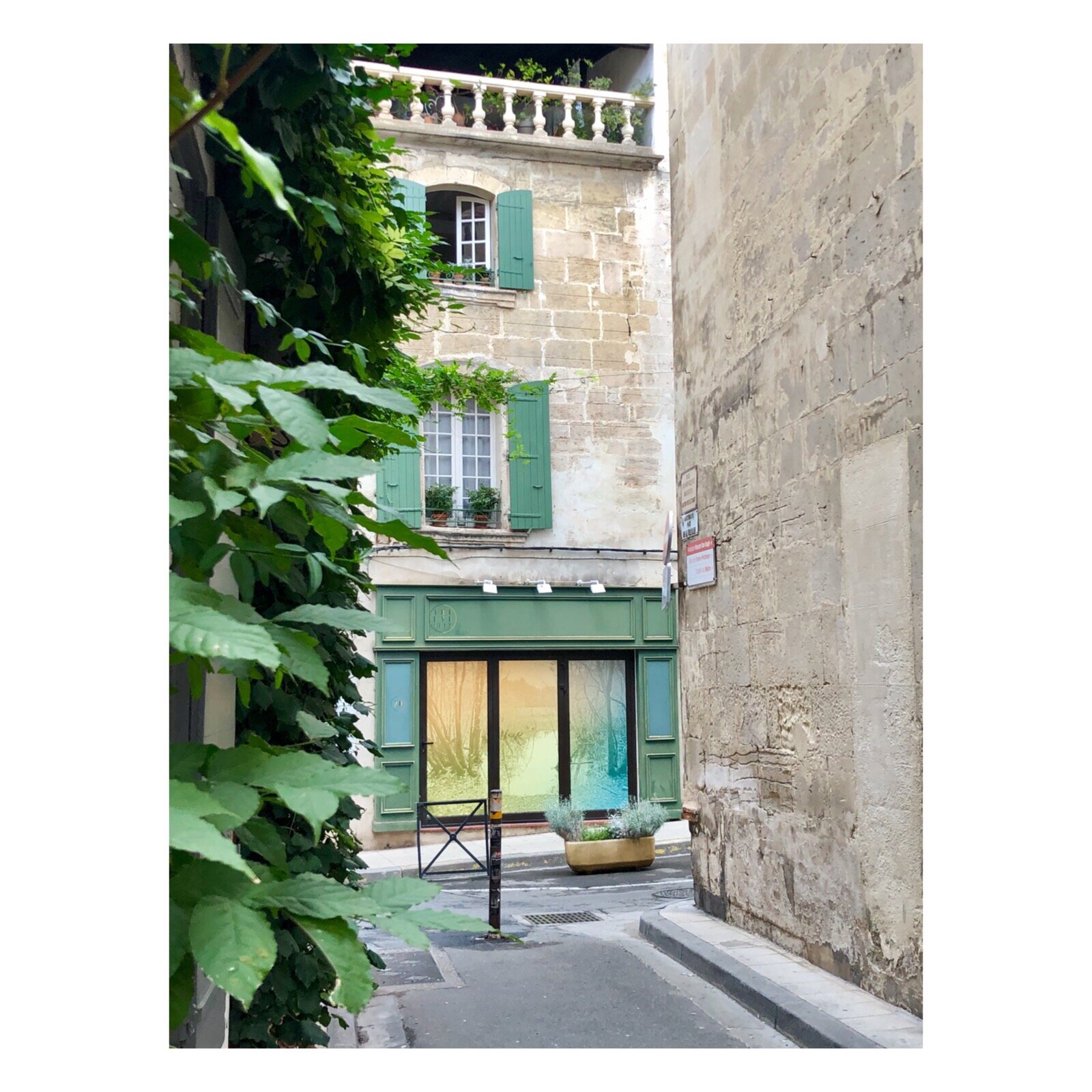
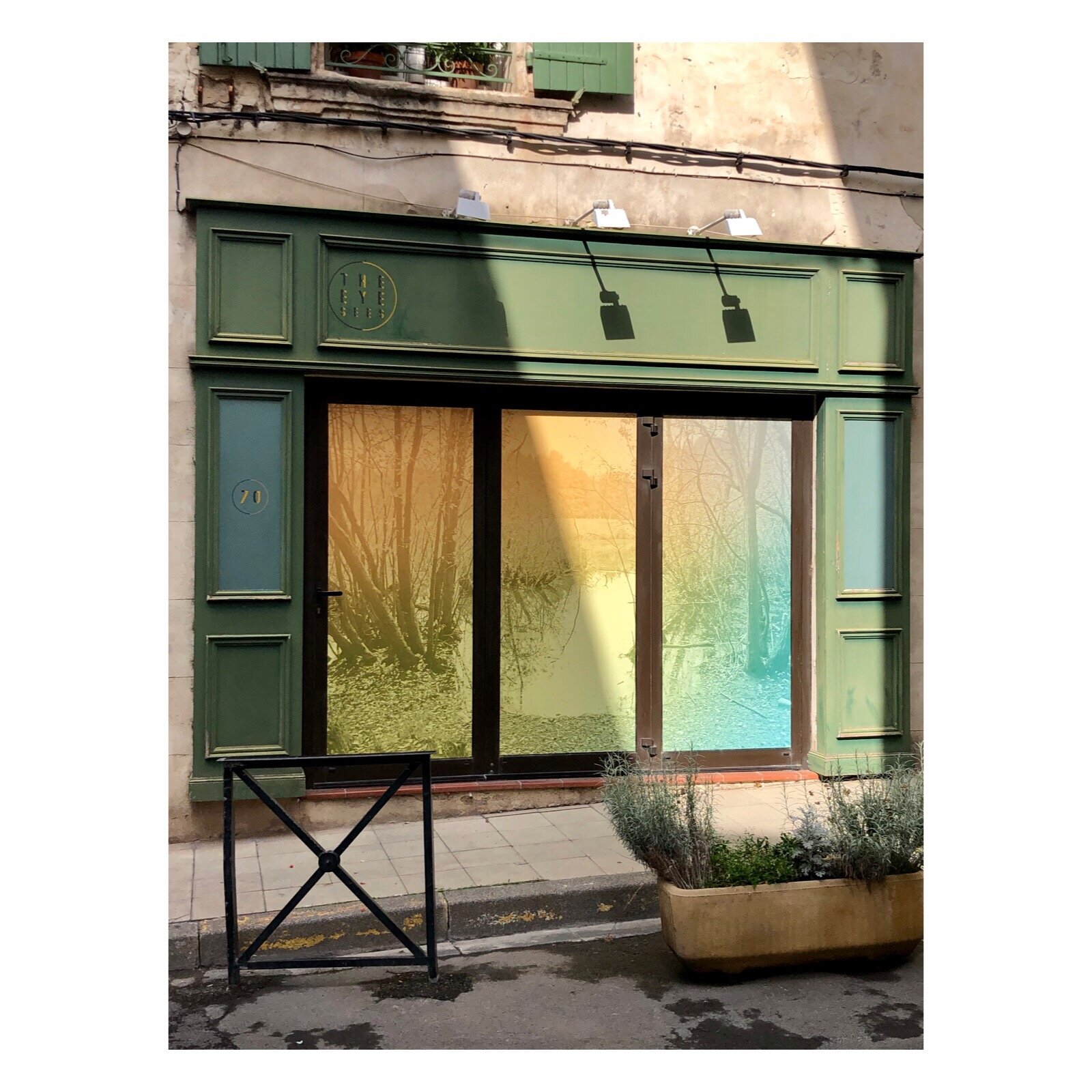
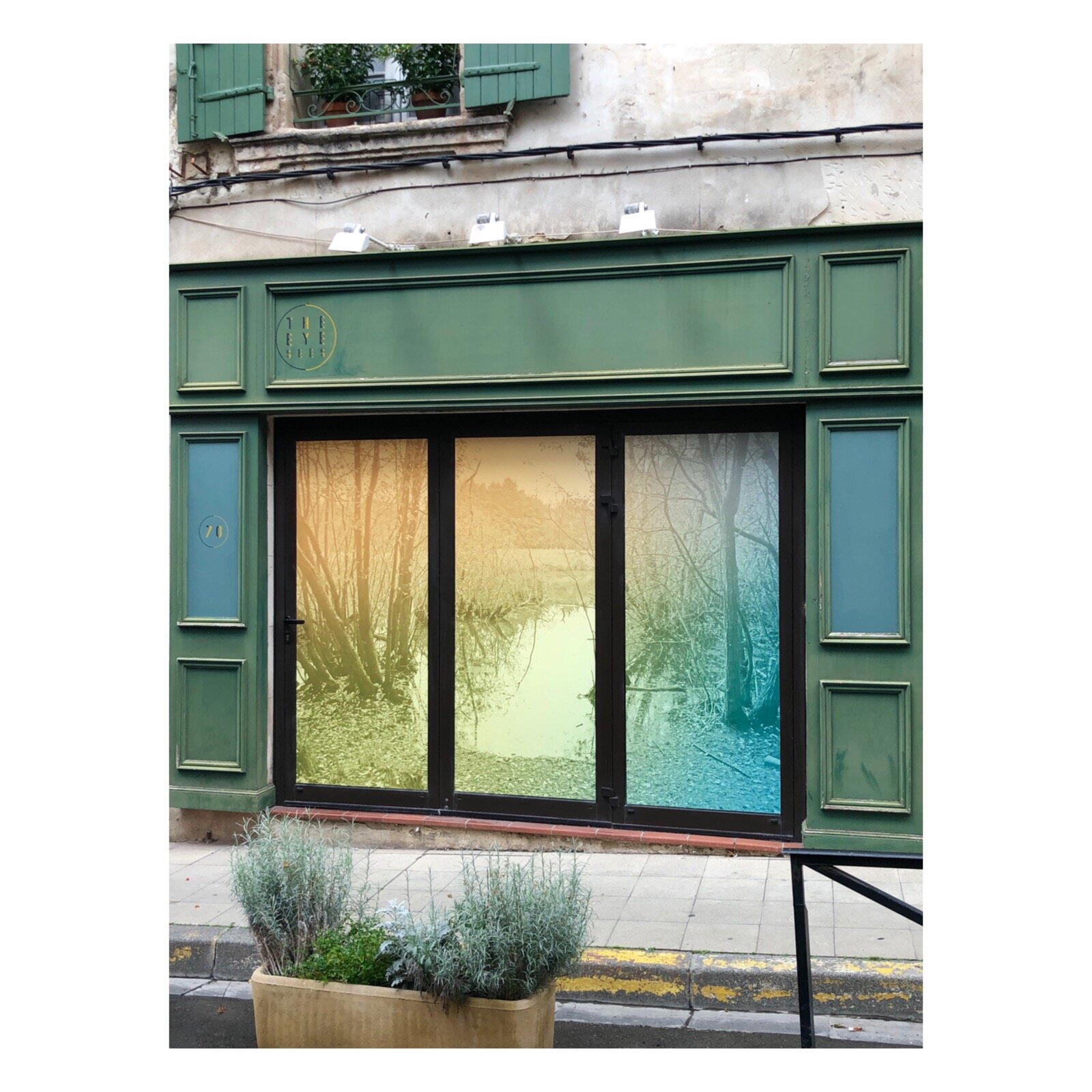
Entractes6 - Guillaume Delleuse - Corpus (extraits) - 18.07.19/13.09.19
“ Le corps, la peau, la chair, la fragmentation du corps, ma propre relation au corps, l’espace, l’interaction d’un corps ou de plusieurs corps dans un espace défini, un espace défini par une situation, un moment donné, un endroit. Je photographie de manière récurrente ces motifs.
Le corps est le sujet principal de mes compositions, il s’empare de l’espace.
Je m’approche au plus près de mes sujets et ces corps photographiés perdent leur anonymat.
L’intimité devient essentielle.
Je travaille en noir et blanc et l’utilisation du flash me permet de faire ressortir la matière sur le corps, les marques du temps sur la peau, les cicatrices, les tatouages, les rides...
Je sacralise les corps que je photographie.
Le corps du Christ sur la croix est aussi un motif récurant, une obsession.
L’obsession fait partie intégrante de mon travail, c’est ce qui me fait avancer.
Mes images forment un corpus photographique.
Je ne travaille pas sous forme de série. Je sélectionne différentes images selon mes accrochages et l’histoire que je veux raconter à travers elles.
Ici, avec Corpus (extraits) pendant 8 semaines du 19 Juillet au 13 Septembre, 9 images interviendront en ce sens. Au fil des semaines, une image sera remplacée par une autre, un corps en deviendra un autre et avec chaque nouveau triptyque, une iconographie chretienne ancrée dans une tradition de l'image religieuse se révèlera.”
~~~~~~~~~~~~~~~~~~~~~~~~~~~~~~~~~~~~~~~~~~~~~~~~~~~~~~~~~~~~~~~~~~~~~~~~~~~~~~~~~~~~~~~~~~~
"The body, the skin, the flesh, the fragmentation of the body, my own relationship to the body, the space, the interaction of a body or several bodies in a defined space, a space defined by a situation, a given moment, a place. I return to these themes repeatedly.
The body takes pride of place and is the main subject of my compositions.
I get as close as possible to my subjects and these photographed bodies lose their anonymity.
Intimacy becomes paramount.
I work with black and white and by using a flash it allows me to highlight the body and its materiality, the marks of time on the skin, scars, tattoos, wrinkles ...
I sanctify the bodies that I photograph.
The body of Christ on the cross is also a recurring motif, an obsession even.
Obsession is an integral part of my work, it is what makes me progress.
My images belong to a body of photographic work - a corpus.
I do not work in series. This allows me to make different selections of images depending on where I show them and the story I want to tell through them.
Here, with Corpus (extraits) during 8 weeks from July 19th to September 13th, a rotation of 9 images will take this idea one step further. Over the weeks, one image will be replaced by another, one body will become another and with each new triptych, a Christian iconography anchored in a tradition of the religious image will be revealed.”
@guillaumedelleuse
www.guillaumedelleuse.com
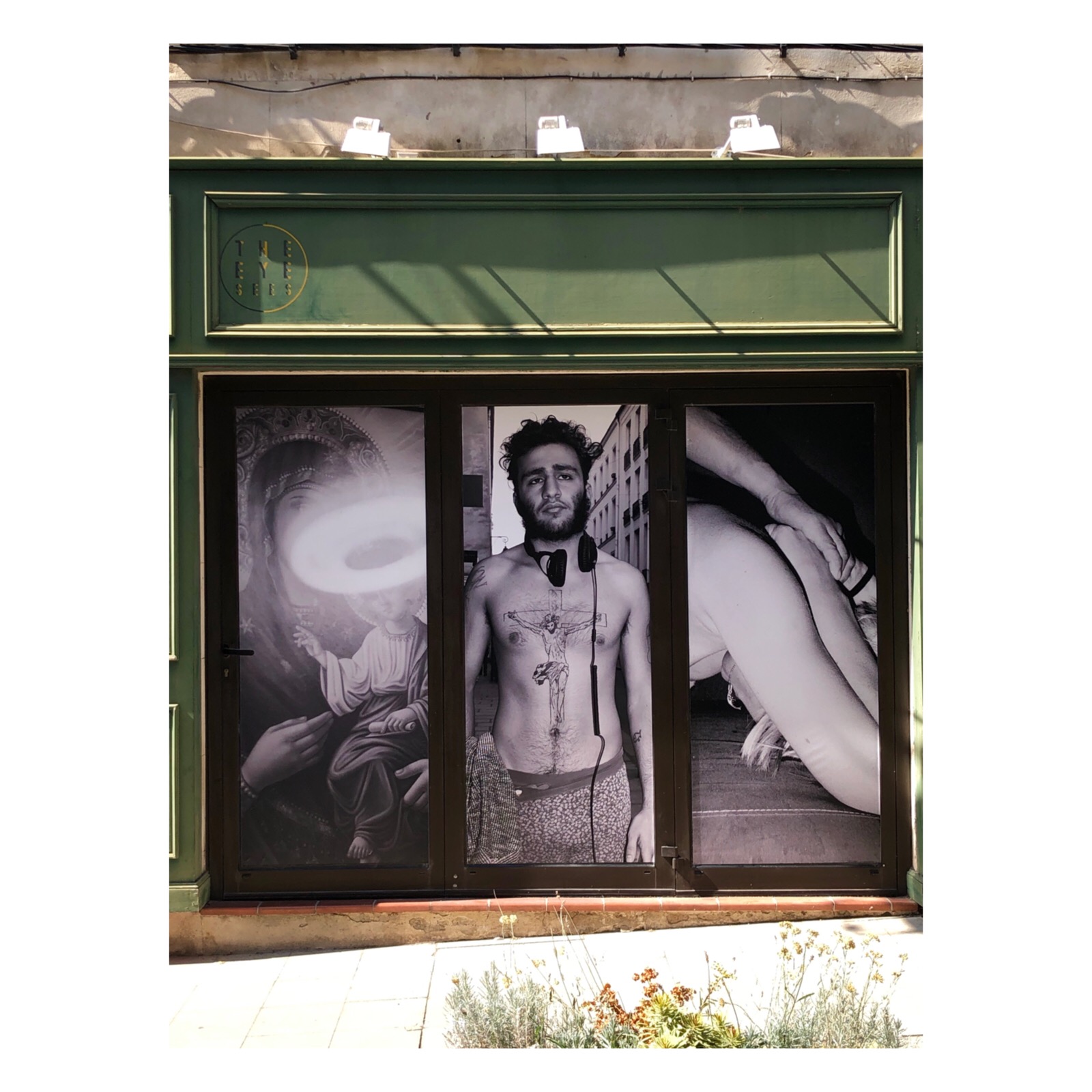
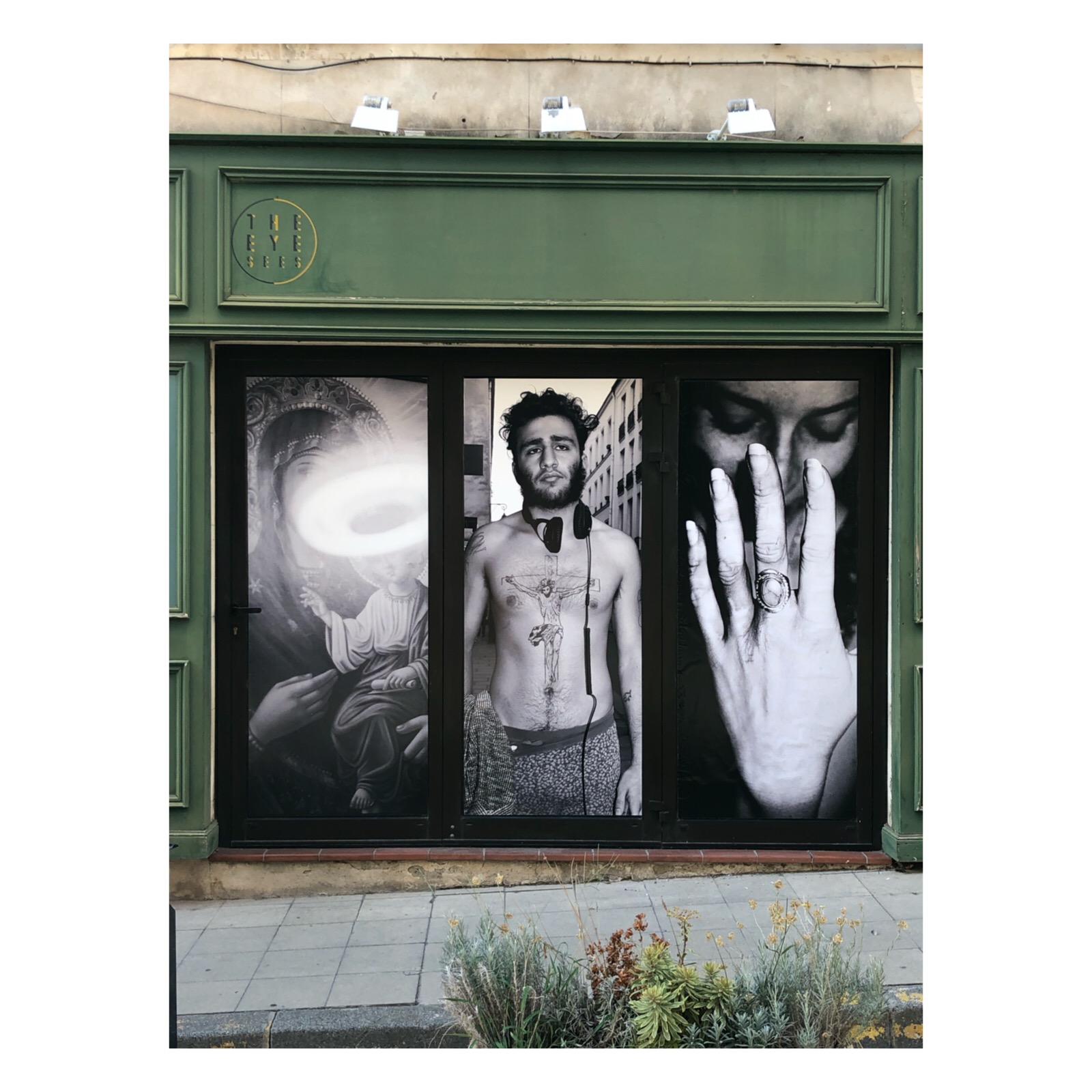

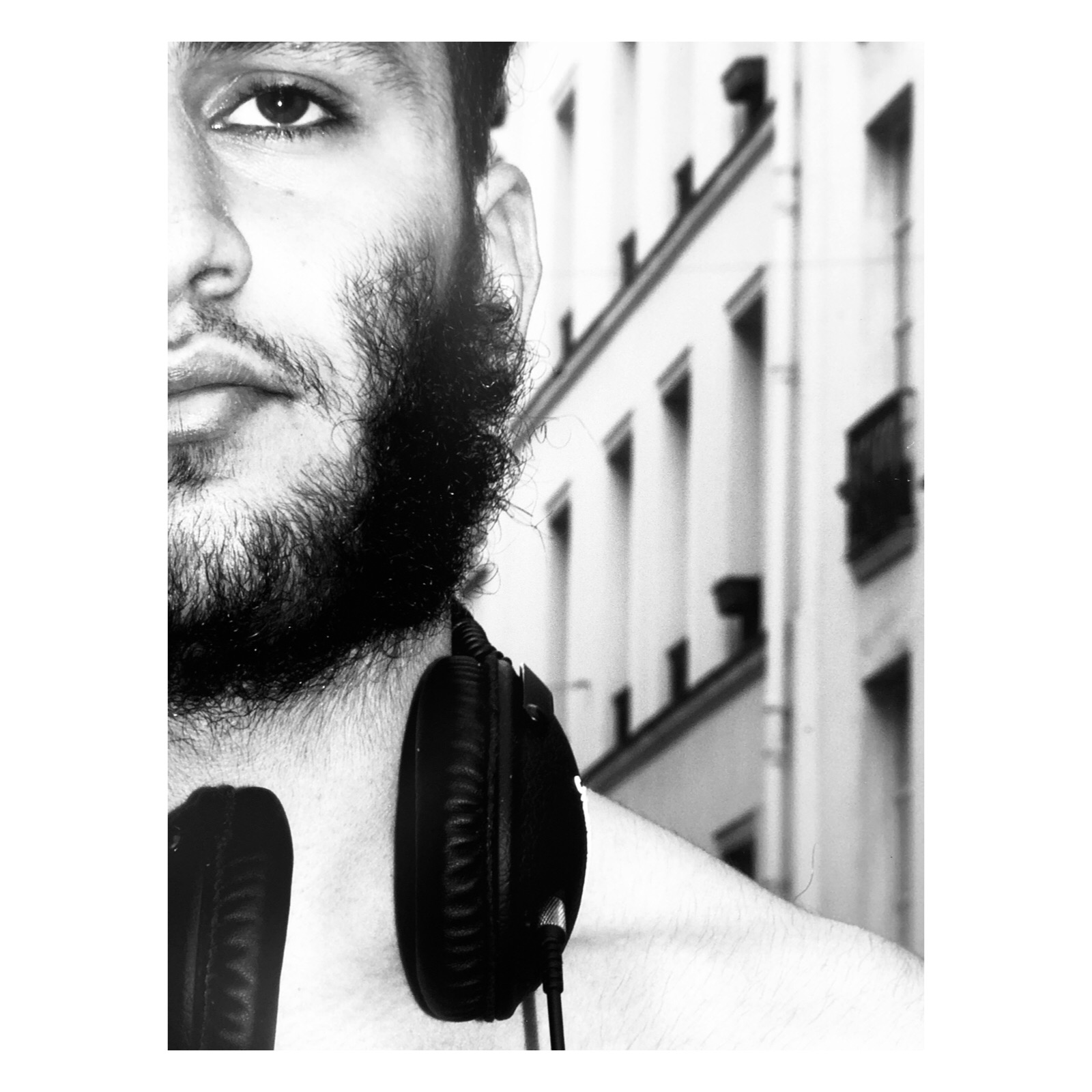

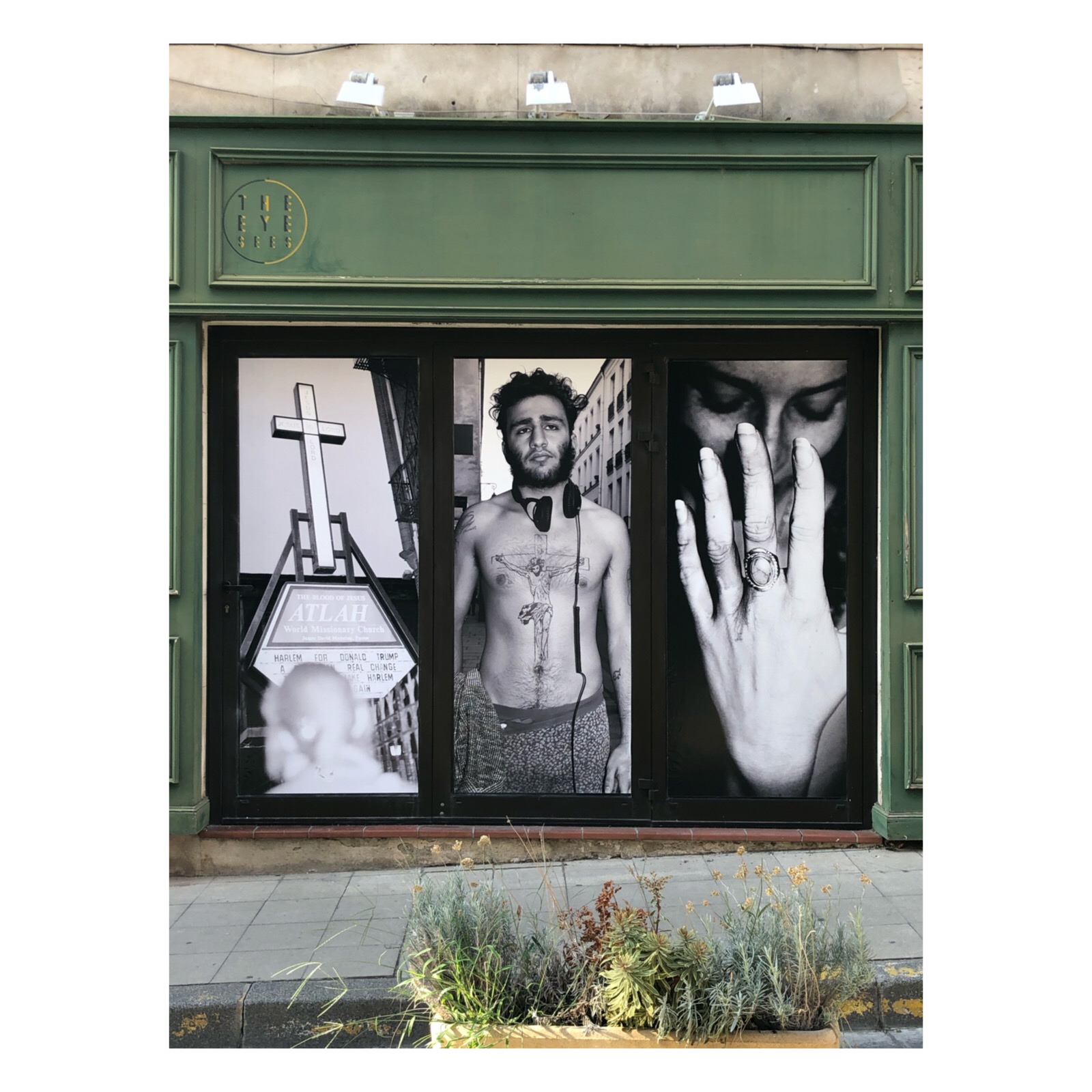
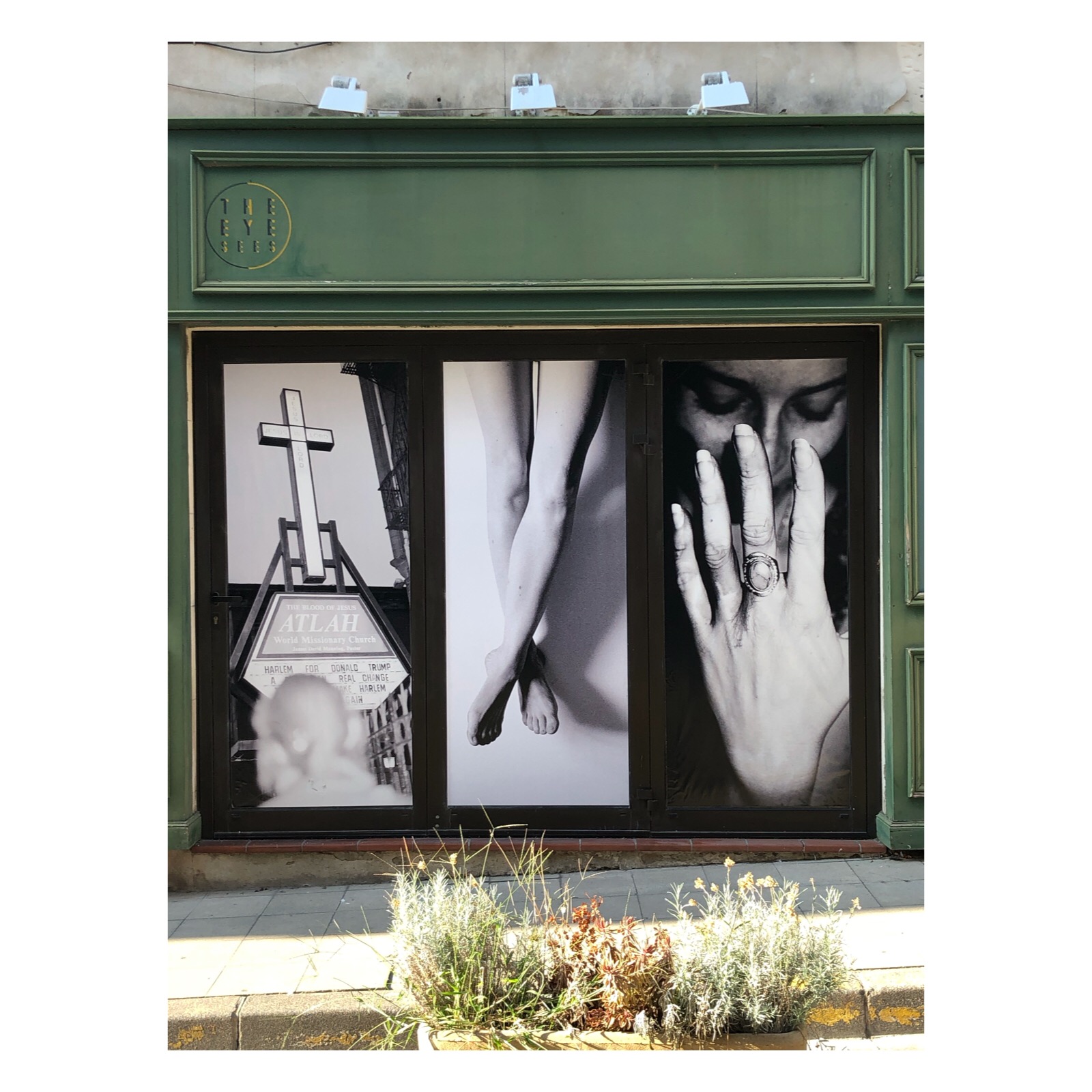
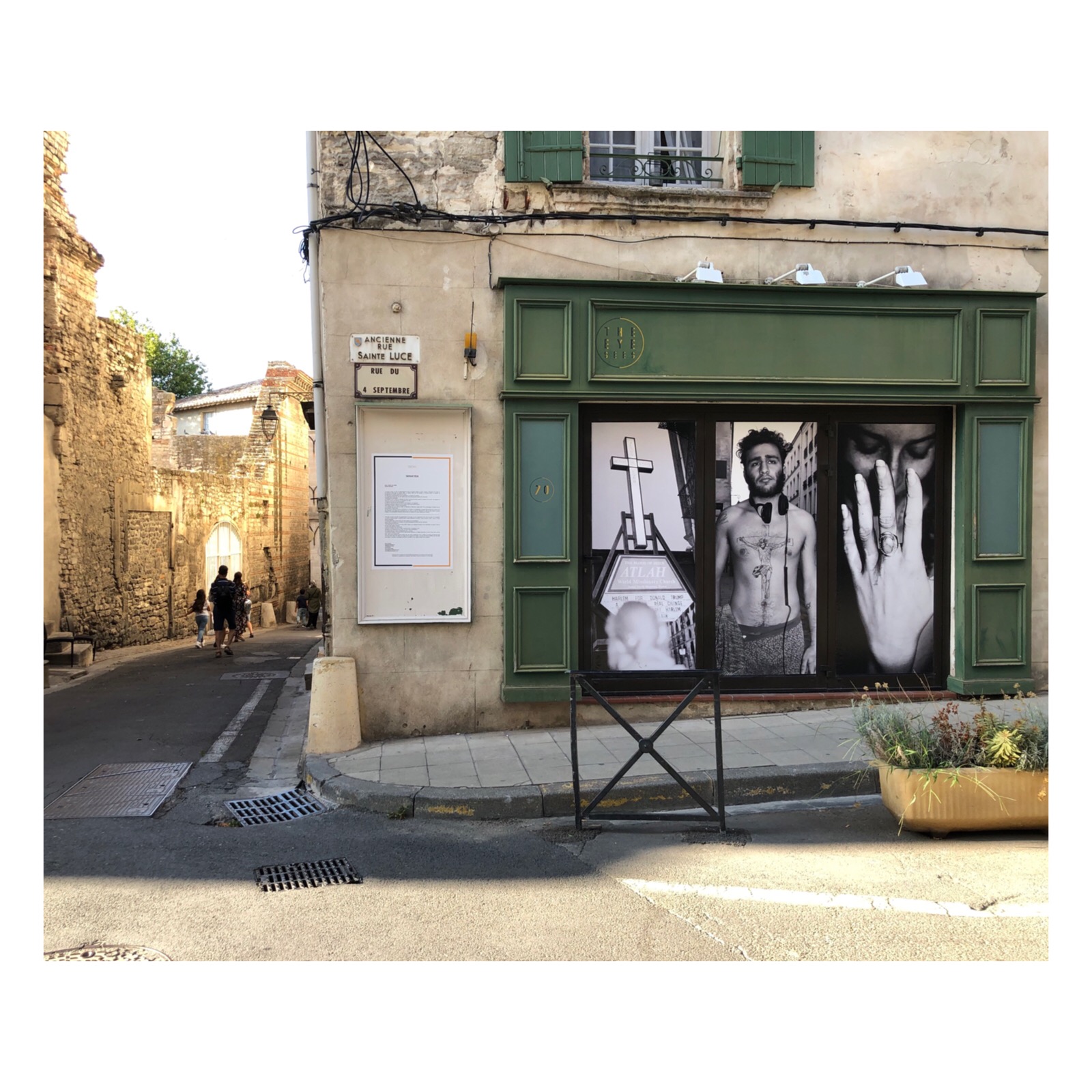
Entractes5 - Fiona Grady (UK) - Lux - 09.05.19/29.06.19
L’artiste anglaise Fiona Grady crée des installations in situ. Sa pratique reconnaît la relation existant entre l’architecture, l’installation et la décoration. Fiona joue avec la lumière, la surface et l'échelle: chaque oeuvre évolue au fil de la journée, insistant sur sa propre nature intrinsèquement éphémère et sur le passage du temps. Ses interventions explorent la structure de leur site et travaillent avec le tissu même du bâtiment pour ainsi mettre en valeur des détails de leur environnement.
Pour son exposition «Lux», un motif géométrique constitué de triangles colorés et métalliques dance d’une vitre à une autre. Les formes en vinyle reflètent ou filtrent la lumière pour créer un double effet: l'expérience de chacun avec cette création variera en fonction de sa proximité physique de l'œuvre et de l'heure. La lumière du jour a une relation importante avec l’installation, activant certains éléments du vinyle pour projeter des ombres colorées à l’intérieur de The Eye Sees, tout en permettant aussi au vinyle métallique de refléter les rues environnantes et d’introduire leur image sur la façade de la galerie.
~~~~~~~~~~~~
British artist Fiona Grady creates site-responsive installations. Her practice recognizes the relationship between architecture, installation art and decoration. Fiona plays with light, surface and scale - each piece changes with the light of day, emphasizing the passing of time and the ephemeral nature of the work. Her interventions explore the framework of their site, working with the fabric of the building, and thus pin-point details in their surroundings.
For her exhibition ‘Lux’ the windows of Entractes play temporary host to a geometric motif that criss-crosses the window panes with coloured and metallic triangles. The vinyl shapes either reflect or filter light to create dual effects - the experience of viewing the artwork varies depending on the proximity to the work and the time of day. Daylight has an important relationship with the installation, activating elements of the vinyl to cast coloured shadows within The Eye Sees, whilst also allowing the metallic vinyl to mirror the surrounding streets and introduce their image onto the gallery frontage.
@fiona_grady
www.fionagrady.co.uk
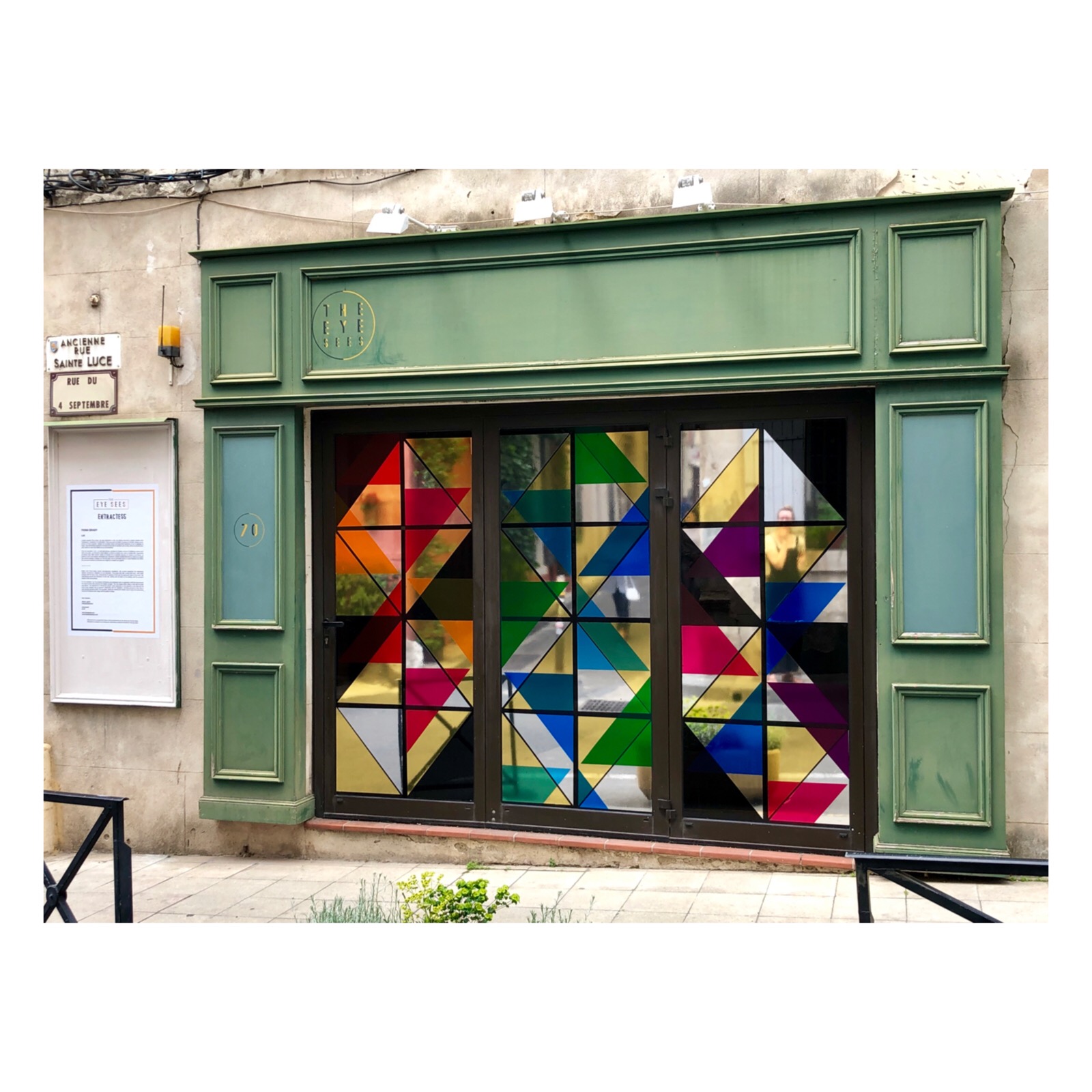
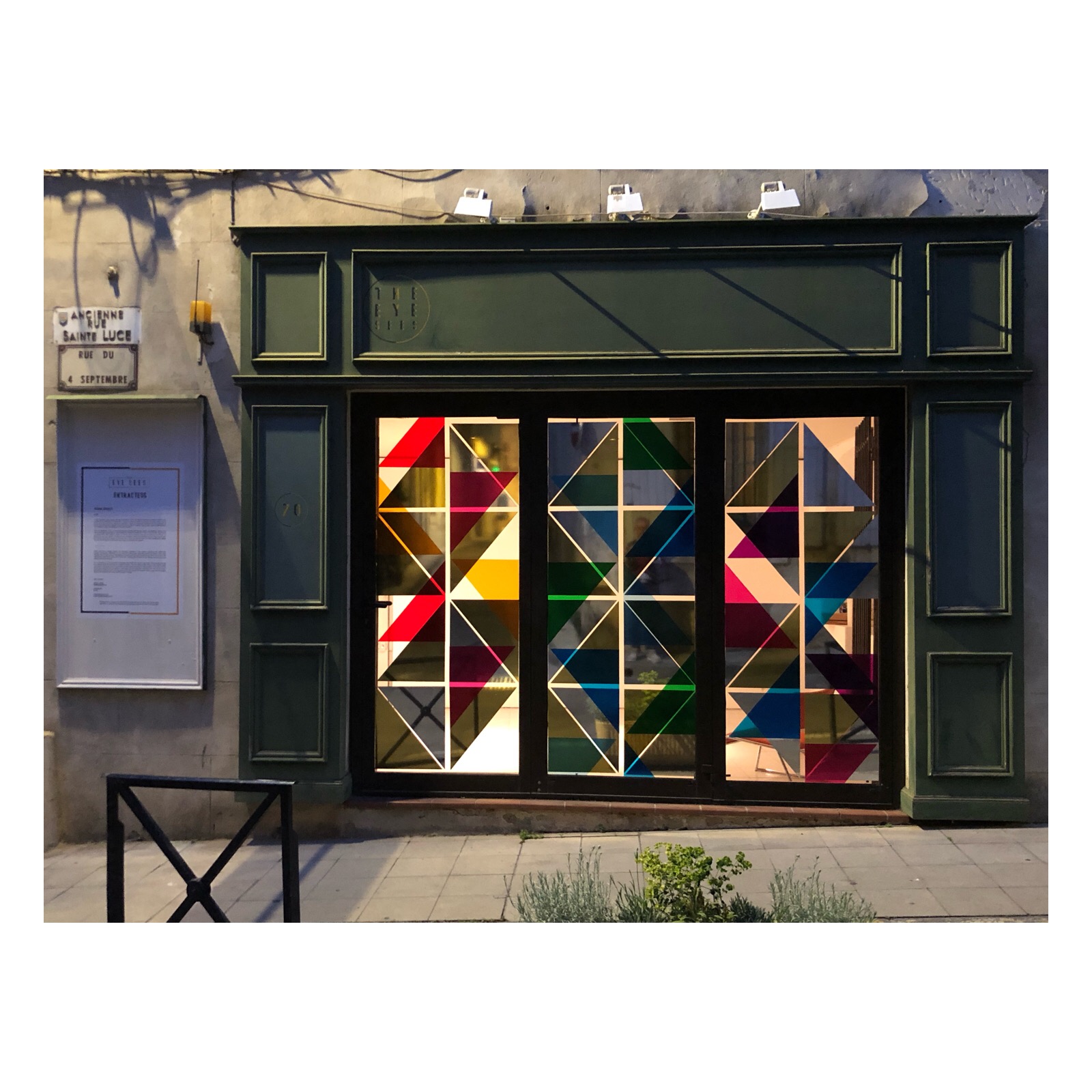

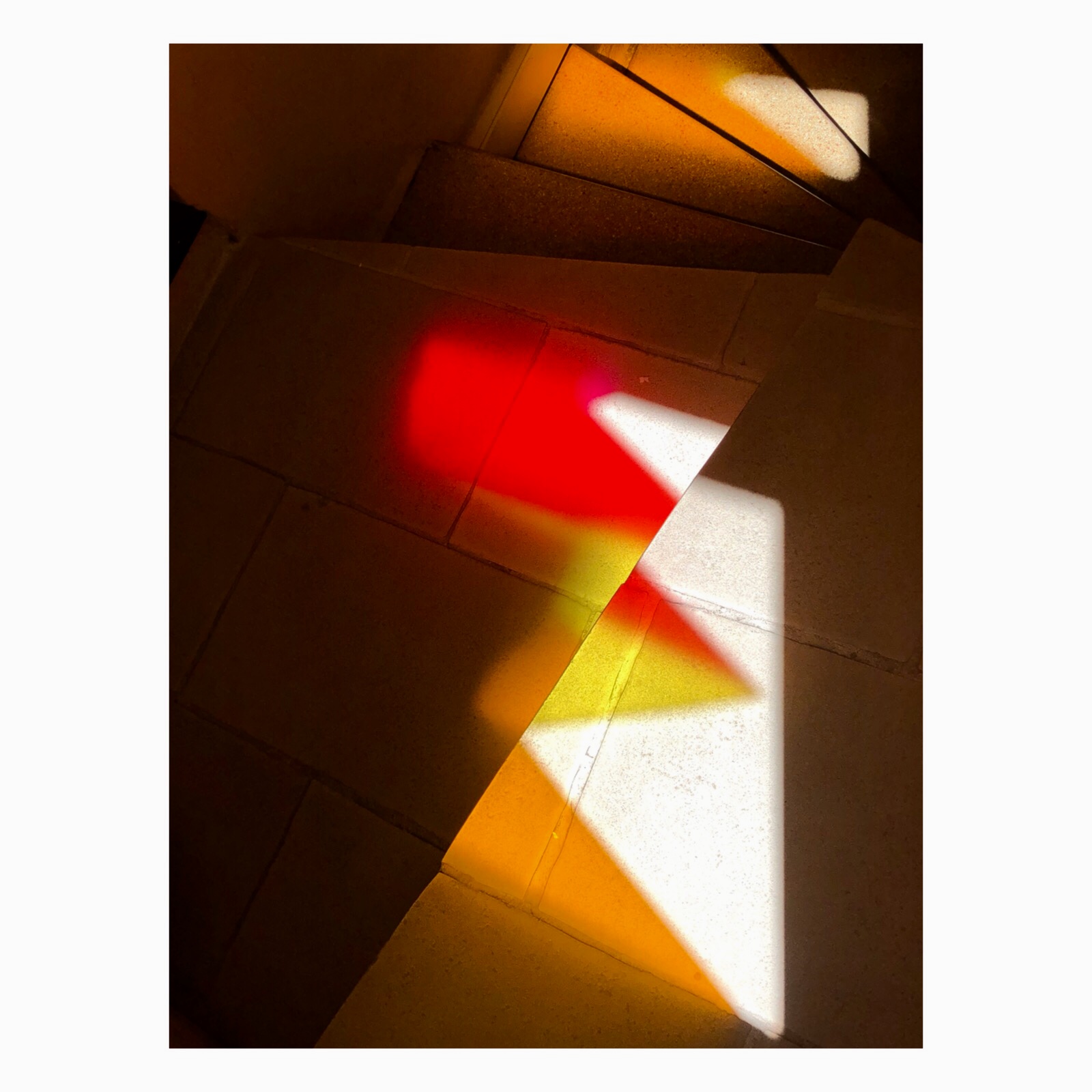
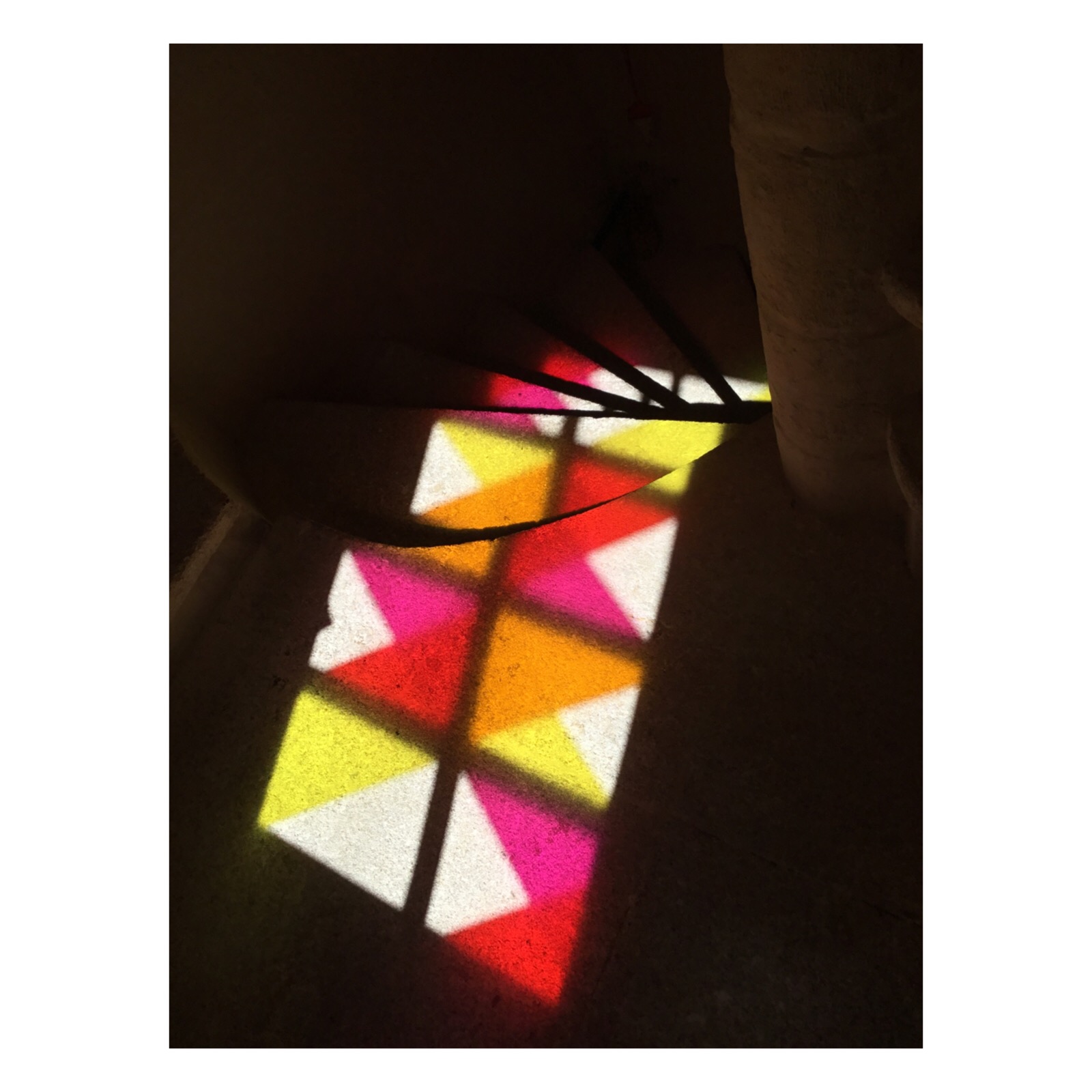
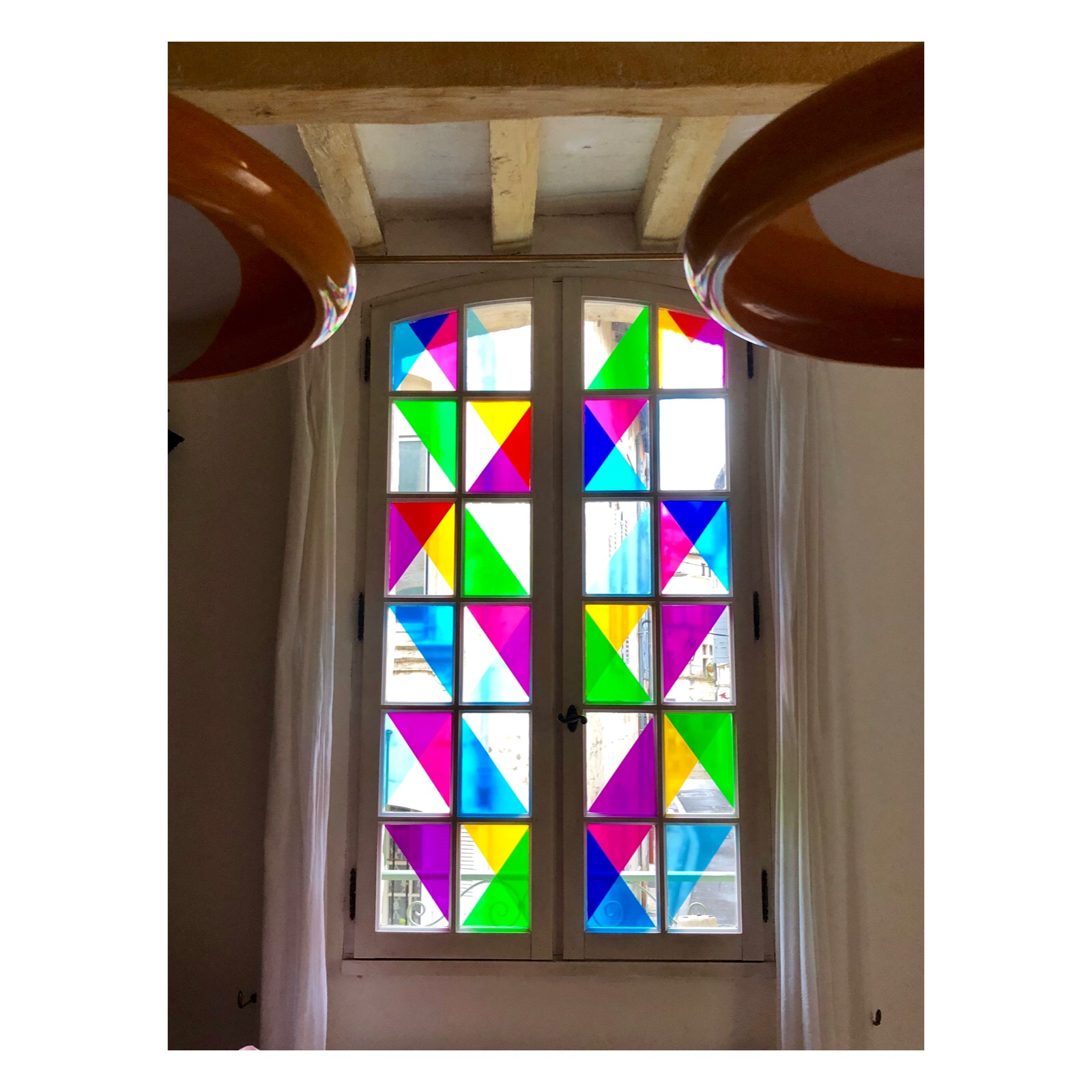

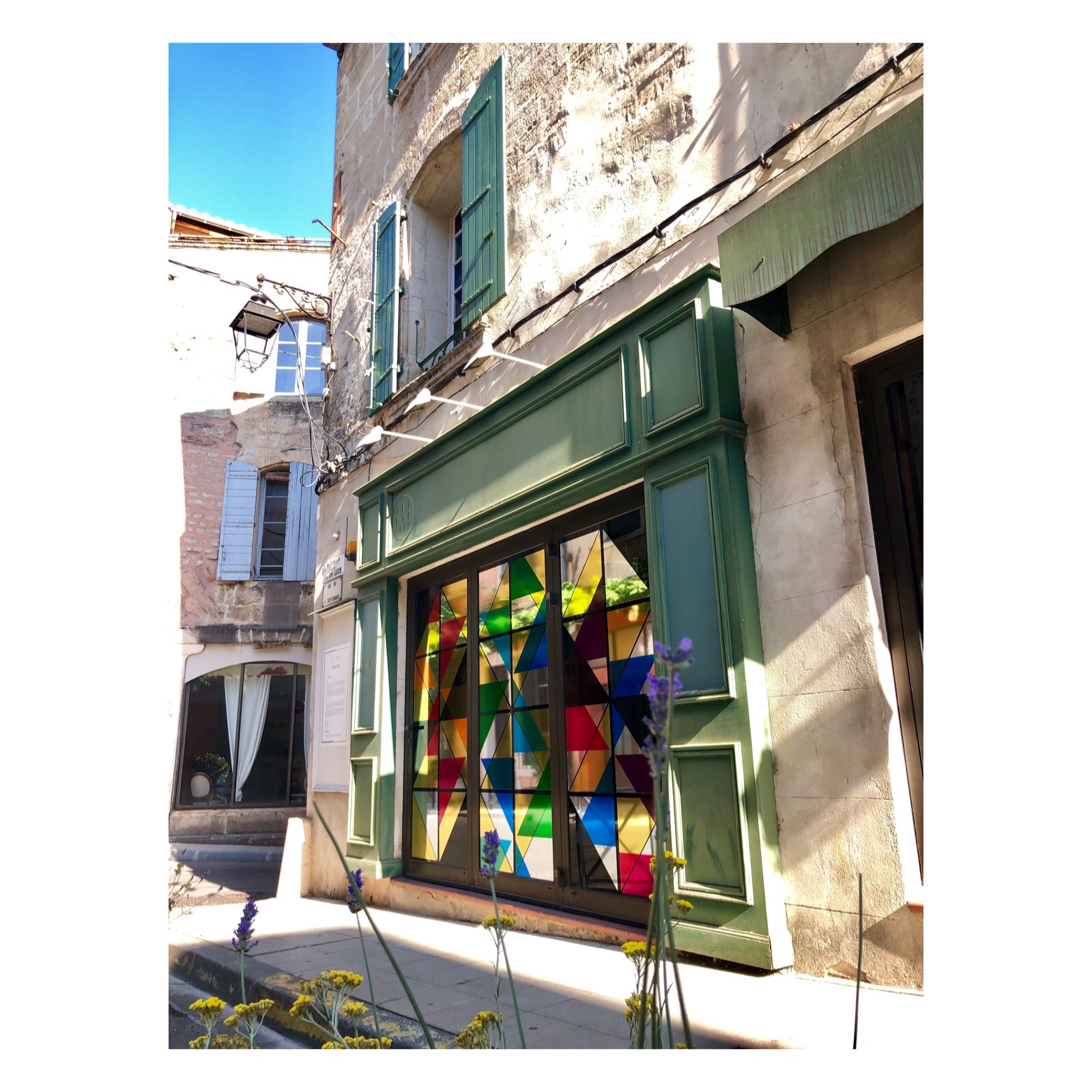

Entractes4 - Joana Luz (Brazil/France) - Double sunset - 05.04.19/07.05.19
Double Sunset (Psychanalyse du feu)
extrait de la série Etudes du Feu, recherche développée lors d’une résidence artistique à L’ENSP-Arles, 2018.
«Il n’y a pas de stabilité dans les choses physiques»*. Cette photographie fait partie d’un travail autour du feu, des révolutions et des rêves. Je convoque la poésie pour libérer les frontières et tensions entre simulation et réalité, superposant des temps d’images pour improviser des paysages fantasmés et des films sans fin. Une perspective cinématique s’impose.
*«La certitude est mathématique et pas plus.» Fernando Pessoa
~~~~~~~~~~
Double Sunset (Psychoanalysis of fire)
from the Fire Studies, research developed during an artistic residence at ENSP-Arles, 2018.
«There’s no stability in physical things»*. This image is part of a work based on fire, revolutions and dreams - superpositions of time made through empirical, improvised processes, creating unrealistic landscapes and films with no end. I convoke poetry to free the boundaries and tensions between simulation and reality. A cinematic perspective imposes itself.
*«Certitude is mathematical and no more.» Fernando Pessoa
@joluz
www.joanaluz.co
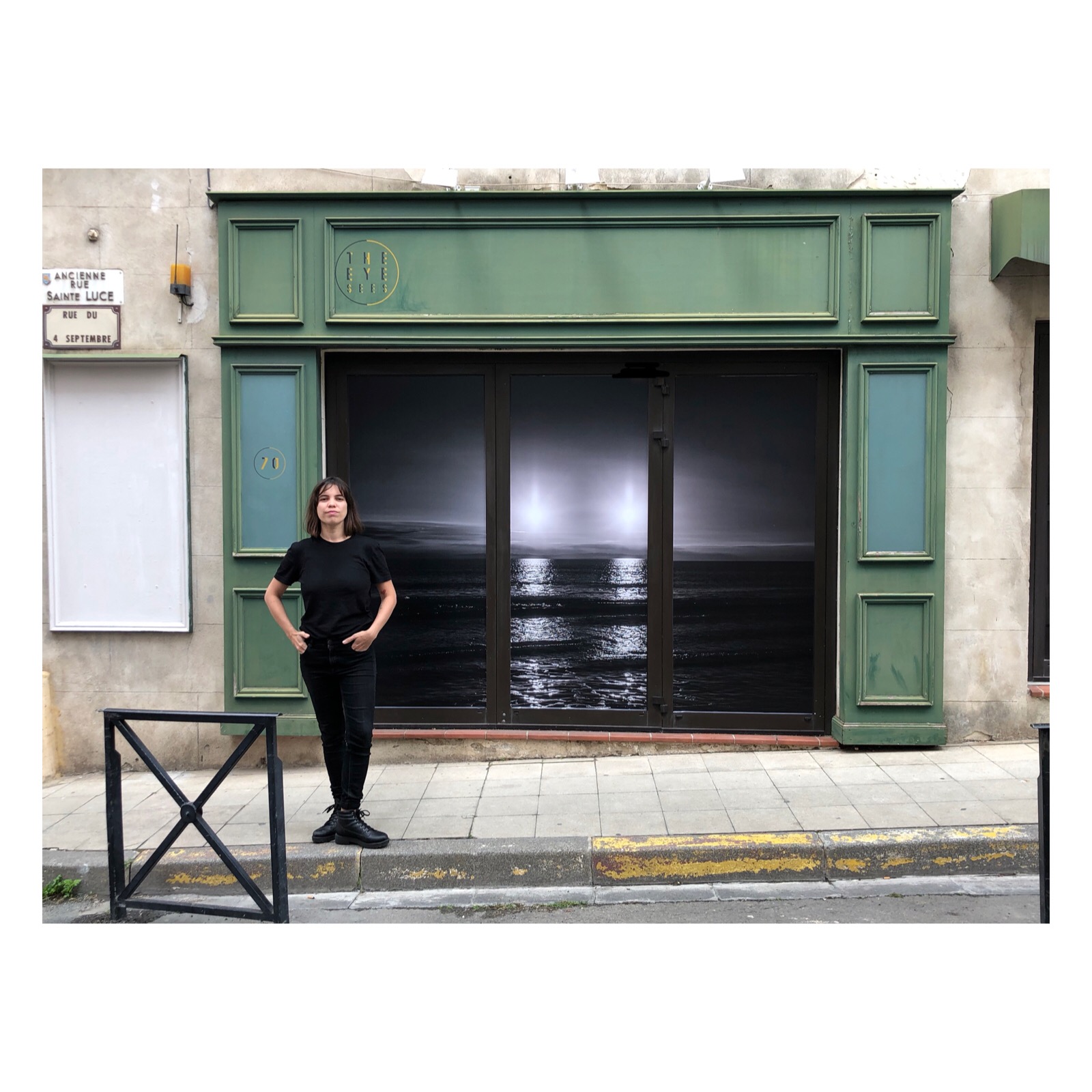

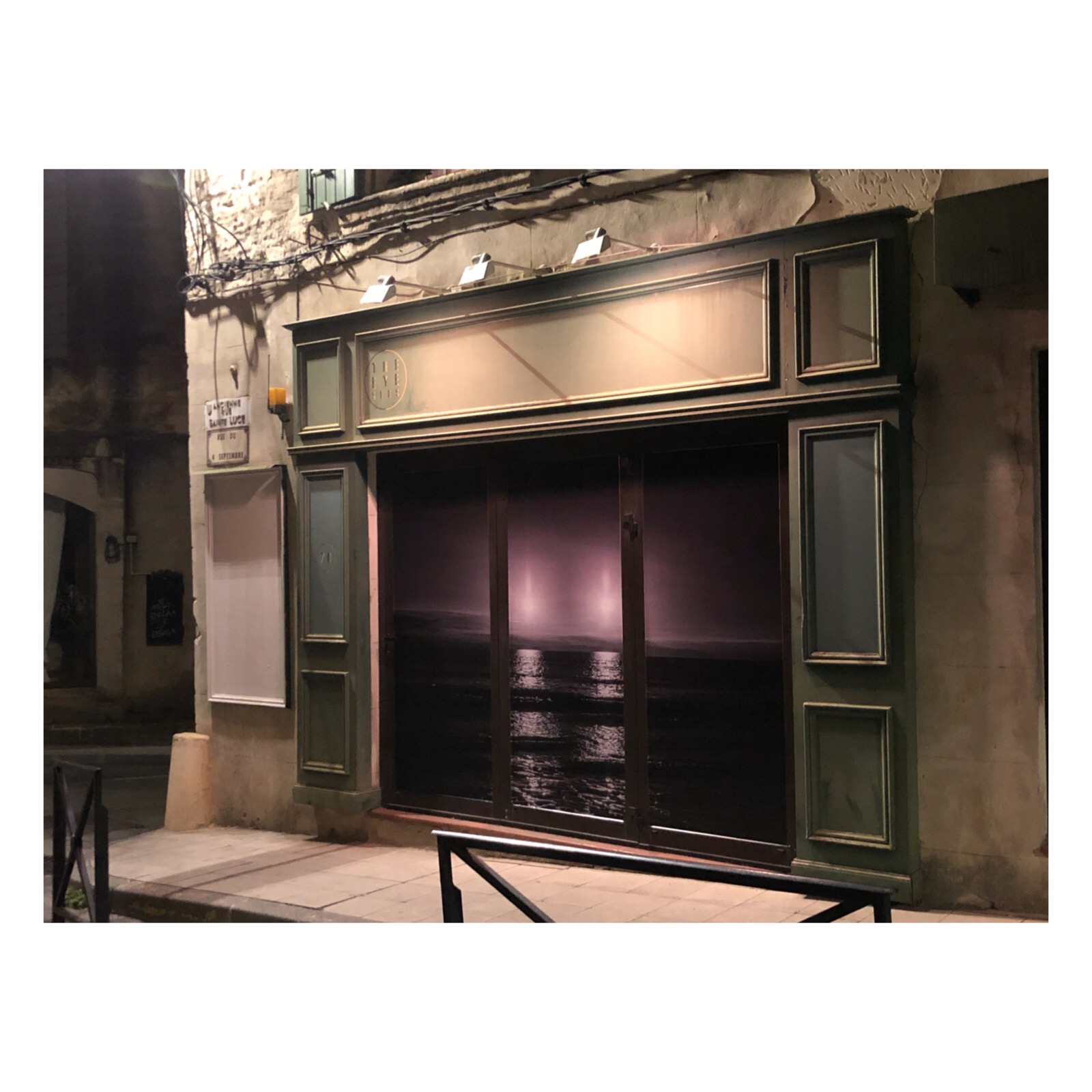






Entractes3 - Daniel Robles (Mexico/France) - Resilient1 - 03.02.19/04-04-19
“I want to give thanks to the divine
Labyrinth of causes and effects...
For forgetfulness, which annuls or modifies the past,
For habits,
Which repeat us and confirm us in our image like a mirror
For morning, that gives us the illusion of a new beginning...’’
“Je veux rendre grâce au divin
Labyrinthe des effets et des causes...
Pour l’oubli, qui annule ou modifie le passé,
Pour l’habitude,
Qui nous répète et nous confirme comme un miroir
Pour le matin, qui nous procure l’illusion d’un commencement... ’’
“Gracias quiero dar al divino
Laberinto de los efectos y de las causas...
Por el olvido, que annula o modification el pasado,
Por la costumbre,
Que nos repite y nos confirma como un espejo,
Por la mañana, que nos depera la ilusión de un principio...’’
Jorge Luis Borges
Since I arrived in France in autumn 2017 I started a series of abstract photographs and videos with which I work contemplation and silence.
Through conscious meditation I try to transmit in my images the evolution of my emotions, the adaptation to a new environment, culture and language.
My photographic work is developed in a traditional analogue line and the main subject of this series is the light of Provence, which has been a source and inspiration for so many artists throughout history.
Depuis mon arrivée en France à l’automne 2017, j’ai commencé une série de photographies et de videos abstraites dans lesquelles je travaille la contemplation et le silence.
À travers la méditation consciente, j’essaye de transmettre avec mes images l’évolution de mes émotions, mon adaptation à une nouvelle ambiance, à une nouvelle culture mais aussi une nouvelle langue.
Mon travail photographique se développe à travers une ligne traditionnelle argentique où la matière primordiale de cette série est la lumière de Provence.
Cette lumière m’ intéresse car elle est un élément constant de réflexion et d’inspiration, elle l’a été notamment pour plusieurs artistes à travers l’histoire.
Desde mi llegada a Francia en el otoño de 2017 comencé una serie de fotografías y videos abstractas con las que trabajo la contemplación y el silencio.
A través de la meditación consciente intento transmitir en mis imágenes la evolución de mis emociones, la adaptación a un nuevo ambiente, cultura y lengua.
Mi trabajo fotográfico se desarrolla en una línea tradicional analógica y la materia principal de esta serie es la luz de la Provenza, la cual ha sido material de reflexión e inspiración para tantos artistas a través de la historia.
@danielroblesfotografo
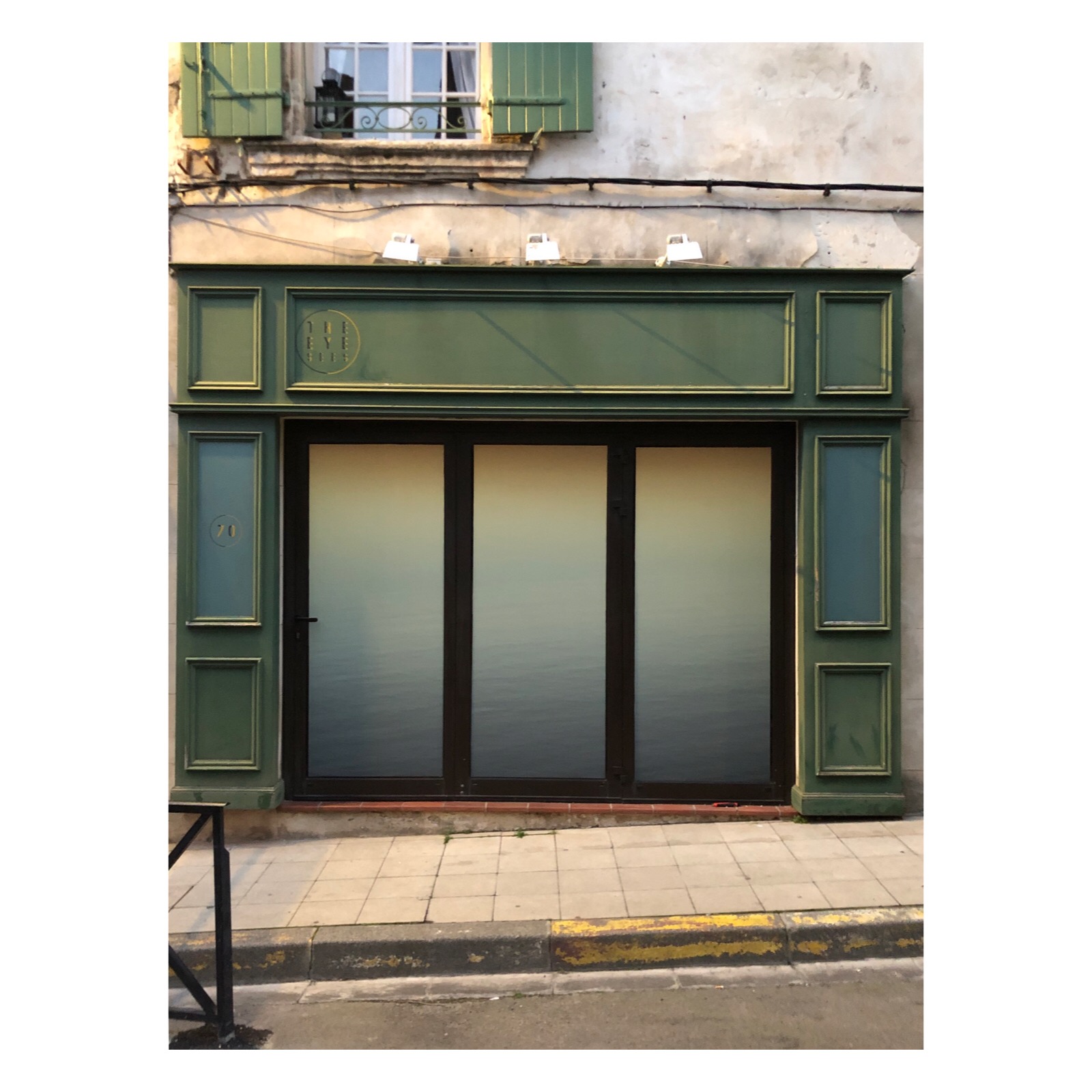
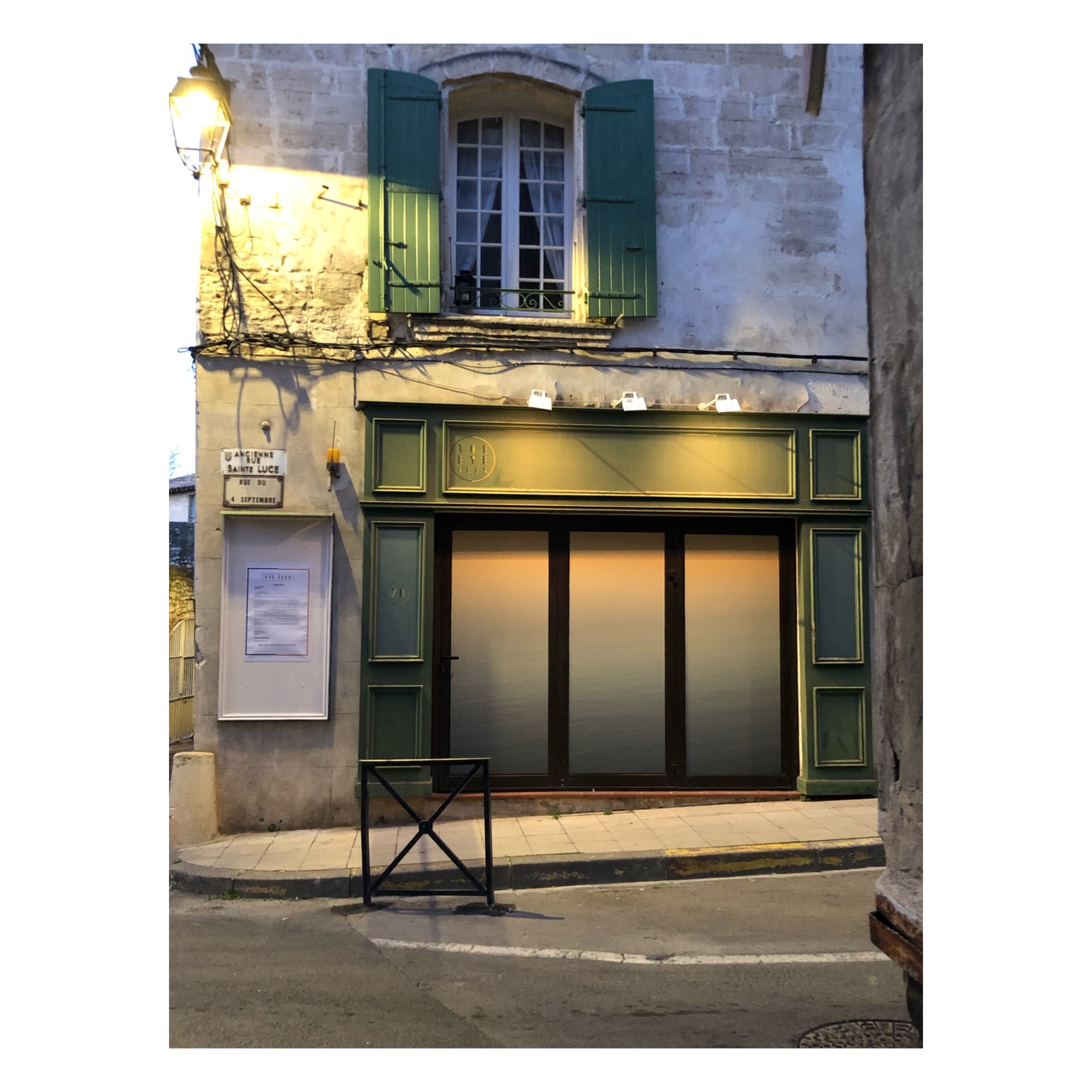

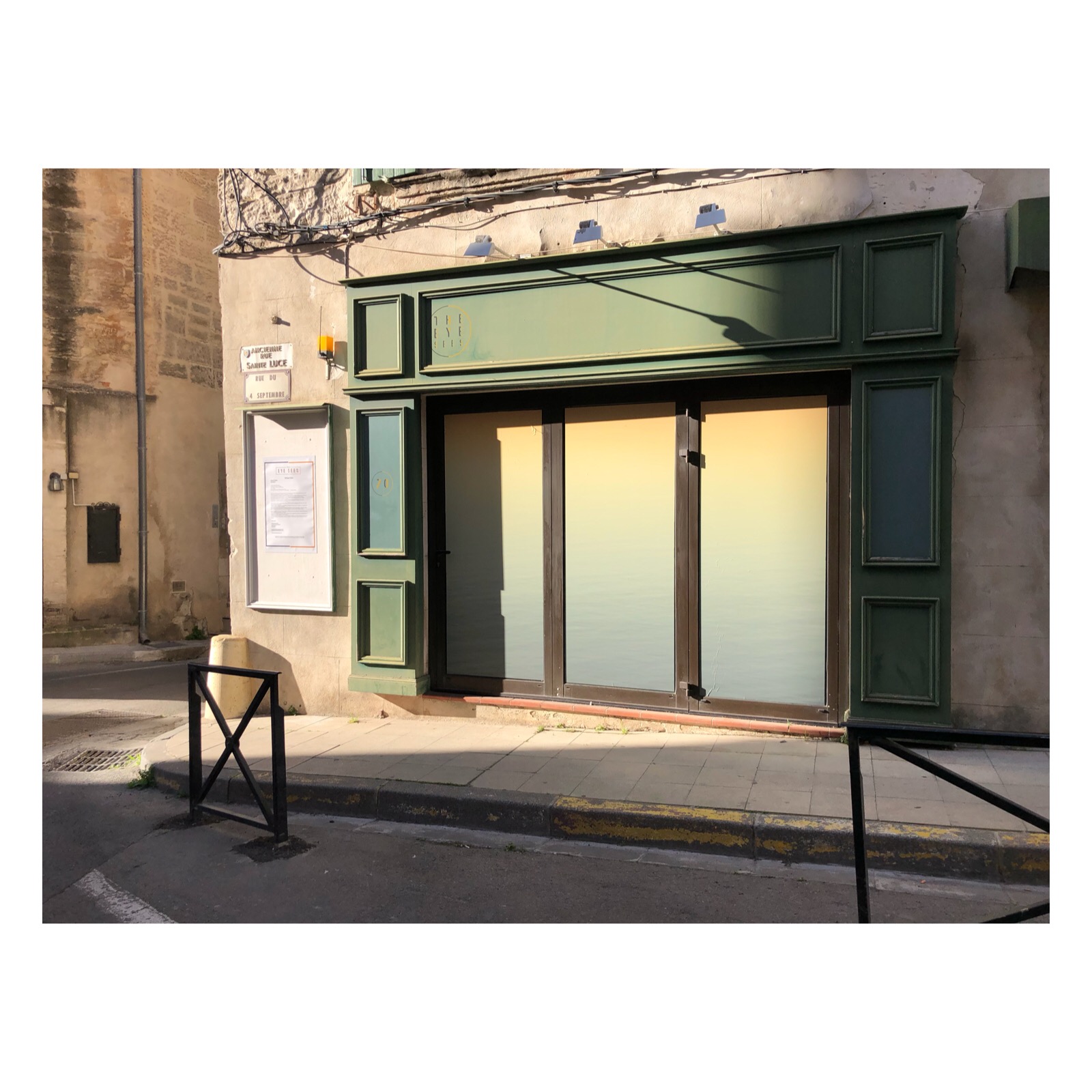
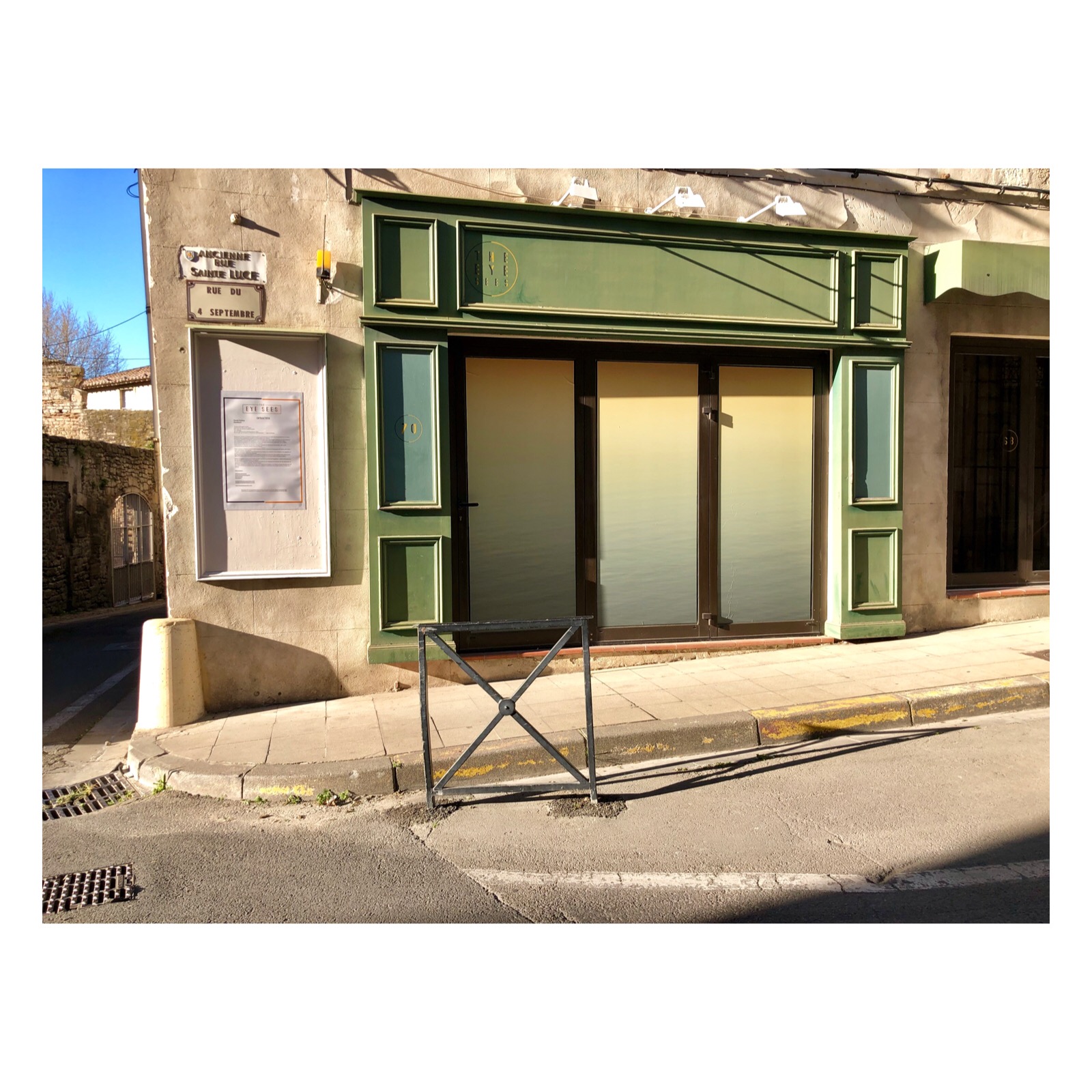




Entractes2 - Mike Sajnoski (France) - Triptyque by anatomical poetry - 22.11.18/11.01.19

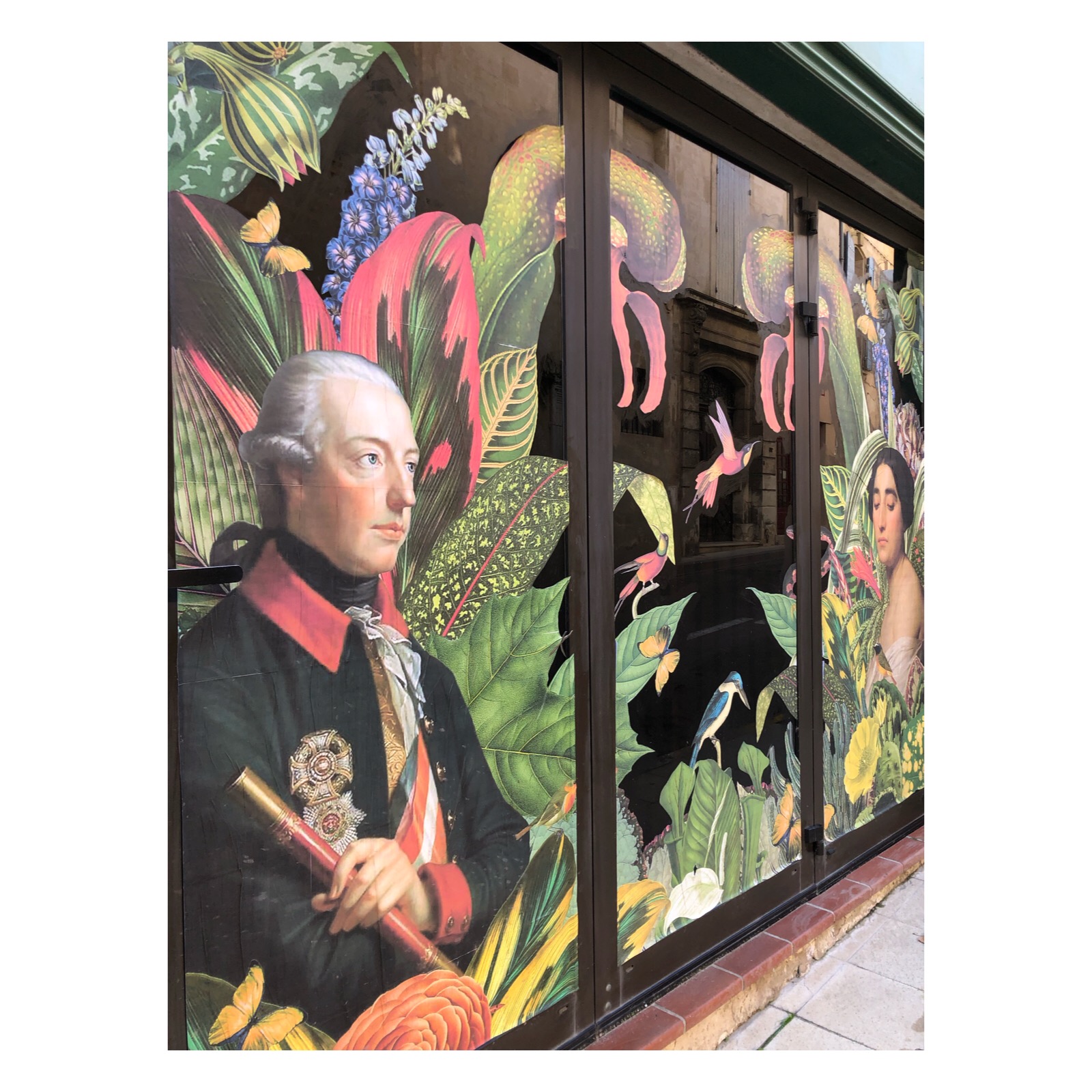


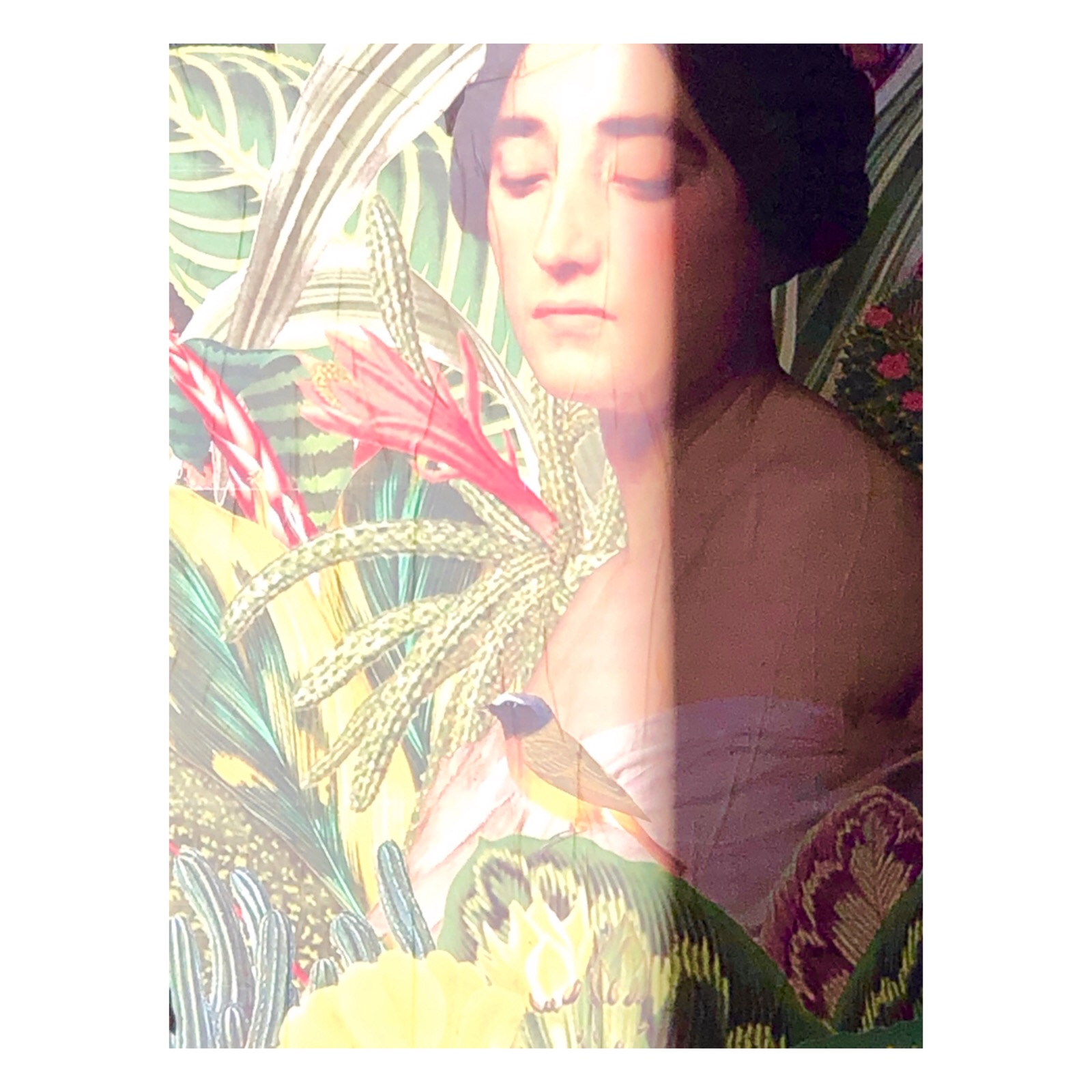
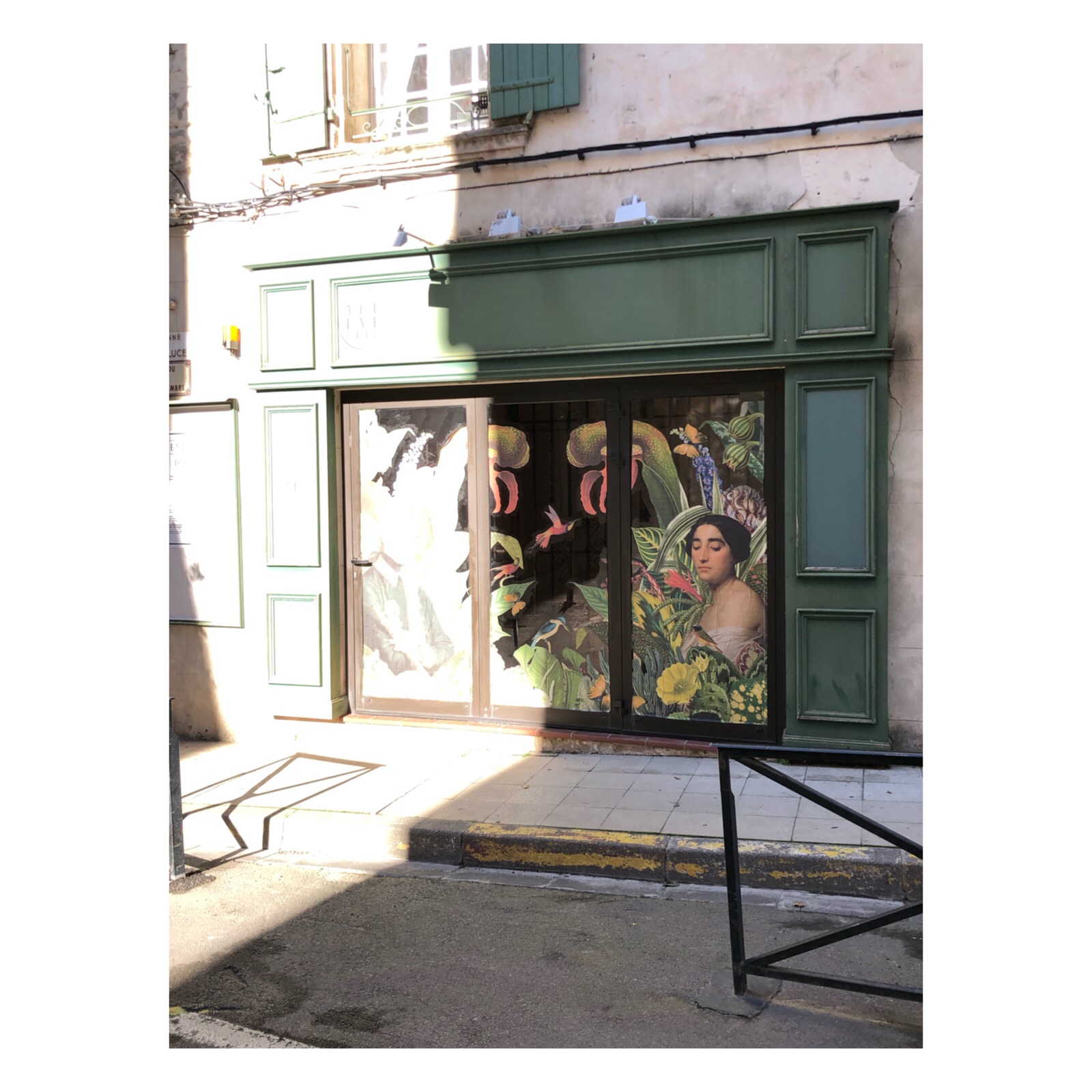
Entractes1 - Nicky Hirst (UK) - White Roses - 21.09.18/15.11.18
« A rose is a rose is a rose. » Gertrude Stein
Through the prism of Florentine pressed glass (embedded with the texture of sunflowers) and the dark tinted glass of the gallery, the British artist Nicky Hirst presented a quintessentially English still life. The image was originally taken through a theatre window in London.
A travers le prisme du verre imprimé ‘florentin’ (sur lequel est gravé la texture du tournesol) et du verre teinté foncé de la galerie, l’artiste britannique Nicky Hirst a présenté une nature morte typiquement anglaise. L’image a été prise à travers la fenêtre d’un théâtre à Londres.
White Roses was a collaboration between The Eye Sees and Domo Baal in London (UK).
